


ISSUE 13
This issue explores the forest as a metaphor for exploring different possibilities and ideas. iQHAWE creates a “set-designed forest” as a framing device that allows for a dynamic and ever-changing environment, which can symbolise the idea that a forest is a place of infinite possibilities.The placement of objects in the foreground, middle, and background can also serve to enhance this metaphor and help to convey the message we intend. Creatives thrive when placed in fertile ground iQHAWE MAGAZINE features 17 creatives who keep rooted. The creative conceptualization of this issue is focused on exploring the intersection of light, shapes, colour, texture, and imagination.
IQHAWE MAGAZINE TEAM
Editor-In-Chief
Renaè Mangena
Vice Editor Anastatia Nkhuna
Production Manager Hlengiwe Mkwayi
Content Producers
Michè Edwards
Ntokozo Mabuza
BTS Photography Thapelo Kekana
Nkateko Mondhlana
Graphic Designer Nombulelo Dlepu
CREATIVE TEAM
Creative Director
Renaè Mangena
Art Director Anastatia Nkhuna
Assistant Art Director Aza Mbavane
PHOTOGRAPHY
Photographer Retang Sebeka
1st Lighting Assistant Lerato Melchior Ntiso Mbawu
2nd Lighting Assistant Nkateko Mondhlana
3rd Lighting Assistant Bonolo Tlholoe
Digital Operator Mila Nkwada
BTS
Photography Thapelo Kekana
Videography Mihlayethu Nkobo
PRODUCTION
Production Manager Hlengiwe Mkwayi Production Assistant Tebogo Seageng
MAKEUP & STYLING
Stylist Namhla Thiwani Make up Bobby Beats
DESIGNER BRANDS
| Long Season | Muted Raggs | Thabo Kopele | | YONA |
FEATURES
Art Amogelang Montjane
Zanele Montle
Tshepiso Moropa
Jason Langa
Photography Mika Guliwe
Dineo Mtetwa
Nondumiso Shange
Assante Chiweshe
DownTown Thabz
Katleho The Guy Henry Hansen
Mishaal Gangaram
Film Ndivhuwo Mushanganyisi
Koketso Matabane
Nqobile Ndebele
Fro Sanaa
Sandile Mhlongo
This issue was proudly sponsored by the Department of Sports, Arts & Culture Special Thanks to Creative Nestlings, 99 Juta and Glow Hire Studio
To be YOUNG, BLACK! GIFTED and
If you have been reading our magazine issues for a while you probably already know that these editor’s notes read as diary entries rather than sums ups about the issue because without honesty and transparency we have nothing. The making of this issue was honestly one of the most emotionally draining experiences one could go through.
People only see the beauty which is encapsulated into a 30 seconds reel that is consumed for a shorter time spam or through extremely beautiful images that came from the creative process. There is so much that goes into us being able to put together an issue and making sure that we live up to the standards we have set for ourselves while still trying to stay alive and be present enough and not just be hollow beings caught up in passing moments. We are extremely grateful for the fact that we have grown so much as a publication, we have managed to bring our ideas and dreams to life but at what cost?
As young black people who are trying to make a name for ourselves and cement ourselves in history by bringing our dreams and ideas to life, we fight alot of battles, as they relate to our existence, our perception of self, our race, our economic backgrounds,our thoughts, our identity, our place in the world, our families, and honestly most of the times we are fighting ourselves. We don’t have a strong motivational ending that leaves you feeling like the battle is all worth it in the end because we do not have the answers. But all that we can say is your ideas are valid, they are important and they are necessary, we want you to bring them all to life. And like Ms Simone said:
“To be young, gifted and black
Oh, what a lovely precious dream
To be young, gifted and black
Open your heart to what I mean
In the whole world you know
There are a million boys and girls
Who are young, gifted and black
And that’s a fact!”
Til next time!
Renaè Mangena | Editor-In-Chief Anastatia Nkhuna | Vice Editor
EDITOR’S NOTE
FILM: 9. NQOBILE NDEBELE 12. NDIVHUWO MUSHANGANYISI 19. FRO SANAA 24. SANDILE MHLONGO 31. KOKETSO MATABANE VISUAL ART: 36. AMOGELANG MONTJANE 43. JASON LANGA 46. ZANELE MONTLE 53. TSHEPISO MOROPA PHOTOGRAPHY: 61. NONDUMISO SHANGE 64. ASSANTE CHIWESHE 69. MIKA GULIWE 72. MISHAAL GANGARAM 76. DINEO MTETWA 83. THABO MTHOMBENI 86. HENRY HANSEN 91. KATLEHO MAVUNDLA 98. UBIZO LEAESTHETIC 102. CLOUDFOLKS CONTENTS 6. THE CREATIVE PROCESS 58. CREATIVITY IS A PATH TO PRACTISING NEW REALITIES 97. DIGITAL ARCHIVING
THE CREATIVE PROCESS
Written by Ntokozo Mabuza
One of the biggest challenges we find ourselves in, is the constant battle with our own minds. With the average individual having more than 6,000 thoughts a day, the majority of which are likely to be driven by imposter syndrome or doubt, it’s not surprising that we have to keep ourselves grounded, in check, and in perspective alignment when it comes to making something and presenting it as we deem fit
Journey with us as we travel from one creative mind to another in this coverage of the Film industry comprising of:
Ndivhuwo Mushanganyisi
Nqobile Ndebele
Sanaa Mothabisa
Sandile Mhlongo
Koketso Matabane
And the Art industry, comprising of:
Amogelang Montjane
Jason Langa
Tshepiso Moropa
Zanele Montle
Takeaways that resonated with me, gathered from
both industry articles, that really speak volumes in shining rays of encouragement and a realisation that perseverance is part of the alignment process:
1. Try not to allow life circumstances to define you. Rather let them inspire you into creating passages of expression that build, heal, and reveal what your innate purpose in this life is.
2. Surround and immerse yourself within spaces, people, and places, that empowers_ you to grow and continue pushing on especially if you find yourself wanting to hang the boots and to let creativity and passion flow away.
3. Align yourself towards a vision, talk about it and collaborate with other visionaries to create a masterpiece
AND to this whole experience, one thing I can wholeheartedly say is that these conversations were held in an effort to extend knowledge, grace, inspiration and an appreciation for the similarities in obstacles that every creator has found themselves challenged by. And to which we gave thanks, and flowers to those who create to educate, inspire, and heal, for in turn we end up educated, inspired, and healed!
6 ISSUE13 IQHAWEMAGAZINE

7 IQHAWEMAGAZINE ISSUE13
“IN THE VISION WE TRUST, AND WITH IVISION WE EXECUTED A LOT MORE OF OUR WORK”

INDUSTRY: FILM
Interviews by Ntokozo Mabuza
NQOBILE NDEBELE
What do you get when you combine storytelling and visuals? Narrative Aesthetics!
Encapsulating his passion in visuals and storytelling, Johannesburg based creative visual storyteller, an absolute joy to be around, and the founder of Narrative Aesthetics agency, Nqobile Ndebele, recites on his emergence in the Film Industry and rewarding moments in his career, while dropping gems of knowledge around creativity in the industry.
Instagram: @visualsbydaddyque
9 IQHAWEMAGAZINE ISSUE13
WHO IS NQOBILE NDEBELE?
I am creative, I love telling stories. I love telling other people’s stories, realising people’s visions, essentially just making art. That’s who I am. Narrative aesthetics is a combination of me loving to tell stories, and creating aesthetics. So just bringing those together was something that really stuck with me so much. So I really love that name, narrative aesthetics.

WHAT DO YOU THINK ARE THE MOST IMPORTANT ELEMENTS FOR A SUCCESSFUL FILM, MUSIC, VIDEO OR COMMERCIAL?
I think the most important part is collaboration. If you’re the director you must understand that it’s your concept but it’s not going to be realised without collaborating with other people. I think having a sense of humility is also very important. Because sometimes you get in your own head and then you don’t open yourself up because you fear being vulnerable with something that is your own, something that’s from your mind. So I think collaboration is an important element to have just to allow yourself to gain different perspectives from different contributors and ensure that your project operates from a balanced view between subjective and objective perspectives.
WHEN IT COMES TO COLLABORATION, HOW DO YOU EVEN GO ABOUT COMMUNICATING WITH WHO YOU WANT TO COLLABORATE WITH AND BE LIKE, “YO, THIS IS WHAT I HAVE, HOW CAN WE MAKE IT WORK?
I think that’s one of the most difficult things because sometimes most concepts I think about are so far off into the fringes that I’m like, okay before I start I need to picture this through the lens of the person I’m collaborating with first. I start off by understanding who they are, what their inspirations are, and who their favourite artists are, because I think music is very important in this aspect in order to get a feel of them. I then proceed to ask them what kind of visuals they’re inspired by. I’ve also realised that asking them what their vision or story is allows me to target how they would want the project to look and feel like.
WHAT CHALLENGES HAVE YOU FACED IN THE FILM AND COMMERCIAL INDUSTRY SINCE YOU’VE STARTED?
I think the first thing is understanding that you have to have people skills. I’m someone who is quite reserved, I don’t like to be in people’s business but sometimes, it’s important to overcome that fear
10 ISSUE13 IQHAWEMAGAZINE
“Patience is another one because sometimes patience might become procrastination so try not to say “I’ll start when I’m ready”, you’re never ready when you can- do it, but also be patient in the waiting process because that will allow you to realise your vision as best as possible. So I’d say collaboration and patience.”
and anxiety, and just ask. You have to have the confidence to ask people that are not in the film space to help you realise your vision. Let’s take location scouting for example, looking for location is very difficult, because you can plan to shoot at a space that shows texture and you come across beautiful, old flats that fit the location description. In wanting to shoot and use that space you have to go speak to the caretaker, and that caretaker might not understand the fact that you want to make a documentary instead they’ll be worried about how you’re going to come into the tenants’ spaces. So you just have to have people skills to also be able to meet and deal with different personalities, even just beyond locations, which is a challenge that I’m working on. I am, however, enjoying the journey of being able to work with different personalities and meet them where they are because I can gain from them.
WHO ARE SOME OF YOUR BIGGEST FILMMAKING INFLUENCERS?
That’s a tricky question. I think this current generation of filmmakers, I’m talking about the people that are creating from this new age of social media and not through the studios. I think this new age of filmmakers of people who are going out there and just doing things from nothing, those are my inspirations because when I go onto Instagram, and I come across people who are my age creating visuals and films that they create inspires me so much.

11 IQHAWEMAGAZINE ISSUE13
“So I’d say, the people around us, the people who are our age and are doing this film thing, because it’s not easy. It’s not easy at all, especially if you have to come to it from nothing and with no one backing us.”
NDIVHUWO MUSHANGANYISI
Johannesburg based creative editor and visual storyteller Ndivhuwo Msuhanganyisi transports us into her majestic world of editing while translating her mystifying practice into an understandable and wildly fascinating manner. From having worked on documentaries such as Mutant and Johnny Walker The Ones Who Keep Walking, as well as a plethora of notable music videos, venture with us as we explore her mind while paying mind to the skills she’s learned to transpire those brilliant beautiful ideas inside into notable works that we watch and bring inspire creativity to come alive.
Instagram: @susies_knuckles
12 ISSUE13 IQHAWEMAGAZINE
When she’s taking a break from moon guarding, she’s probably mutating into an editing freak of mesmerising creation.

WHO IS NDIVHUWO AND WHAT DO YOU DO?
I am a visual storyteller whether it’s through the way I cut an edit, or how I tell stories as a director and how I play around with visuals, but on a professional level I am an editor - I really enjoy editing. Overall, I am a creative human being and that transpires into every aspect of my life, including my personal life, I am a visually driven creative and a storyteller who loves films, the making of films, a lover of music and storytelling through music videos as well, and all of these things kind of play into themselves towards my goal of becoming a triple threat. I’m also working towards my goal of being a director, I often find myself melting in this burning desire to create visuals that live in my head and being able to direct the flow of these ideas into materialising within the music realm is something I want to focus more on, more music videos and short film music videos because I feel like there’s a space for that now. So yeah, I am a film lover, music babe, and a badass editor.
I WAS WATCHING JOHNNIE WALKER, THE ONES WHO KEEP WALKING COMMERCIAL FILM, WHAT WAS YOUR CONTRIBUTION TO THIS MASTERPIECE OF KNOWING WHO YOU ARE AND TO KEEP WALKING?
Hmm, I don’t know how it’s linked to the keep on walking per se, but I think when I just look at that project as a whole, it was really about looking at creatives across the African continent as well as those who are from the African continent, but don’t live in Africa anymore. I think what I enjoyed about this project was the way in which it got handed to me. I received a call for this film that Amarachi Nwosu (a bad ass black female director doing hella dope things) was working on, and this became my first big girl brand project. I was incredibly tentative to work on it because of imposter syndrome making me believe I
couldn’t edit alongside experienced editors but the producer, Julie Machin, fought for me be to the one to take the edits because it needed to be done by a black person one, and it needed to be edited on an African continent, and I am so glad she did because my contribution to that film really was more experience based in the sense that I found myself immersed in the opportunity and learning things from my team that allowed me to approach editing through an experiential yet team-based view. It was such a beautiful thing to put together that showed me that even us as young black creatives in SA, you too, can work on things that are beyond you, one and outside of you.
I also worked on some music supervision. A lot of the music you hear in this film features a lot of African artists, and I tried my best to sneak in a few local artists. I think there’s a track on there by uSanele who’s like a dope producer. In all our respective parts we all do the best that we can and more than anything, it’s always about paying it forward and breaking the barriers that we have, the generation before us did it well and now we’re just going to be the ones that also go just as hard for each other.
For me, that’s what made this even more liberating in terms of putting together an editing team for that film, I had to pick somebody who was a lot more experienced than me to also aid and help me like Yoza Mnyanda-Siboto who was part of the edit team and is also a musician for Darkie Fiction. And that’s what we do as people. I think more than anything every job is such an opportunity to learn and do something, and if you can open the door for other people then do it. It makes your personal journey more exciting and informative.

14 ISSUE13 IQHAWEMAGAZINE
AS STRAIGHTFORWARD AS THE TITLE ‘EDITOR’ IS, WHAT EXACTLY DOES YOUR ROLE ENTAIL?
I knew I could edit because I had been editing already in varsity and knew the basics of editing. It was through discovering from the older kids that serious money could be made from editing. So, in my head I had it figured out that once I graduate I’m going to join a posthouse and edit. It was only after I left school that I learned that there’s two types of editing, there’s editing that is craft based (cutting) and anybody can cut things together and make it work. And I feel like a true editor and somebody who is really about the art of editing, a creative editor, constantly pushes the boundaries on the way in which you approach scenes and how you cut them. I feel like that’s when you really start becoming an editor.
And I thought I knew how to edit until I started editing, I realised, oh, actually I just know the basic kind of editing. And it was through working with the editors and observing how other people align things together, place certain effects and overlays where they needed to be, that I realised that this is cool and I want to put that more effort on that. So basically, my role as an editor varies, there’s some jobs that require me to just do the basics, and then there’s jobs that require me to be more creative.
You know how people talk about how anybody can do photography, because you have to just pick up a camera and shoot? That’s very true even for editing, we had to learn how to use Adobe Premiere Pro or Final Cut whatever you want, you just need to know how to cut slides, add this and that, and Instagram reels shows us that anybody can edit, which is true. However, not everybody has the ear for the right music to use for a particular scene or the timing
for when the music should come in because, emotion wise, this is where it will land better. That kind of editing comes with experience. My focus right now with my editing is on pushing myself creatively as an editor, because I need to push my brain to edit differently. Different photographers capture people differently and that’s the same for editors. You can give two people the same footage and they’ll do different things based on their own interest; what they know, what they like, what they gravitate towards, and we’ll pick different things purely because of our own perspective. So I think the role of an editor is to immerse yourself in other arts, which is why I believe music plays such a big role for me when I edit because of the feeling and the resonance of the music to the scene that makes it feel like the overall edit works. So, tap into other mediums as well and let that inspire you and pull towards the thing that you’re actually doing in order to make yourself a better editor.
SPEAKING ON USING THE ELEMENT OF MUSIC IN EDITING, HOW WAS YOUR EXPERIENCE WORKING ON THE MUTANT DOCUMENTARY?
Mutant was also one of my first big girl project also, I was working with Lebogang Rasethaba, Nthato Mokgatha (Spoek Mathambo) someone who I grew up listening too, and Sifiso Khanyile, a phenomenal director whom I also really admired, and I was scared; I didn’t want them to think I’m lame! At the time I didn’t know any other female directors and at that time, at that age, I had many insecurities and imposter syndrome, why am I here? How did I get here? but they were patient and understanding which was nice because you don’t always get that, we don’t always get people rooting for the underdog. So, during that time I had the privilege to work with my boss who was also one of my senior editors and who became an editor that I looked up to and drew a lot of inspiration from, and I wouldn’t have gotten through that project were it not for him.
Mutant is a special one for me because it was a defining moment where it showed me what my weak points are as an editor, while also showing me what my strong points as an editor are too, I’m always grateful for it. It was one of the longest projects we’ve ever been on.They shot that documentary over like eight years, and we went offline for like over a year, It was a lot of trial and error, figuring out ideas, executing them, and I’m very grateful for that experience because it showed me that no man, I’m onto something here, ivision ikhona! I’ve got the zeal to want to do the work.

15 IQHAWEMAGAZINE ISSUE13
“If you’re really about what you’re doing, just ask yourself: “How can I push this to become more than what it is?”. Be imaginative, explore, try trial and error.”
WHAT HAVE BEEN SOME OF THE MOST REWARDING MOMENTS IN YOUR CAREER AS AN EDITOR/FILM EDITOR?
I don’t think it’s happened yet.I haven’t worked on something that’s hit me with an “ah ha! This is what I’ve been working towards!” If anything I feel like I’m just getting started, I feel like this is generally just the beginning for me. There’s still so much room for me to find and have a defining moment. I will say that I had two turning points: the first came about as a result of almost leaving editing. The Johnnie Walker job was actually going to be my last job. I had a mindset that was set on not wanting to do this anymore, I kept thinking that I’m not cut out for this, asking myself “what the fuck was I thinking?” and the environment, the circumstances, and the general ways of things started making me dislike the thing that I love to a point where I was starting to fall out of love with editing. From that I guess the rewarding moment was, and I don’t remember who it was, it could’ve been Lebogang, and he was just like “babes, I need you to get over yourself”. I think the reward itself was the reassurance that I got from the people around me, people I had worked with, people who had heard about me, and them reassuring me that I’m on the right track.
16 ISSUE13 IQHAWEMAGAZINE
“Surround yourself with people and companies who care enough about you to allow your creativity to vibrate higher and in a way that fulfils you and the company you’re offering a service to!”

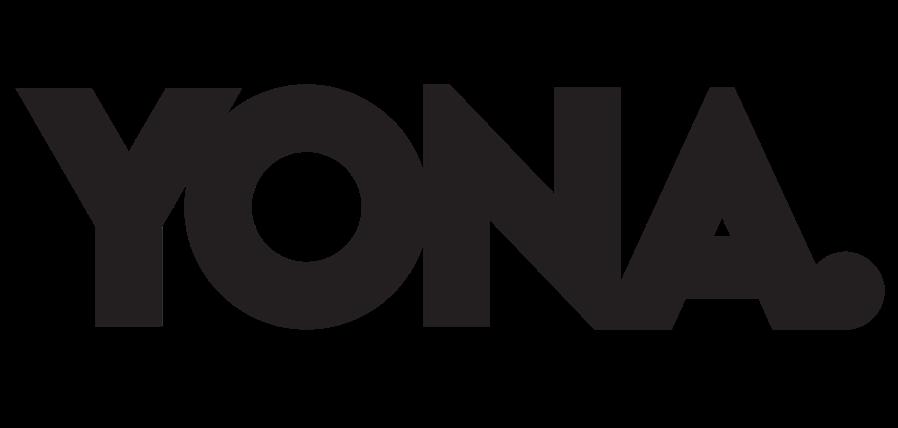 Flowers From Above March 2021
Flowers From Above March 2021

FRO SANAA
from eMgababa
and ubuthi wes’trata.
Sanaa Mothabisa takes us through his journey of affirming and using his talents and skills to break the borders and the face of creation within the film industry. From the joy in his world, Zion, to the joyful stories he documents around his community, brother Fro has learnt a couple of tricks, or two, on how to expand and broaden his love and passion for creativity. Learn, grow, and feel inspired as we explore the peace from his mind while learning from a piece of his mind.
Instagram: @fro.sanaa
19 IQHAWEMAGAZINE ISSUE13
Emanating
with little to no room for igwababa, storyteller
WHO IS FRO SANAA?
My name is Sanaa Mothabisa. I grew up in Pimville Soweto, Zone 1 and I’ve been in Pimville all my life. I started to travel and experience other places when I went to varsity. I studied film and television at UJ, by profession and career I’m a Film Director. I’m interested in passion projects, I even have my own passion project titled Zion - a celebration of spirituality and religion, and the clothing label that you see today, that I’m sure we’re going to talk about [chuckles] comes from the film itself.
The whole idea was to continue the messaging, using other mediums and other art forms because it’s one thing to watch the film and get the message but if you see all these necessities and objects that kind of remind you of the messaging of the film, it serves as a nice conviction and feeling that wherever you are you can still be reminded by the messaging. So, I started with the T shirts, plain white t-shirts. Even today, I still love to tell the story through white t-shirts, because for me it feels like a canvas like a white canvas and then I’m putting things (art) onto it. I would love to use colour some time but for now I think it’s really important for me to continue with the white, but as the perspective grows colour will come into play.
Right now, I am working on a range, dropping slowly by surely, getting my perspective, the cuts, and the proportions that I like, because it’s also challenging to make things for yourself that other people would love. What I used to do before Zion I used to make clothes for myself and that mentality is still alive and kicking and has now grown into considering other people and other cuts and sizes, so I’m just giving grace and patience to that process.
AS SOMEONE WHO STARTED YOUR CAREER WITH THE MOST ACCESSIBLE TOOL SUCH AS YOUR PHONE, WHAT WOULD YOU SAY ARE SOME OF THE IMPORTANT ELEMENTS FOR A FILMMAKER, FILM DIRECTOR, ASPIRING FILMMAKER USING A PHONE?
Yeah uyabona (..spinashi broer wam..i) this is the most interesting thing, sort of lends a sense of storytelling. Wherever you are. Whether you’re travelling, you’re with family or friends. There’s only one device that you always have, you know, and that device is so powerful to modern stories or that present story of what you see. And with this device you can capture the moment in real time. And even if there’s a subject, that subject is not intimidated by you trying to capture that moment, or archive it so it’s really the next frontier of storytelling.
I think we just really have to consider how we’re telling the stories through this device, and one of the things that I really love doing while shooting is exchanging knowledge, having conversations, travelling and talking about storytelling. Just so when it’s done, it’s done correctly, because it’s so easy ukuyinyatsa (look down on yourself) because it’s coming from a phone. I think my goal is to make a capture be something that has substance, to make it more than a TikTok video, to make it tell a modern story that can be archived and shown to other generations.
Mawushoota nge phone they’ll even say like, please send me on WhatsApp and so many cases like this have happened so now after I take videos or pictures I also take
their numbers and after and I send it. After I send it, it then becomes their profile pictures or videos that are posted on their stories. I love that and I’m glad that I’ve found a way to interact with my subjects that’s so fulfilling for both me and them.
WHAT ARE SOME OF THE MOST REWARDING MOMENTS IN YOUR CAREER AS A FILMMAKER?
On the 1st and 2nd of December 2021, I launched my film that I shot for four years. Uyabona after graduation I initially told myself that the next time I would feel this pride and accomplishment would be on my wedding day but it turned out to have come quicker and in the form of launching my own passion project film! As much as I’m saying that it’s my accomplishment, that day wasn’t about me, and I felt so much fulfilment and it changed my life. I gained so much conviction after that and that’s when I fully decided that this needed to be a lifetime project, and how I am going to continue with this same messaging using different mediums of art.
NOT ONLY ARE YOU A FILMMAKER, YOU ARE A CREATIVE RESEARCHER TOO AND WHEN IT COMES TO CREATING, WHAT ELEMENTS DO YOU INCLUDE WITHIN YOUR CREATIVE PROCESS TO ENSURE THAT YOUR IDEATION CONCEPT COMES INTO FRUITION?
So, I started in this industry straight after varsity where I worked at Bomb Commercials under the commercials department, bes’shaya amaAd yabo and I was a creative researcher, writer and director’s assistant. Imagine being thrown into that space straight after varsity it wasn’t by

20 ISSUE13 IQHAWEMAGAZINE
intention like “yo, you’re hired, you’re talented”. You have to prove so much to everyone to see why you deserve to be in there. I literally learned about the industry, writing, creative research, and like making an ad, there are so many elements to consider before you even reach a certain level. Like when you’re making an Ad you have to understand the nuances of black families- what it is, kwenzakalani, because you can’t portray a wrong depiction of the scenario because it’s so embedded in our culture. So it’s crazy that I was you asking me about research. I was in a research meeting izolo, and to add onto that I also love archives. Which is why I call my practice archival more than anything, so research is really important when you are starting a project, and intensive research depends on the weight of the project.
Even when I was working on Zion, it took three years of research for every religion represented. From meeting Pastors, meeting Rabbis, meeting Apostles, Sangomas, Rastafarians, everything that is close to belief, I had to dig deep into those spaces. So when I come to shoot it’s not just a take away type of thing. They would know that I’m there being a fly in the room to record them doing what they like every Sunday or any other day..
I do research and I’m always reading up stuff on the internet, TV, internet, things you can just type out things and find out. I love old photographers like Ernest Cole, Alf Khunalo, Bob Gosani, Dr. Peter Magubane, a lot of people who went really deep into their works, extending their visual language, their visual camera, and it’s so crazy that since k’dala they have to go through so much to get an image and then now
just we just have our phone you don’t have an excuse to shoot ekasi, or to even shoot in general, like we have the access to have every element of this generation captured and archived so that abanye mabayenza iresearch they’re researching our works.

YOU’VE ONCE HOSTED ZION, A SOUTH AFRICAN UNIVERSITY TOUR AIMED AT EQUIPPING FILM STUDENTS WITH LEARNED KNOWLEDGE FROM THIS TALK, WHAT GAP HAVE YOU NOTICED THAT IS STILL WITHIN THE INDUSTRY ESPECIALLY FOR ASPIRING FILMMAKERS?
Let me start by sharing my experience. I wanted to study at AFDA but I couldn’t afford to go there and then I went to UJ as an alternative, NSFAS baby [chuckles]. My reason for wanting AFDA was so that I could be in a fully alternative school so that I could have that freedom and ability to attend whereI can fully be immersed with the practice. And from that I wanted to go to these schools that are not as privileged to go and tell them about the industry experience so that they can have an idea of what the next steps are. Just so that when such conversations are had they can reflect on what someone else has done or even place themselves in the mindset that there’s also creative research as a career itself.
I wanted to be the change that I wanted to see, you know, and sharing about these things, I think, when you start and get this information earlier in your practice, or in your studies, you somewhat get an idea of what you need in order
21 IQHAWEMAGAZINE ISSUE13
to be this person or creative, to go in this line of career. And, it’s always interesting, because I ended up even if it’s not in varsity, or ekasi, people, or primary kids or high school kids, it’s like, you learn a lot about yourself, as you are reminded why you sort of started this thing, you know, because they will ask you the most random question, which you never think about it because for you it’s something that’s already embedded in your heart, in your mind ukuthi when it’s like this, I do this, when it’s like this, I respond like this. So I learned a lot about myself.
Every time I come back from a shoot or from learning something, I just want to write, I just wanna talk to them again. Like with the LPO, Let’s Play Outside, it’s an organisation, by Frypan Mfula and right now we’re working with kids from grade eight, and nine, and I just gave them a task and I’ve given them a few weeks to finish their task and once I go back, I’m going to review them. So it’s nice from that, also, you’re going to learn oh okay, so this is how you sort of imprinted what I was telling you and made it this beautiful observation.
It’s important for us who have seen at least a glimpse of the industry to go back and prepare others so that we can have a lot of black people that are also ready to be part of the industry as well
story that I wanted to tell. So you don’t have any excuse to not be seen by these people. Like, in this generation, there’s no gatekeeping, there’s no one person that will get your mind where your life should be. We even see that content creators are making a living out of this thing, and it’s just purely off their phones and this posting should encourage you to put your own work out.
I think that’s my greatest advice: you don’t know who’s looking, and if they’re not looking, go and email them and send it to them so they can look. Their emails are there, go to a company, go to their contacts, there’s an email address waiting for you, from any admired company that you want to be in and get assistance as long as you have something to show. Through doing things like that and putting yourself in the right spaces, go find out about people that are showing or screening and just make sure that you want to be in spaces, like the Joburg Film Festivals which are here for us. Go to these meetings, meet other people, people travel for festivals, and you never know where your luck could come from.
FROM YOUR EXPERIENCE AND LIFE JOURNEY, HOW WOULD YOU ENCOURAGE AN ASPIRING FILMMAKER TO EXPOSE THEIR WORK ENOUGH TO BE NOTICED BY AGENCIES LIKE BOMB COMMERCIAL AND THE LIKES?
In this day and age, and I can’t stress this so much, because right now we are literally like at a part in our lives where you can post things online, on Tik Tok, Instagram, Linkedin, Facebook and YouTube or create spaces to showcase your work physically. Go after doing something and when you’re looking at something, I always praise people that took the leap and edge to put their name behind something and say “I made this, I’m gonna post it, I’m gonna celebrate it because it’s mine.” It’s an honest description of what I want from the
22 ISSUE13 IQHAWEMAGAZINE
.
“So it’s just putting yourself in the right spaces with the right people, and then most importantly, posting about your work and being proud of your work, it doesn’t matter how you shot it, as long as it’s an important and honest story. Stories are better than the tools and mediums that we use.”
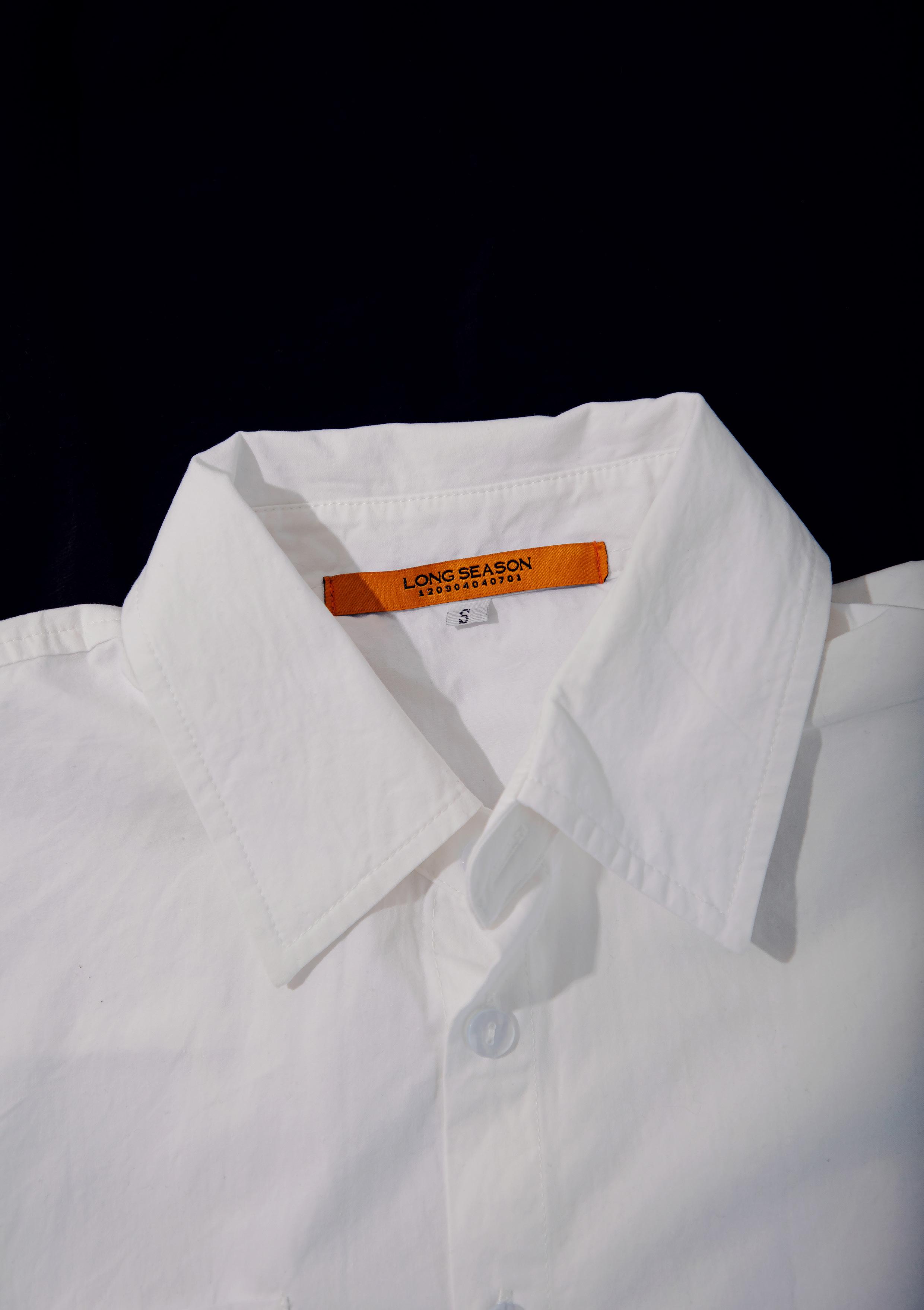
LONG SEASON LS Button Up Shirt – R1 800
SANDILE MHLONGO
Having worked on a plentitude of productions from Nike Open Air Air Max Day and Multichoice origins to, commercials airing locally and internationally. A sensational magician, who isn’t afraid to believe in what the eye can’t see, Soweto based and explorer Sandile enlightens us with knowledge on his craft, the emergence of The Uniconz, as well as his enchanting and mystically magical creative abilities.
Instagram: @whereareyoutalent
24 ISSUE13 IQHAWEMAGAZINE
“Proof of Concept ‘’- having an idea and doing it whether supported or not, is a saying firmly believed and put to practice by self-taught art director, experience maker, conceptualizer, and product designer.

WHO IS SANDILE MHLONGO?
Sandile Mhlongo is a multi-disciplinary artist that refuses to believe that anything is impossible and believes that talent is a skill, and anyone can get it if they invest time in it. They were born in Soweto Baragwanath Hospital on the 22nd of February 1994. And they have lived in between the township and suburban areas in the South of Johannesburg. And they have sort of grown as a hybrid human between the suburban side of life and gassy life, and I think that’s the moment that sort of gave them time to believe that nothing is impossible. Sandile expresses themselves in many mediums one of which is experiential arts and clothing through the streetwear The Uniconz [Unique Iconz] and they also practise as an art director for film building sets and making people’s imaginations come to life.
[FOLLOW UP] DIVULGE ME ON WHAT UNIQUE ICONZ IS AND WHAT IT MEANS TO YOU
So, The Uniconz is a shortened name for the Unique Iconz. When you take out the Q, U, E, I, it becomes Uniconz, and essentially it was the beginning of possibility. Uniconz sort of serve as medication (in relation to clothes) in times of doubt, to keep pushing through, and to remind me that no matter which direction life goes it needs to happen. I felt this need to create it so that someone knows that they’re being rooted for and encouraged throughout the daily hustles of life. It sort of came from a point of self-doubt that had started in high school, in 2011, and the concept amplified through being part of the annual school fashion show. Through that Sandile realised that he has style and from there he decided to make a t-shirt that came at a time when people were believing in Unicorns, and Sandile kind of saw that as a funny way to make it a symbol of possibility.
With clothes being an armour, I realise that the power of clothes could actually be more powerful if they actually spoke back to you, for example, wearing a jacket that says In You We Trust, that sort of visual reminder for yourself, and those around you, that whatever you do someone out there trusts in you to do it. And through that Uniconz sort of became a platform to creatively explore ideas around selfdoubt and mental illness, which is one thing that most artists suffer from. So, we sort of hide coats of self-belief within clothing to help people, while also embodying and spreading the message that anything is possible- through that, The Uniconz sort of became a symbol of possibility.
In 2016, the Unicornz collaborated with RHTC to bring up RHTC Playground, which was a store that sold local brands, and through a company called The Playground, the Unicornz collaborated with RHTC and fashion maker Computer to make retail furniture that is mobile friendly for brands to be
able to pop up anywhere without needing a store. And then from that, Sandile learnt how to design and assemble furniture, and someone saw Sandile as someone who could put things together and asked them if they knew what Art direction was. From that interaction Sandile spent the whole night researching what Art Direction is and woke up an Art Director the next morning.
HOW DID YOU START YOUR CAREER AS AN ART DIRECTOR AND PRODUCT DESIGNER, AND WHAT INSPIRED THE CAREER PATH?
To be honest, all these things sort of, as funny as this is going to sound, all these thing is kind of like chose us, and we didn’t have a choice but to make a career out of it because in most times, we never really were at a point of introduction, we just
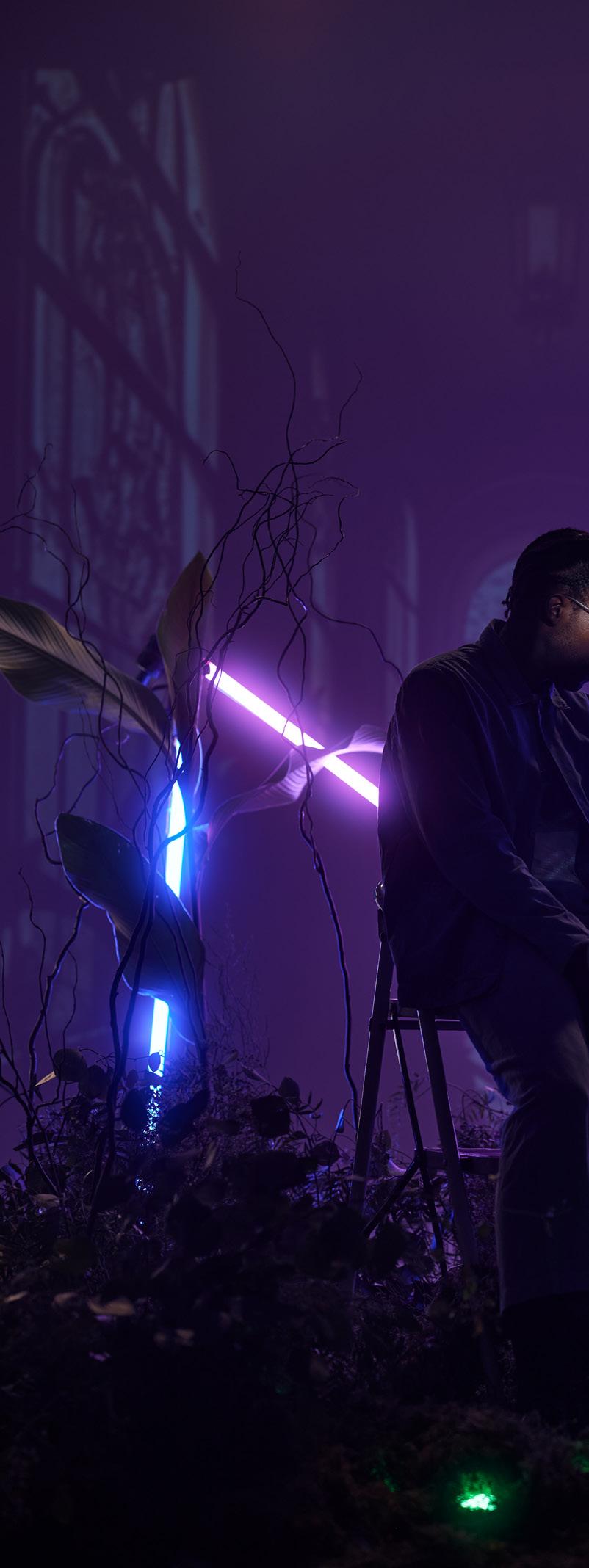
26 ISSUE13 IQHAWEMAGAZINE
sort of always found ourselves in the middle of the situation, and had to react from that. And through that, we grew over time, and realised that all these things are opportunities to grow, and we realised that through it, it actually almost feels like a dream. Because you know how, like, within a dream you never know how you got there but you just get there type situation and you have to choose how
from that, we realised that we can only learn by growing, and we’ve been blessed enough to live a life, where to go to school (of creative life). Because that’s essentially what it is every day we wake up, and we try to figure out how to make ideas tangible before us. It’s been a really huge blessing being open to being a student for as long as you live and realise that like you are never actually really a professional because there is always something new to learn and the industry is always changing. And by staying open to learning, and, to a certain extent not having a plan, you kind of stay open to life showing you the different directions that you can go, because I think for me, the only plan that I had was that I wasn’t going to work a nine to five. I worked nine to five when I was 16 folding T-shirts every day and one day I sat and realised that this is actually not for me, and I didn’t know what was for me until I found it.
Constant experimenting and looking at what’s happening out there and talking to people and trying out new things until you find that thing for you. And also you don’t need to find that one thing. It can be the many things because in our life in our 28 years of life we’ve been so we’ve been a painter, we’ve been an artist, you’ve been a sketcher, we’ve been a video maker, we’ve been a set designer, we’ve been a clothing maker stylist, and soon too soon, and soon going to be like a liquid stylist, whatever that means. It’s all a matter of doing what you enjoy, following your heart and it will take you where you need to be and trusting that you’re always going to be where you need to be.
IN YOUR OWN WORDS, WHAT DOES ‘PROOF OF CONCEPT” MEAN TO YOU?
you react to the situation if you’re going to rise to it. Sandile’s always been curious as a person, and by virtue of that I think our curiosity led us to the career path that we were chosen to be in. And to be honest, we never knew that any of these things existed and are possible until we did them.
So, I’d say the points that kind of turned everything into a career was when we just started doing it and
So, for me what proof of concept means is actually having an idea and doing it with whether someone is going to support it or not because that’s essentially what gets you ahead as a human being, no one wants to hear what you’re going to do, they want to see what you’ve done. And a lot of the time people can only trust you with ideas after seeing the level of care and attention that you take to ideas. Unfortunately, we live in a world where you spend like 15 years of your life at a tertiary level, if you’re in a schooling system getting a degree but after you go outside, and you have your degree, and technically, theoretically, your degree is supposed to unlock the doors for you. But when you get to the door, and you knock, they ask you about experience.
And for me proof of concept is it’s just that it’s a visual experience or a cyclical, tangible experience of ideas that people can interact with in order for them to not only trust you with their ideas, but to also be able to invest in your ideas too. Because
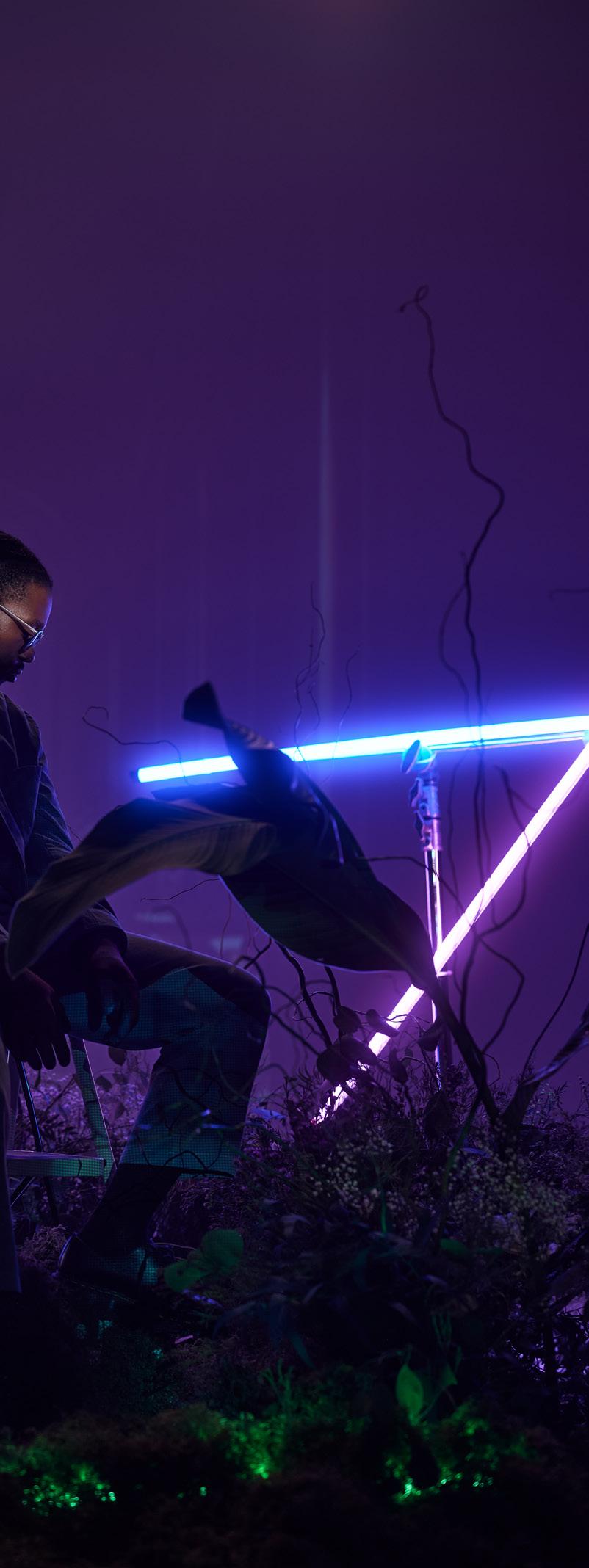
27 IQHAWEMAGAZINE ISSUE13
it’s easier for someone to reach into their pockets and it’s another thing to excite their mind, and proof of concept is just that. Like at the end of the day, the concept is imagination, you know, and you gotta prove that you can make that imagination real. That’s how people see you as a magician.
WHEN IT COMES TO YOUR CREATIVE PROCESS, WHAT DOES IT ENTAIL, ESPECIALLY AS AN ART DIRECTOR/CONCEPTUALIZER?
My creative process is the same with everything that I do. It’s 70% research, 15% sourcing and 15% execution, and for me I realised that the more you put into the research, the more likely the execution will read off well because you prepared for it. Similar to what Professor was doing in the Money Heist, he wouldn’t have been able to make that heist successful if he didn’t do the research that he needed. And by the time he got to the heist all the research was done, which made the heist a lot more possible because in the research phase that’s when you test an idea, theoretically, and you find that other people have done the idea, because there’s nothing actually new. And after you’ve found everyone that has done a rendition of the idea, you take the best out of each one and bring it into your exploration of the idea. And that essentially allows you to have a unique and creative output.
There’s this book called Steal Like An Artist, my process is sort of based on that book, and it essentially liberates you as a creative person because the first thing that it wants you to come to terms with is that nothing will ever be original, something has been done. And I think for me that’s what I believe gives an artist an upper hand, the ability to research deep enough and spend the most time on research, then when you get to the execution, when you get to the sourcing, you know what you need to do from the research. And then execution is just a matter of like, putting things into place.
So, I’d say, my process is research heavy, observing versions of that idea that failed, and how you can improve on it. I’m really huge on innovation, there’s already too many things done already so might as well work with what’s there and recontextualize it.
WHAT HAVE BEEN SOME OF THE MOST REWARDING MOMENTS IN YOUR CAREER THUS FAR?
I’d say I can count the accolades but for me, the most rewarding moments in my career thus far, is the idea that I can wake up and wonder what it is I want to do.
Because that’s a luxury that not many people have, the fact that I can wake up in the morning and think to myself, what do I want to do today? Or the fact that like, I can wake up in the morning, and think
to myself that I want to go to Paris and actually do it. I think for me, those are the most rewarding moments in the grand scheme of things. But in terms of accolades, I’d say seeing your thoughts come to reality and the look on people’s faces especially their eyes when they actually see that idea that they had in their head manifest in front of them. Like the look in their eyes is the most rewarding thing because they beam like a kid on Christmas or seeing a rainbow for the first time. I once worked on an experiential launch event for Reebok and Neo Serati last year, and one of the brand managers for Reebok sort described the experience as a “pupil dilating experience”, and pupils only dilate when people see something that’s exciting, when they’re with someone they love, or when they are on drugs. So, the fact that they described it as that for me was like really pleasurable to hear that it makes people feel that way.
YOU’VE WORKED IN A PLETHORA OF COMMERCIALS, MUSIC VIDEOS, AND YOUR CREATIVE CONTRIBUTION LEAVES AN EXCEPTIONAL MARK, ON THE PROJECTS YOU’VE WORKED ON. WHAT DO YOU THINK ARE THE MOST IMPORTANT ELEMENTS TO HAVE AND USE TO BE SUCCESSFUL IN THE ART DIRECTION/PRODUCTION DESIGN INDUSTRY?
Patience. Patience and precision. Those are the most important things, patience because it’s a waiting game between the jobs, and patience is needed for you to understand the brief, you can’t read it quickly, you need to take your time with it and a lot of patience is needed in the research aspect of it. Precision comes in the execution and the turnover aspect because usually you’ll sort of feel like there’s not enough time to execute and so because of that you need those two elements to help you understand and become a successful art director. If you don’t allow yourself to be patient then you won’t fully understand the world that you’re trying to build, be it music videos, films and commercials, they revolve around the world you’re building. Even God took their time to make the world as we know it, so a lot of patience, precision, and also letting go of the idea of perfection, because everything is as perfect as it needs to be at that moment in time, as long as you do your best, that is enough because that’s all you ever had to do eventually everything will always work out.
28 ISSUE13 IQHAWEMAGAZINE
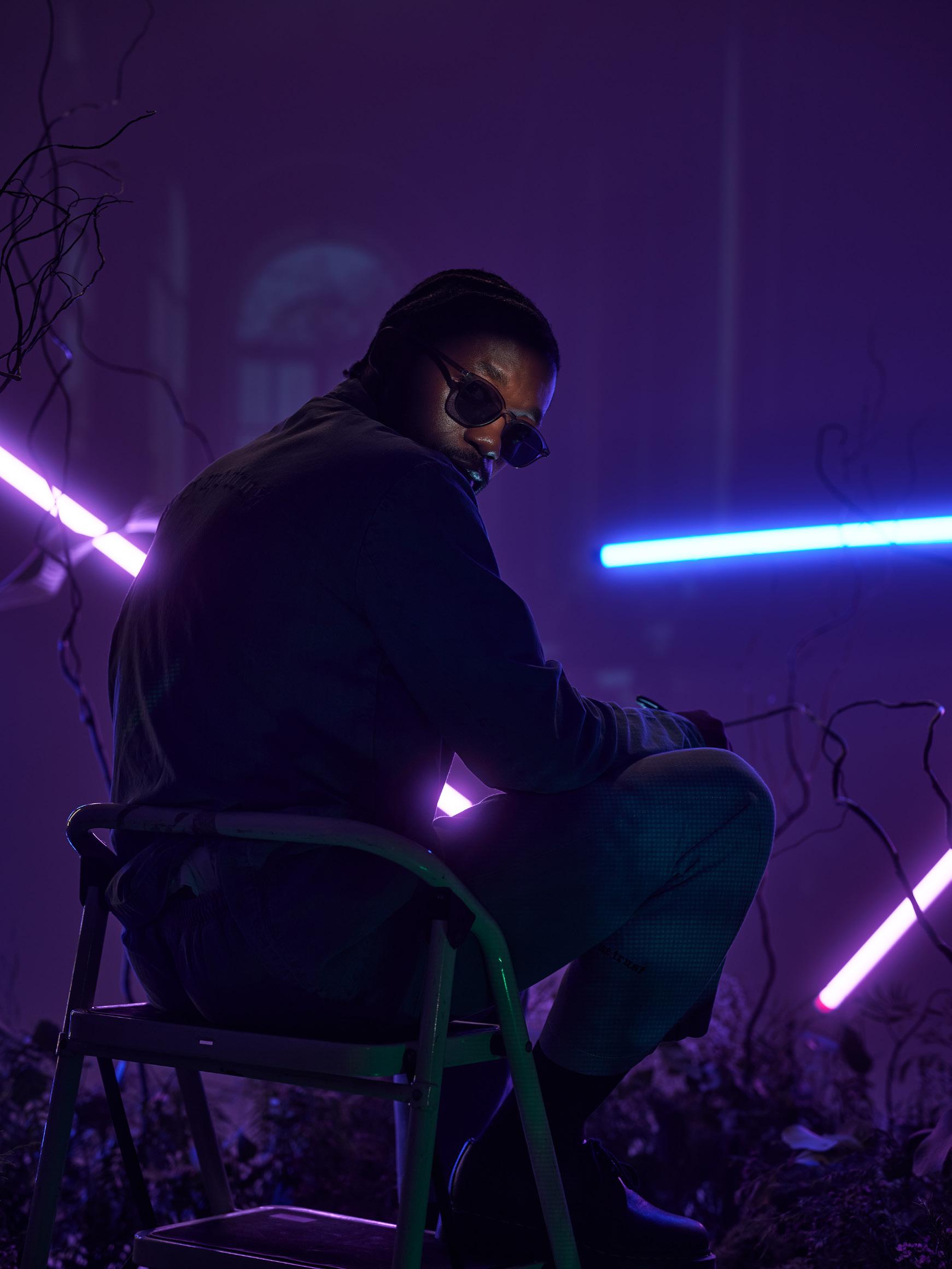
29 IQHAWEMAGAZINE ISSUE13
“There’s beauty in chaos, it all depends on which aspect you choose to perceive the beauty from.”

ISOLATION DOESN’T ALWAYS ALLOW
SOUNDS
From a controversial upbringing to an unconventional perspective of creating, Limpopo raised and Johannesburg based film director Koketso Matabane takes us back to watching TV with her grandmother and getting inspired by the foot foot nonsense of commercials playing during their soapie bonding time. Talking us through the creation and journey of Sounds of Isolation to, Koketso also shares tips on how to prepare for attaining creative success in the industry, while elaborating on her role as a Darling Films Creative Researcher.
Instagram: @bongiekokie
MATABANE KOKETSO
31 IQHAWEMAGAZINE ISSUE13
FOR HEIGHTENED SILENCE IN AN EMPTY SPACE, IN FACT, IT IRONICALLY ALSO LAID THE FOUNDATION THAT BROUGHT TOGETHER THE COLLABORATION TO CREATE THE BRILLIANT PASSION PROJECT:
OF ISOLATION BY KOKETSO MABATANE.
WHO IS KOKETSO MATABANE?
[chuckles] So, it depends on which aspect you want to see, and people then decide who you are before, like knowing who you are, I always find this question funny.
But if I were to look at who I am, I am the funniest person I would say. I’m an aspiring director, and writer from Limpopo, then Pretoria, and now Joburg. I had such a controversial upbringing, having my mom only and my dad in and out when he wanted to and then having a stepdad (from not knowing what a father figure really looked like) that resulted in an unhealthy relationship- but that chaos from home wasn’t going to define me. I also went to an Afrikaans High School where I was part of the six head leaders in an Afrikaans high school [chuckles] so it was a very controversial upbringing.
I would like to think that would be the way that I see my work not necessarily controversial, but that it gets people thinking like, how could you do something like that, and evoke this sort of emotion that I (as a viewer) didn’t know I had? I’m currently a researcher at Darling Films, so we shoot commercials, and I work in the digital aspect at Darling. I also shoot my own things on the side, trying to get on this train of hustle and hustling. But yeah, that’s who I am. I love people, I love getting to know people, I love talking, I don’t always finish my sentences, which is okay. But I think also the fact that I fell into this filmmaking area/lifestyle is probably because of my grandmother, we used to love watching di
soapie and le di commercials commercials on like TV and I would re-enact them as a little child, and that was when I mentioned to her that I want to do what these people on the TV are doing! Yeah, so that’s me, a bundle of joy with chaotic elements infused at the same time, it depends on which side you want to look at it.
WOULD YOU SAY THAT YOUR UPBRINGING HAD AN INFLUENCE THAT LED TO CREATING SOUNDS OF ISOLATION?
With Sounds of Isolation, the artist came to us and was like, I’m the most creative when I’m isolated and when I’m alone, how can we visualise it? With that everybody who was on the project, especially me, could relate to that. When I’m alone, I can create the most amazing piece of work and think about things that no one else is thinking about, and having been surrounded by so many people so many things easily influence you to kind of go the wrong way.
When that idea came to my lap we were building on the feeling of being alone, what happens in isolation, what happens in the dark, and when that period of isolation happens, the purest, most creative work comes out, and that’s something everyone can resonate with. So, because that was a thing for me growing up and that’s how everybody’s story kind of starts, isolation was the key that linked us all together. We made this film about isolation in isolation, and because no one knew about it, then having to release it to the rest of the world felt like a breath of fresh air.
WHEN IT CAME TO THE CREATION OF IT, WHAT WAS YOUR CREATIVE PROCESS WITH THE FILM, AND WERE THERE ANY CHALLENGES THAT YOU FACED IN CREATING THE FILM?

As human beings, we need to surround ourselves with people who benefit us, and we benefit them. So, I was definitely blessed to be around a small group of creatives like the DOP, I went with Fin (Arfin Widyatmaja) . We grew up together from primary school, same high school, and six years later came together to do this thing. Everyone who was on the project allowed creativity to like form and everyone had a piece of their own isolation to add on. I remember saying that I’m bringing “mirrors” to the shoot because we reflect our society, we reflect where we come from, there’s not only one side of us, but there’s also so many sides it just depends on which side you want to see it.
So, with Sounds of Isolation it was a collaborative work, and everybody mentioned in the credit put their hearts in it and creative thoughts into it. I would say that the tedious part of it all was probably waking up really early. It was winter when we started shooting and we had to wake up early because we wanted an early sunrise scene. Having to get people all the way from Pretoria coming to Joburg to shoot in the early morning was tough. I’m grateful for the team involved as this was a no budget film, it was purely a passion project and everyone gave it their all and didn’t even mind the travelling that had to be done for this project and their input was really impactful.
32 ISSUE13 IQHAWEMAGAZINE
AS A CREATIVE RESEARCHER, AND FILM DIRECTOR WITH THE KNOWLEDGE THAT YOU NOW HAVE WITHIN THE FILM INDUSTRY SPACE, WHAT WOULD YOU SAY ARE SOME OF THE IMPORTANT ELEMENTS FOR A SUCCESSFUL FILM CREATIVE, AND FOR A SUCCESSFUL FILM DIRECTOR?
I think for me, collaboration is a big thing but also having the idea to, to steer the ship, especially as a director, you need to always just go back to the core idea. Because collaboration is beautiful, and all until there’s too many hands in this pie, until there’s too many ideas in this ship, and then everything becomes wonky, there’s no straight line of narrative or visuals. So having to just always fall back on your gut feeling and the core where it all began, then include collaboration So, finding your gut feeling then bring on collaboration whenever you feel as if you’re drowning and whenever you feel like you don’t understanding what you’re creating, just step back, breathe, and then go back.
That’s also why we do research, it is the core of many successful projects out there in terms of tone, feeling, grading, editing, pacing, chopping it up, transitions and all of that. It all starts with the research. I respect researchers so much because that’s the core of the project, and if anytime you feel lost as a director, you can always go back to your research, and that’s where you can back it up and make things so beautiful.
I’ve found that through surrounding myself with the directors, at the company helped my journey a lot. Gale is my mentor, and her mentor is Zee Ntuli and we always call each other like this Drag Family (Zee Ntuli, Gale and myself). I even showed my treatment for SOI to them and then they advised me and on how and when to do it, they even suggested references that they enjoyed, that they would like to see. So as creators, it’s always scary to share your work because you don’t know what people are going to say, and it’s going
to hurt you if you don’t feel rejected. But put it out there, you never know what you’re going to hear, which is what will benefit you the next round.
AS A CREATIVE RESEARCHER FOR DARLING FILMS, HOW DID YOU LAND THIS ROLE IN AN AGENCY AND WHAT DOES YOUR WORK ENTAIL BECAUSE OF CREATIVE RESEARCH? I FEEL LIKE YOU COULD THINK OKAY, COOL, IT’S RESEARCH BUT WHAT EXACTLY ARE WE RESEARCHING?
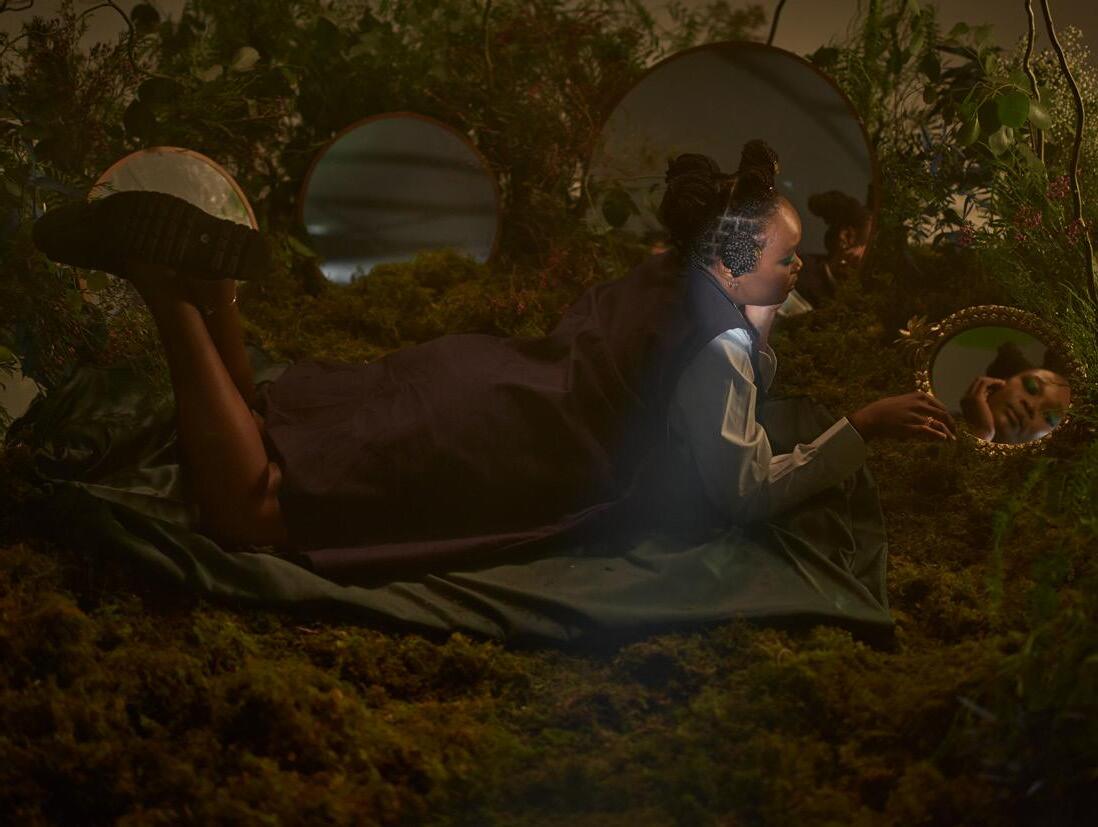
So, basically the flow of work is like this: the agency let’s say a King James or Ogilvy or Joe Public United, has clients and the client is like, Okay, we want to produce this much, and then the creators in the agency would have come up with a concept and a brief that they release to three production houses and each production house choose one director. So they would spread the same brief to three different directors, three different metrics, and then from the director approaches the researchers and states this is what they want, how it looks, the feeling, the tone, the music, and then the director comes to us having with that information comes to us as the researcher, and would be like, Okay, so this is the brief.
For example, I got briefed for KFC and my director requested a broad brief. So what a broad brief is basically gathering stills, images, videography, graphics, titles, and music and creating a visual feeling to the script. The script comes as just words, sometimes just words and I gather the visual representation or visual aspects of that film to bring it to life and then build the treatment and make it more authentic. So with this one, they were using more American references and then I had to make it more South African- You see that? That question we all get us as black researchers vexxed, how do you make something more South African? What are the South African nuances?! [chuckles]
So, your research is just to elevate the initial concept in a visually captivating and presentable way, and then we put it into treatment, and the director pitches it.
33 IQHAWEMAGAZINE ISSUE13
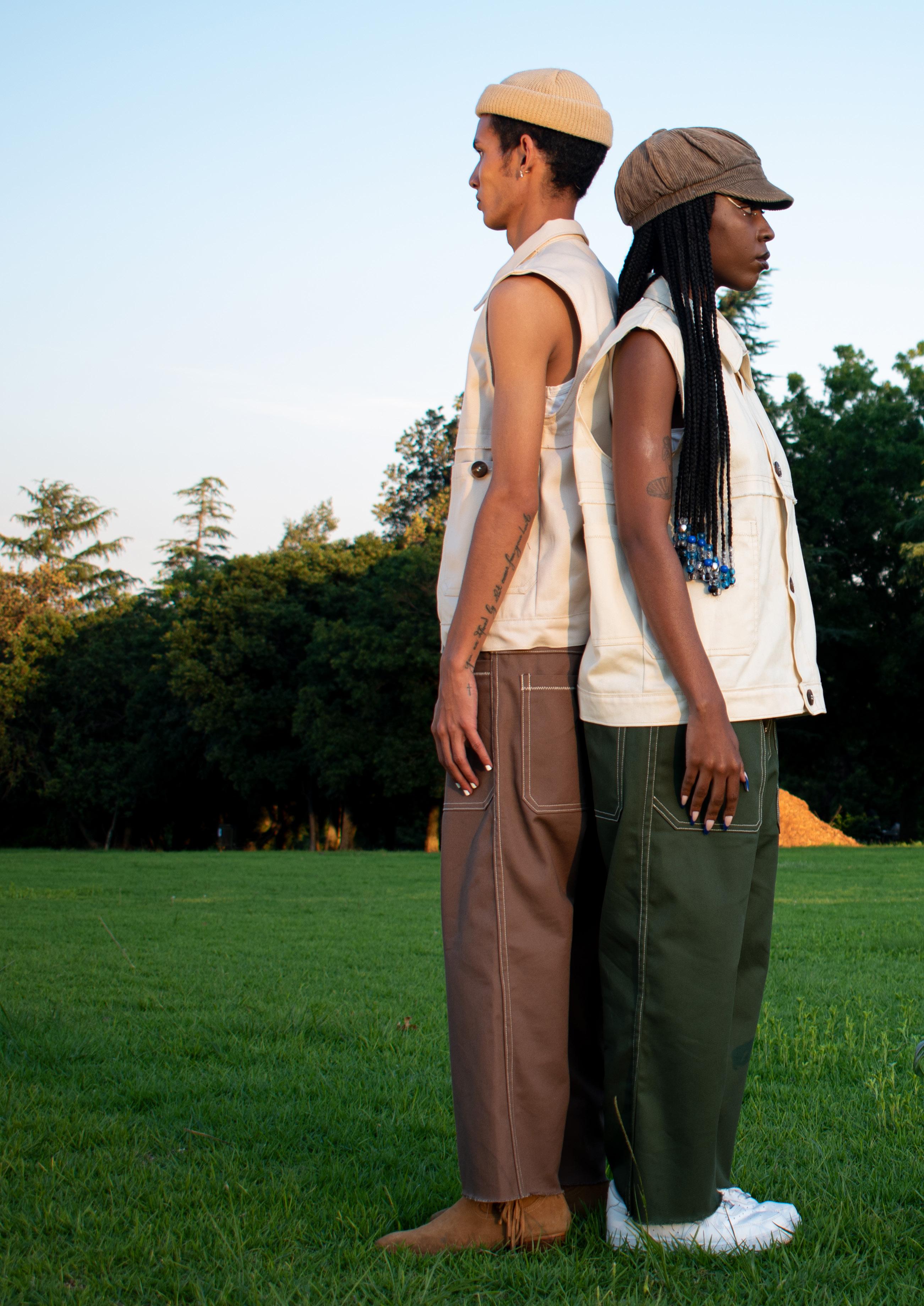
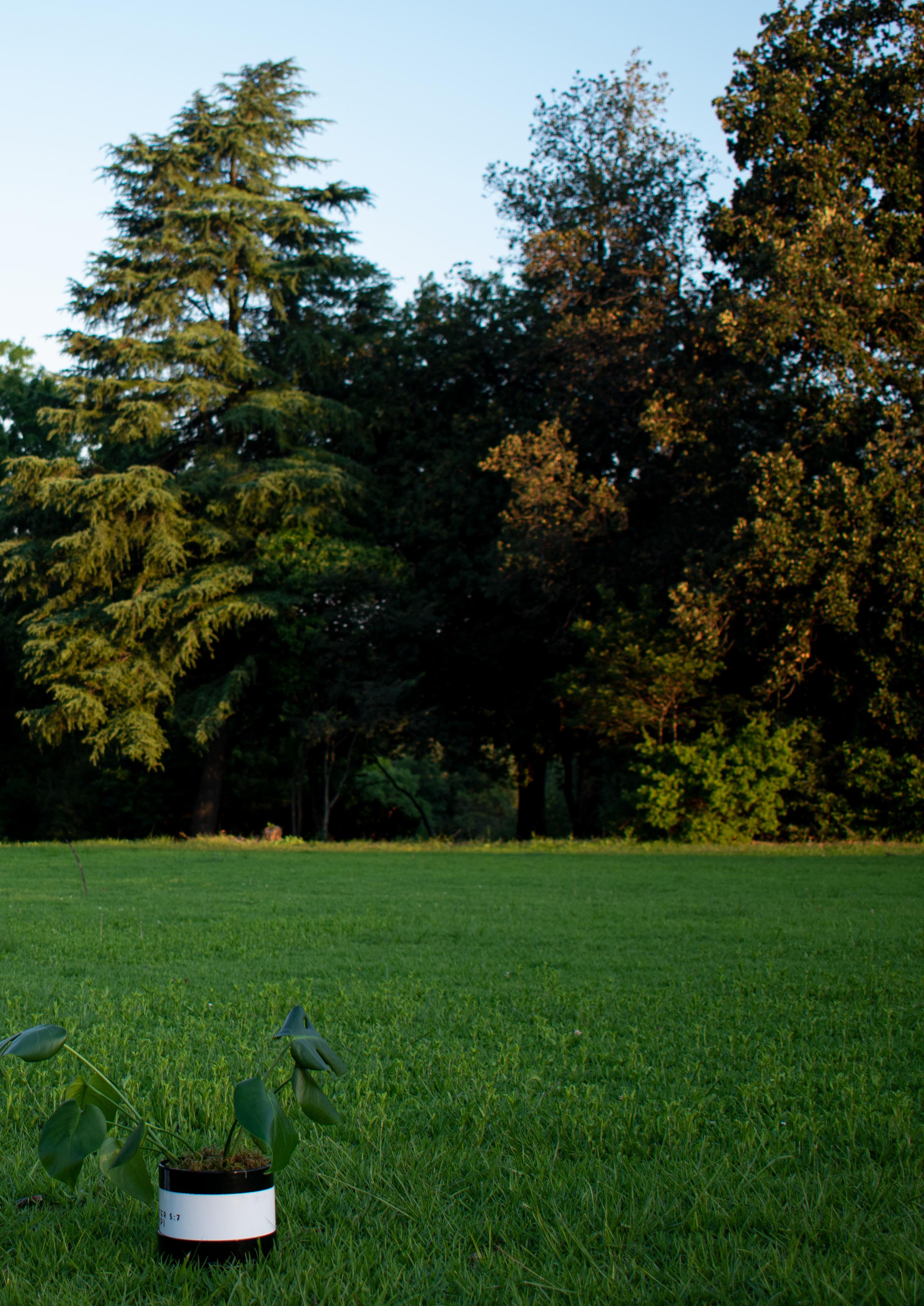

MUTED RAGGSS Workwear Pants – R750 | Workwear Gilet – R800
Interviews by Ntokozo Mabuza
AMOGELANG MONTJANE
Wearing a Broke cap and talking about all things found in the Beauty in creativity is none other than THE INTIMATE AND ENCHANTING CREATOR Amogelang Montjane. Dissecting the language found in art, translating the beauty onto canvas, and understanding the intricacies derived from her subjects of work, Amo illustrates the essence of her being while splashing colour and shading light on her career, her favourite projects, and her journey throughout the art industry.
Instagram: @a.meemz
36 ISSUE13 IQHAWEMAGAZINE INDUSTRY: VISUAL ART
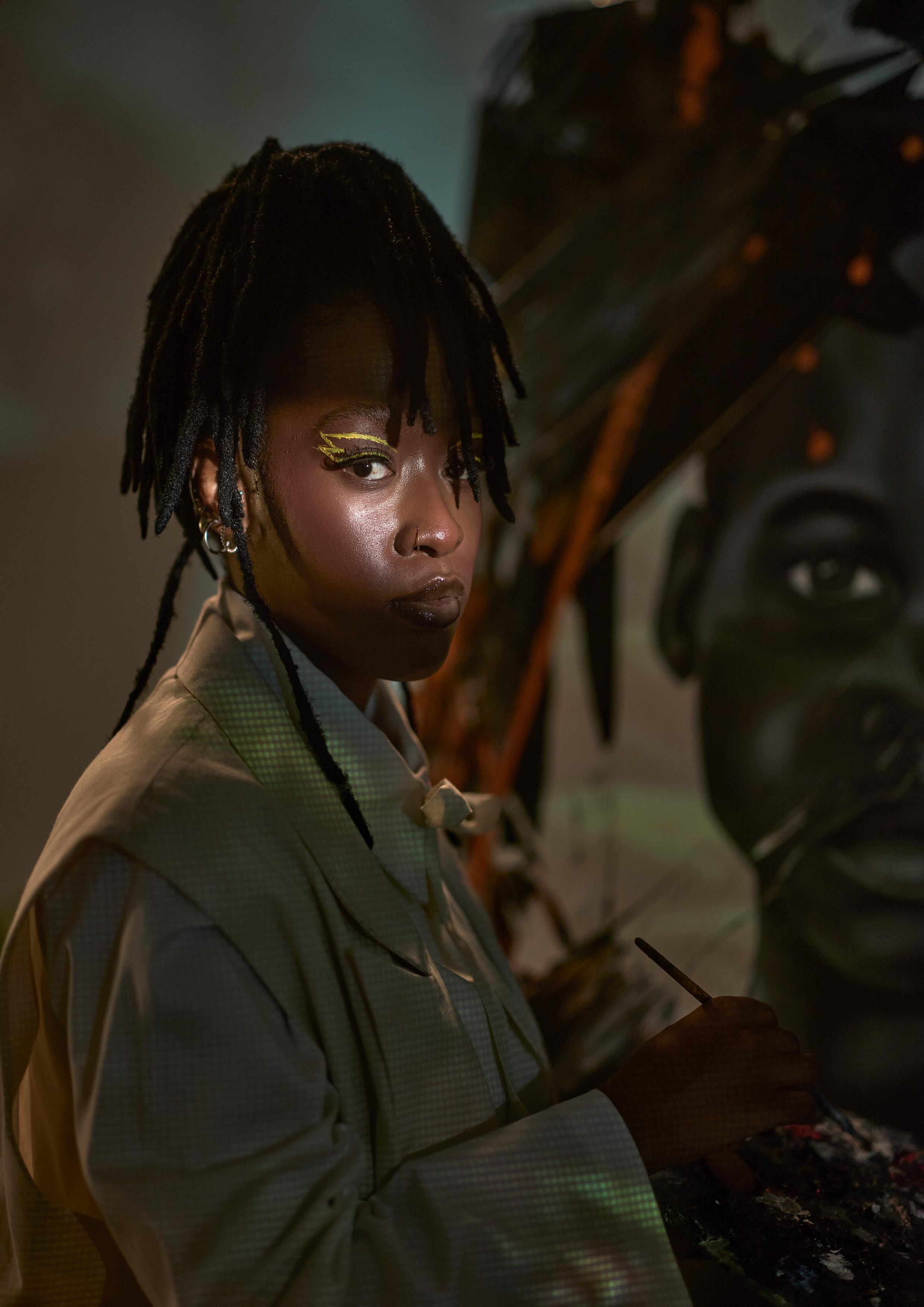
WHO IS AMOGELANG MONTJANE?
I am an all round Creative which is something that I find really unique in terms of it being a way of how I see things, how I play, and how I go about life. So I am an artist, a lover of art and people, and I think that is my greatest gift just as far as that being something that is part of my being. When I think of myself as a whole, I just really like beautiful things and I think that’s how art also kind of aligns with that, like the little things that I do really do kind of make up who I become and who I am as a whole.
WHAT DO YOUR PAINTINGS AND PORTRAITS MEAN TO YOU, ESPECIALLY WITH THE USE OF VIBRANCY AND COLOUR, AND ALSO IN THE TECHNIQUES THAT YOU DO USE BECAUSE I HAVE SEEN THAT IN SOME OF YOUR PAINTINGS THERE’S A STIPPLING TECHNIQUE USED AND THEN THERE’S ALSO OTHER ONES THAT KIND OF JUST HAVE THIS CONTINUANCE PATTERN OF LIGHT CIRCLES AND LINES - WHAT DO ALL OF THESE ELEMENTS MEAN AND REPRESENT FOR YOU?
I think that with art the beautiful thing is that you get to explore, you aren’t necessarily restricted to one medium or one way of doing things, and I think that in itself can also be used as a message, a way of communicating, what an art piece can mean. With the stippling I think that speaks a lot on patience in a sense that I can give and get a lot of patience towards making one dot at a time, and I think the practice as far as creating something big and beautiful, and it taking like one single thought and dot at a time and releasing something expressive and unrestricted is just so beautiful. In talking about restrictions, you want to make something that will help you release all these limitations and boxes that you have. So sometimes you just have to slap some paint on a very beautiful realistic piece and the beautiful thing about realism is that it helps speed up the creation of another image playing around in my head which is amazing. I find it so amazing when artists get to shock themselves with their ability to recreate chaos into an artwork, making it look realistic, while simultaneously not having too much attachment to the output, and knowing that the practice is fluid. So yeah, seeing the beauty and fluidity in chaos has kind of helped me see my day-to-days very differently and helped me kind of see the bigger picture.
SO YOUR ILLUSTRATIONS, SPECIFICALLY THE MOHAMMED ALI PORTRAIT, POPS OUT TO THE VIEWER IN A WAY THAT HONESTLY LEAVES ME IN AWE AT THE FACT THAT THIS PAINTING WAS DONE BY HAND.WHAT SPECIFIC TECHNIQUE HAVE YOU LEARNED TO BE ABLE TO MASTER THIS ABILITY TO MAKE ART ‘POP OUT’ IN YOUR FACE?
The Mohammed Ali painting was something that kind of happened to me, I would like to say that it picked me. I remember being in high school,I was like 18, and I was like, “Okay, I’m gonna try
painting today”, and then I tried it, and it didn’t turn out too bad. The more I practised and the more I set a goal of what I wanted to achieve, the more I realised that realism was always like this great thing that I wanted to dive into and perfect. So I think having a goal in mind also kind of helps you develop your mind and artistic ability and that’s definitely what realism did for me. When I look at faces, I really do see them differently. When I analyse the face that I’m about to draw, I’m not just looking at the face as a whole, I notice the different highlights on a person’s face, observing where the light hits, translating the details like a beauty spot,eyebrows formation, and all these little middle details into a cohesive language. And having drawn so many faces as well,I’ve gotten the hang of understanding how these little details really do make a person. And I think exploring the language of details, delving deeper into those details, and translating them onto the canvas is something that further helps me experience my art and the beauty of everyday people and features in a more radiant and fulfilling light. I would say that I am obsessed with details and bases, and with the ability to dissect this language, translate and express it onto canvas for everyone to feel, see and understand.
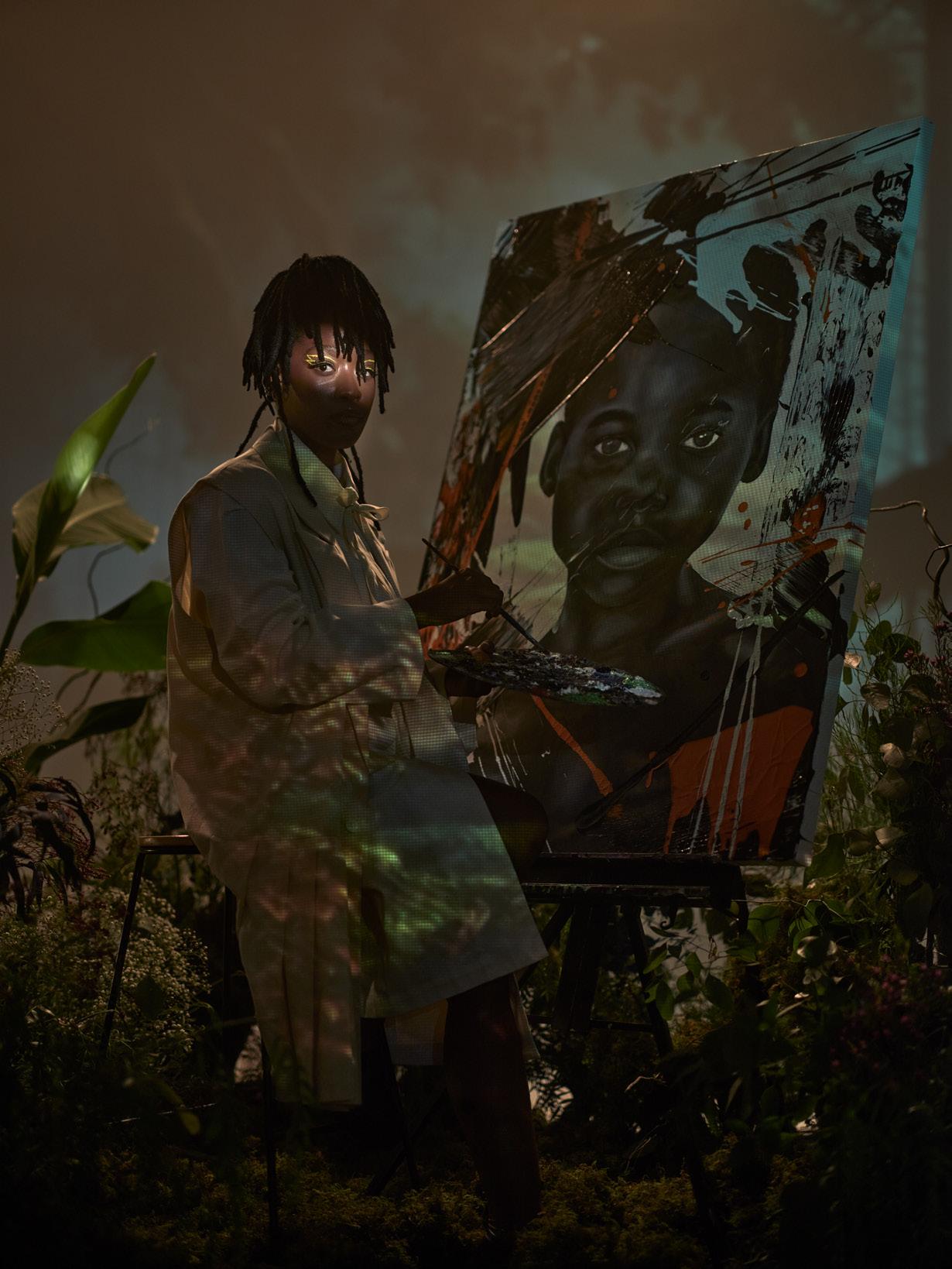
38 ISSUE13 IQHAWEMAGAZINE
WHAT HAS BEEN THE BIGGEST CHALLENGE YOU’VE FACED IN THE INDUSTRY SO FAR? AND HOW HAVE YOU CONQUERED THEM?
I think as far as the art industry goes, I’m not really someone who likes studying fine art, this was never my primary thing. However when I decided to take the leap navigating around the spaces that I found myself in was hard and that’s mainly because I have an idea of the kind of artist I want to become and surrounding myself in those spaces was difficult to mentally place myself in due to there being doubts about myself and the idea of self in mind.
For example there could experience all of these artistic things happening around you but they don’t necessarily involve you, and as good of an artist as you might think you are because of all that’s happening around you doubts start coming into play because of elements that don’t fit into your minds view of you, and I think it’s really hard just navigating around the spaces that artists might have to give opportunities. And that’s something that I beat myself up for a lot becauseI feel like there was a lot of pressure to create, but I didn’t necessarily know what I was creating for, so that was a challenge in itself. However, the more I just kind of stepped away from trying to find these
spaces and creating my own space, the easier it became to become the kind of artist that I want to be so I don’t put pressure on myself, I’m very protective of what my art means to me. Once I decided to approach things in that way, the space that I wanted to be in kind of found me. It’s very easy to see the art industry as this one dimensional gallery exhibition and all these fancy things, but the more I delve into it, I see the art industry has meaning just for myself, allowing me to create what I want to create, primarily for myself and for my emotions.
Through this lens I was able to find people who can relate to my emotions and to the things that I’m saying, which makes that a very and pure process beautiful. It’s such a pure process. So as far as navigating around the art industry what you have to do (as someone who doesn’t necessarily know where to go or which spaces to be in) is to create an identity for yourself. And I think that with my background in advertising, and branding, it really gave me a third eye as far as seeing how someone can brand and narrow themselves into a single line of vision of what you want to do, who you are and what you want to stay. I will say that the beauty behind struggling to find your way in the industry is that it forces you to find your own voice, to follow that voice, find your intuition, and to navigate around the fears that you have in a very different way, and there’s so much power in that as well.
WHAT DO YOU THINK ARE THE MOST IMPORTANT SKILLS OR QUALITIES FOR SUCCESS IN THE ART INDUSTRY?
Your voice! You have to have an authentic voice in the art industry, I think it’s very easy to tell when an artist says something and you can hear how authentic it is and that it actually means something to them. As far as success in the art industry, you have to create something that is meaningful for yourself,
As far as being successful, you definitely have to work on your style, work on how you express yourself, and work on how you can do all these things in a very authentic way. For a long time I was very scared to share things or just speak my mind when it came to things that I was thinking about my art or just things in general, really. But I think that the practice that I’ve been taking is just reminding myself that the power of the tongue is a very constant thing, and the beauty that I have found behind that is that there’s always something on the other side and having the willingness and curiosity to discover what is on the other side of that really helps people build a community and is a very beautiful thing.
And with with what you just said, Now, through being authentic and staying true to yourself, and having like, 500 people relate to your authenticity, how does that like make you feel whenever you
39 IQHAWEMAGAZINE ISSUE13
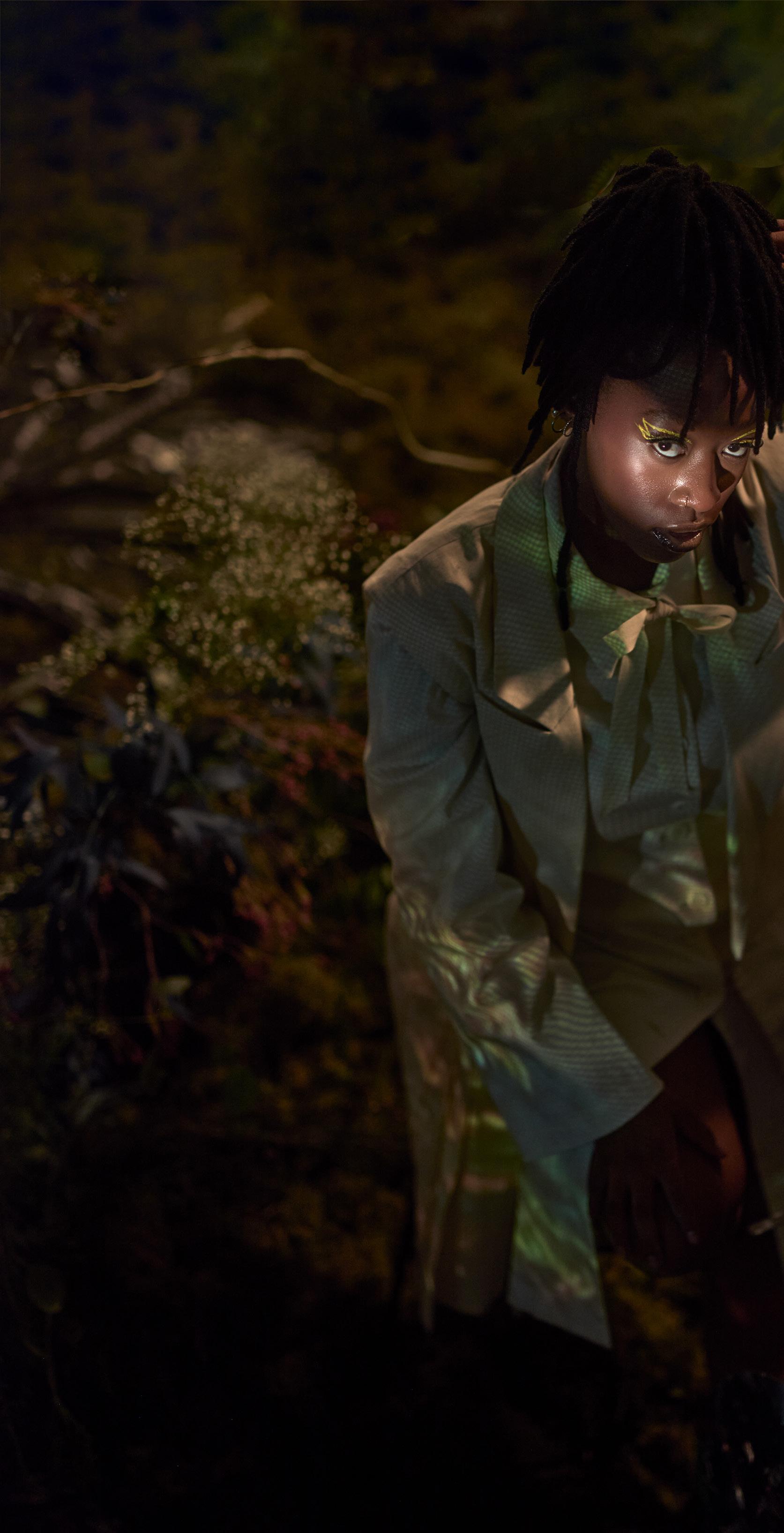
40 ISSUE13 IQHAWEMAGAZINE
are exhibiting or like posting your work, and you’re just posting it for the sheer fact of sharing what you’ve created, and its wholeness? And then getting people on some Yo, man, I relate to this, like, I see you.
I think there is nothing about that process that isn’t overwhelming.I think it’s consuming. It’s like, it’s like a hat. It’s just like an aura that comes with you. Because I think when you do create something that is very true to you, and people see it. You can’t help but feel joy. I think it makes me extremely humbled by it. I just do not know what to say to people. But it is something that I think I can’t even necessarily say in words, you know, but it is something that I really do feel. And I feel it’s holistic, I think going with my art and just my ability to share that I’m creating something that someone out there like will relate to or will like will see. And I think with every touch point that I have made, made me more and more grateful. And I think it’s also become my way of communicating to people. Sometimes I’d be getting my way and I’d be shy. I don’t even know what that’s about. But I feel like when I am able to do it You know, I’m still able to say beautiful things to people, without ever having to use my words. I think it’s a very beautiful and beautiful way to communicate.

41 IQHAWEMAGAZINE ISSUE13

JASON LANGA
When it comes to the work of Jason Langa THE EXPLOSIVE USE OF COLOUR, DETAILED BACKGROUNDS, AND AN INTRINSIC USE OF TECHNIQUE INGRAINED IN STIPPLING AND TEXTURE, POPS OUT OF HIS HAND MADE WORK
Notably known for his consciously detailed, to the T, portrait paintings of familiar faces indicating bold and well captured emotive expressions honourably exhibited at Mangrove (you’ve definitely seen a portrait or two). Jason indulges us on his journey through his artistic terrain and making reference to coastal species playing on his parental upbringing and a sense of belonging, Jason enlightens us with an introduction of getting to know the face, mind, and feelings behind these emotive and identity led portraits.
Instagram: @_jlgallery
43 IQHAWEMAGAZINE ISSUE13
WHO IS JASON LANGA?
So yeah, Jason Langa is an artist based in Johannesburg, South Africa. Yeah, I practise painting. That’s my primary medium, but I also have skills in printmaking and drawing. And yeah, I recently completed my third year in an artist pro studio last year, and now I’m getting into the real world and trying to find my way as an artist.
[FOLLOW UP] HOW HAS THE TRANSITION FROM SCHOOL TO MAKING YOUR WAY AS A REAL LIFE ARTIST?
I think because the year just started, I think I’m trying to get the hang of life, maybe finding where I can really push my skills. So as the year goes I’ll determine the direction of my art, so right now, I’ve just been trying to hone my skills as a painter, and establish myself as a painter. And hopefully from this something more established comes.
LET’S DISCUSS YOUR WORK - WHAT DO YOUR PAINTINGS AND PORTRAITS MEAN TO YOU, ESPECIALLY WITH THE USE OF VIBRANCY AND COLOUR, AND THE USE OF SHAPES IN YOUR BACKGROUNDS?
Okay, so I’ll just start by saying that my work is very experimental. So, I like to always try new things and try out and see how things can actually work and how I can actually relay a message in my work. So, basically to summarise how I go about doing my work, I usually look for inspiration, like situations where people are exhibiting their true life emotions. So let’s say if a person is sitting at a restaurant or if a person is looking out to the sky and smiling those are the moments I pick up and actually look for when choosing a reference, and I actually take those emotions and try to reinterpret them in my own way. So basically, my use of vibrant colour to represent skin tone is to actually to express those captured emotions because different colours bring out different emotions for different people. So the way I see red may be a different way someone else needs a red so I take advantage of that and I try to touch the viewer in an emotional way with my use of colour. As for the background, I make my backgrounds very static to show the comparison between the organic form of the human being and the static form of background so that it shows the concepts of actuality and how one thing can exist with the other.
WHAT ARE SOME OF YOUR FAVOURITE PROJECTS THAT YOU HAVE WORKED ON AND WHY?
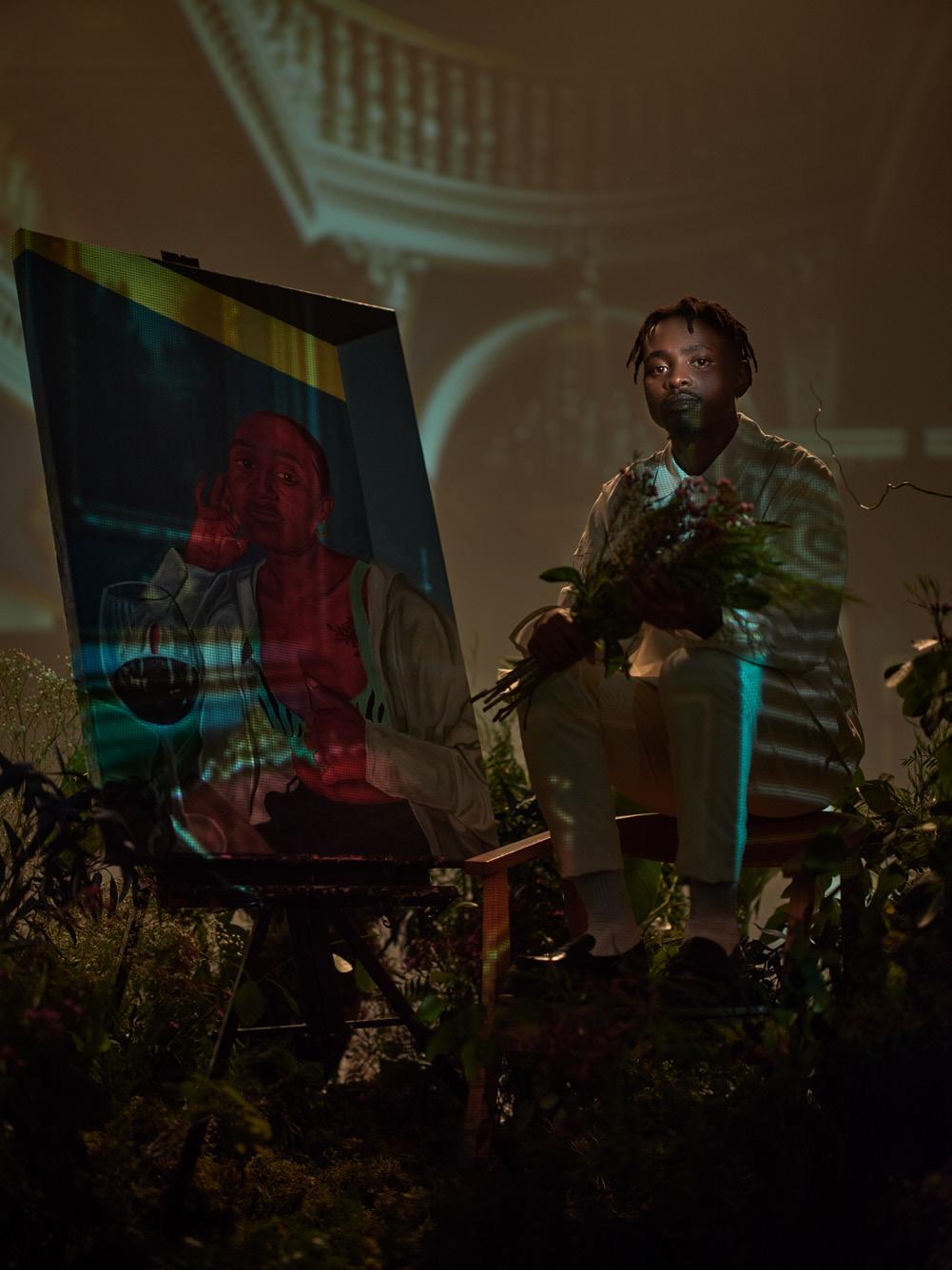
I think if I can just list maybe like two or three, one of them was the show I had at Mangrove titled Traces shared alongside Amo and another artist called Silindile. We had a group show at mangrove and I think that’s where I started to break out into the commercial art scene. There was a time when Mangrove had my work up and people started to know me from there. Even though those works ended up selling, Mangrove decided to call me again to express their adoration and appreciation, and to say that they wanted some more. So I think that has to be one of my top favourites. My second favourite project was when I did an exhibition with Denzil’s Jo, the one that you actually came to, and I think that also helped me expose my work in the exhibition gallery space. So I think that experience was very beneficial for me as I got
to learn and see how things at a gallery actually work. I think those are like two of the most defining events in my career and just trying to build on those.
WHAT HAS BEEN THE BIGGEST CHALLENGE YOU FACED IN THE INDUSTRY, AND HOW HAVE YOU CONQUERED IT?
I think the biggest challenge definitely has to be like getting that recognition from galleries or collectors. As visual artists and creatives, we all try to really push to get the recognition that our work deserves, and sometimes it doesn’t come as easy as you wanted to. So, for me, I can’t really say that I’ve overcome it yet, but I’m definitely taking the steps to do so. So I think one of my biggest advantages is that social media has played a huge role in how my work is received by the public. Ever since I opened my Instagram account like it’s been good comments and good feedback from my audience. I think that’s what I appreciate the most, I take it and I really listen to what the viewers of my work have to say about my work. I also try as much as I can to engage with them, because I know that they are the ones who are going to push me to get to where I want to be. So I take the time to appreciate and try to engage with my audience as much as I can. Also as difficult as it is to try and get that recognition, I think knowing the kind of artist you are and knowing where you want to be can help you take the steps to do and be where you need to be.
44 ISSUE13 IQHAWEMAGAZINE
IN YOUR CREATION OF PORTRAITS CENTRED AROUND CAPTURING PEOPLE IN CANDID MOMENTS, EXPLORING IDENTITIES AND EMOTIONS, ARE THERE ELEMENTS OF YOUR OWN EMOTIONALITY THAT ARE ADDED TO AND HEALED BY THE WORK THAT YOU CREATE?

Yeah definitely, it goes without saying, art is a very emotional and very spiritual experience for a lot of creatives, even for me. There’s this phrase I like to use: the process is for me, and then the art is for everyone else. So what I mean by that is that, like, in the process of creating, like, I think I’m healing myself, number one, because I know that like, I’m someone who’s very sensitive, and I feel a lot of things deeply. And I think being, like being able to paint, being able to draw, it’s like that outlet that I can use to actually confront and deal with these emotions, you know, one on one, as much as like, I’m not directly, you know, painting what I’m feeling, but in whatever I’m painting, there will always be elements of how I feel, so that it will show either by the colour, or it will show by the reference on painting, there’s just always going to be something that explains how I’m feeling in a particular work that I create.
It’s definitely a healing component to myself and to other people. And I say that because, you know, because of these little you know, the feedback I get from the public about my
works like that also like says, or it goes to show how much they’re being hemmed by, by the work that I create as well, because I get people telling me telling you that my work is important, or I’m painting a new perspective, and I need to keep doing this. So I don’t think if you’re doing something important that you wouldn’t get told that its important. Yeah, I think yeah, definitely healing number one, it’s definitely on top as part of being a creative.
WHAT INSPIRED YOU TO BECOME AN ARTIST AND GO INTO ART SCHOOL AND CONTINUE?
I started this as nothing but a hobby. But I think as time went on I got moments where I felt I needed it and I should be doing this. It’s an accumulation of those little moments. And those, you know, like being acknowledged by tricking us the world as a whole, and just like, you know, I’m getting these messages that, like, this is what I should be doing. Like, it goes, like, it became a thing of like, okay, now, obviously, like, as life went on, I’m trying to find my way and I’m trying to see where do I fit in. And then here I am doing retail or here I am studying something out, you know, you don’t, you don’t get that same spark or that pressure from doing those other things. And when you find yourself creating or find yourself doing what you’re doing, you feel so fulfilled, then there’s nothing else you feel like there’s nothing else for you, but to do that thing.
45 IQHAWEMAGAZINE ISSUE13
ZANELE MONTLE
Hailing from Empangeni KwaZulu-Natal WITH ACCOLADES
DEEPLY ROOTED IN VISUAL ARTS, education impassioned Zanele Montle utilises her skills acquired through Graphic Design, Gallery Management, and Marketing to fuel her creativity and teachings specifically centred around Art Education.With her work displaying vivid colours, bold forms of enigmatic subjects, and an emphasis on using everyday life activities to explore themes of Black Identity. Journey along with us as we revisit the start of her career, some of her favourite created pieces, and exploring the skills, qualities, and inspirations that have helped build her a beautiful and reputable career.
Instagram: @zanele_montle
46 ISSUE13 IQHAWEMAGAZINE

I’M GOING TO START WITH THE MOST SIMPLE YET COMPLEX AND IMPORTANT QUESTION AND THAT IS WHO IS ZANELE MONTLE?
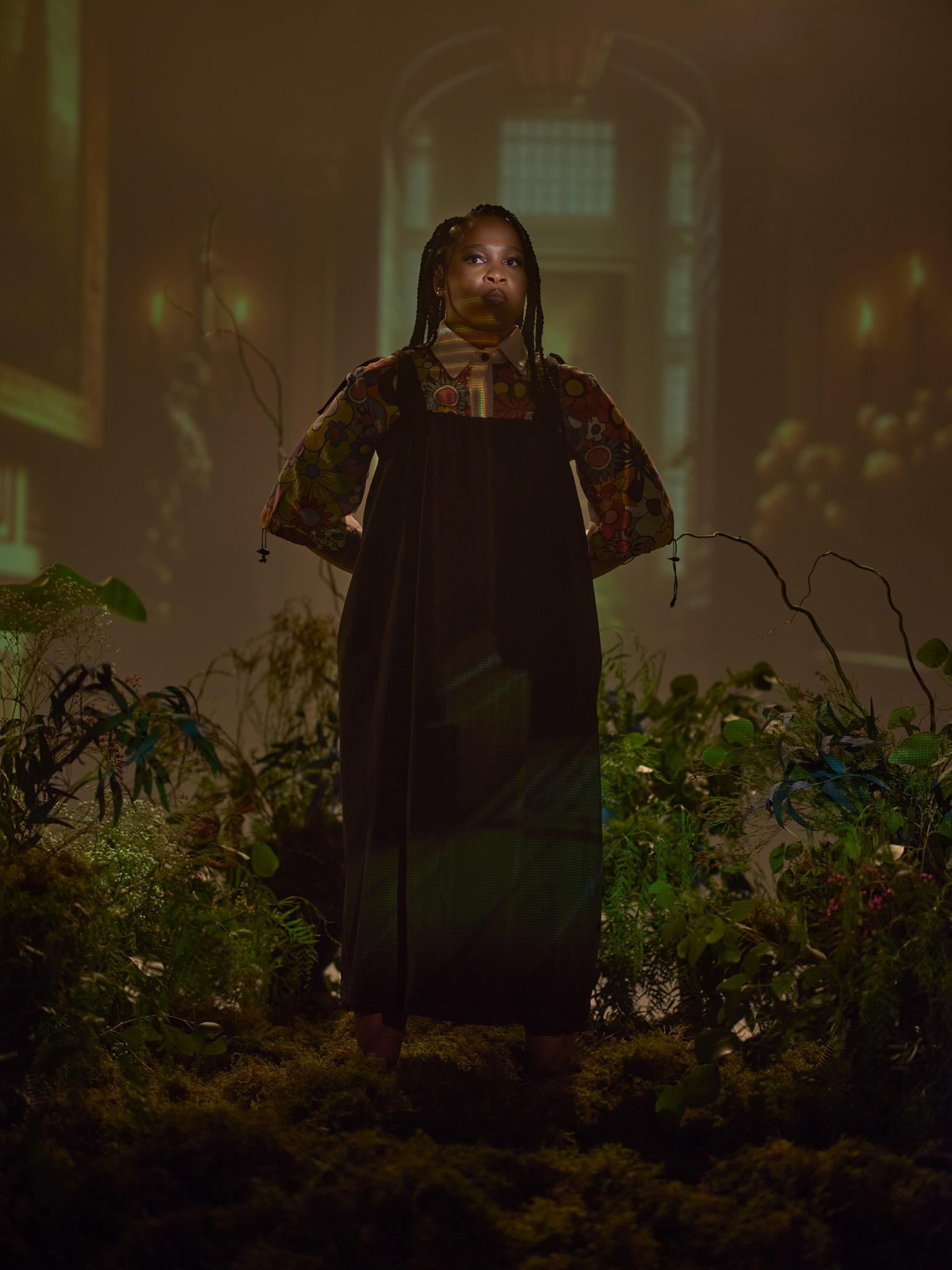
So Zanele Montle is a 30 year old woman originally from Kwa-Zulu Natal, born and raised. I am an artist and an art teacher as well as someone who loves conversing and connecting with people. To partially define who I am, I’m a people’s person and I enjoy things that have to do with purpose and change, and I’m someone who has a burning desire to see things changing, in terms of culture, the way we live, and how we do things.
HAVING BEEN IN THE INDUSTRY FOR FIVE YEARS, AND HAVING GAINED THE KNOWLEDGE THAT YOU HAVE, WHAT WOULD YOU SAY ARE THE MOST REWARDING MOMENTS IN YOUR CAREER?
I studied in KZN and was raised there until my matric year, where after that I came to Joburg and I did my three years at UJ, studying Visual Arts, and then I did my BTech in Pretoria at TUT. From there I dabbled into digital marketing
and normal traditional marketing, and at some point I was a gallery manager.
I’ve been teaching for about four years now. I chuckle whenever someone says my career is starting now because I believe that it started when I chose the subject Visual Arts in high school grade 10. Considering the number of years spent studying, I think people tend to not include the part where you were actually starting studying something as the beginning aspect of your career, because it’s four plus years of your life devoted to studying. And so I think the minute you start focusing or studying something especially for varsity, your career has already started you’re just not really aware of it. I say this because that studying adds into what you’re going to make, your perception of the subject, or at least in my case it was that. It was an introduction to my career, what I learned about other artists, what I was taught and not taught, I had to relearn a lot of things after varsity because my perceptions of what I was taught started to change and I started questioning why I was taught certain things I was taught, and from that you start realising that you have to
48 ISSUE13 IQHAWEMAGAZINE
have your own voice and not necessarily just echoing through what you’ve been taught.
My career is pretty much 10 years old, because if I’m 30 and I graduated in 2014 you can imagine how long it has actually taken to be here, all the journeys and the experiences in between, my work not being accepted to galleries, or being rejected or questioned, or even sometimes even compared to with other artists. So it has been a long journey.
What I’m finding to be rewarding now more than anything, aside from obviously sales, which you also need, artists also need tangible sales and that is also part of the reward, which we don’t speak too much into. But it has to be definitely growing and recognizing how important art is. And the change that it is contributing to culture, culture representation, how people see themselves, the questions around identity and self, and even self and other. But I’m not going to tap on too much in the body being a political subject, especially in South Africa [chuckles].
WHAT INSPIRED YOU TO NOT ONLY STUDY VISUAL ARTS, BUT BECOME AN EDUCATOR SPECIALISING IN ART?

I never grew up saying that I want to be an art teacher, I think I need to just emphasise that, but I also have learned how teaching myself things has changed my life. And so that’s where the passion comes from, and how being informed about certain things can actually change a person’s life. The more we know, the more exposed to things we are, the better choices we make. So, I think, having been a black girl interested in something like visual arts, which (growing up) it was not necessarily common because visual arts was deemed as a career where there’s no money and most parents would say, no rather become a doctor or a profession that will grant you more money, have a decent living, and live off comfortably, whereas as an artist you’re not promised that.
What inspired me or the interest in education is how the more I learned and the more I matured I realised that through maturing I can create a bit more art and my context is a bit broader which then obviously, changes a person’s life. And I think that is the difference that education makes. There is something beautiful about being informed about a lot of things in order to make proper decisions, and even create new spaces. You need information, you need knowledge and so therefore you need education. So, I took all of these elements of how I
was taught, who I was taught by, what I was taught the most, Impressionism, Baroque or Western or European art and I put my position in an art field, so that I can continue teaching. Unfortunately there wasn’t enough emphasis done or exposed to South African artists, which has now changed, I must say, but growing up, I didn’t understand or realise how broad the context was. And as I teach I also get inspired by my learners, the more I teach the more I grow as an artist hence my work seems so simple because I think sometimes as we grow, we kind of complicate
49 IQHAWEMAGAZINE ISSUE13
things or because we’re so intellectual we think that the work can only be understood by somebody educated. Which is why even in my work you find the blank silhouettes, of course referring to black people and the culture, but it’s also simplified so that my mom who’s 64 can understand what I’m talking about and also so that they can see themselves in the art that I make.
LOOKING AT YOUR ART, IT’S QUITE EASY TO NOTICE THAT YOUR SUBJECTS ARE BLANK FACED WITH A HUGE EMPHASIS IN COLOUR AND VIBRANCY. WHAT DOES THIS EXPRESSION MEAN FOR YOU WHEN YOU ARE CREATING IN THIS WAY?
Yeah so I’ve always been into creative arts and sometimes you end up finding that thing that makes what you make work. The style was found, I would say, by chance but also through performing a lot of research for my work, and trying to see what actually works. So even the colours were mostly inspired by South African cultures, the different kinds of colours we use, I mean in the Zulu culture for instance, colour is so important in beading, because each colour means something, it’s kind of like coding. Even when you look at Esther Mahlangu’s work with the patterns, some of the patterns that she actually painted on some of the houses in Limpopo carry their own unique message. There’s a form and function, and an element of communication and freedom of expression of culture. Linking that to uMaxhosa as well for example, you also see it in his work and how he changed the perception of the jerseys through the pattern and making it African. So yeah, the inspiration comes from there, but also I’m seeing that my use of colour is also going to change, but for where I am now that’s what it kind of means.
[FOLLOW UP] FROM YOUR MENTION OF ESTHER MAHLANGU AND MAXHOSA, DO YOU HAVE ANY INSPIRATIONAL FIGURES WITHIN THE ART INDUSTRY THAT HAVE HELPED YOU ALONG YOUR ART JOURNEY?
Sure, I love some of my friends and the artistic work that they are making, but my first encounter with a painting was actually in primary school and it was a painting of my dad who passed away in 1995. According to what we were taught there was a form of art called Kitsch which I grew up around. So, I was inspired by Kitsch and I remember looking at, I mean my mom was somewhat of a creative herself and many members in my family, but I grew up what looking at the portrait of my dad in the dining room, which had these golden orangish, goldish background and the drawing of with like a black marker with a golden frame, which is great and it was mainly inspired from that. Already, from there I was being taught about portraits, and even in my work, you’ll see portraits and portraiture a lot.
WHAT HAS BEEN THE BIGGEST CHALLENGE YOU FACED IN THE INDUSTRY AND HOW
HAVE YOU CONQUERED THEM?
I think most artists do go through this, or let me just say creatives, which is something I am working on, but I think it’s just the imposter syndrome. Not really believing that you’ve done this thing, and it’s actually quite cool or crazy. I think it’s been that and also realising that it’s quite an honour to be an artist. So I wouldn’t necessarily say its been a challenge but I think realising that it’s a responsibility to be an artist, a responsibility to have a voice, it’s a responsibility to share your work with the world. I mean, I’ve had so many people sending me messages across the world, not just in South Africa, New York, London, Brazil, who connect with the work, and that goes to show the volume of being an artist.
So, the challenge, I would say, is just believing that this thing is what it is and also just that it’s a responsibility. But at the same time, I don’t think there’s an artist who necessarily makes it their first choice to be an artist, I think some of these things come to you. Yeah, but I think it’s been a lovely, interesting, difficult journey, but could not change anything. Aside from that, I think you just have to be patient to become an artist and it’s also important to start a routine and actually acknowledge the work.
WHAT DO YOU THINK ARE THE MOST IMPORTANT SKILLS OR QUALITIES FOR SUCCESS WITHIN THE ART INDUSTRY?
Ah, hard work. You have to put in the hard work, and hard work also looks different to everyone. And I’ve heard people say this, and I’m like, oh, what do you mean, but I think hard work looks different. For example, I’m an art teacher, and an artist, and so my type of hard work would look different. So, it might mean sacrificing time, sometimes it’s friends or sacrificing time with family members. Another thing is, I’m going to be cheesy right now but this is actually true, never giving up. It’s a real thing. You must never give up because you never know ukuthi the minute you stop making an artwork it might be the right one. So, if anything, take time to come out and then take time to align and put in the effort to put yourself out there. I’m always talking to some of my friends and my partner and telling them how important it is to put yourself out there if you’re creative. You can make something and keep it in the house for a while, but your work is for people to see it, even if you put it up in your house and share the work somewhere.
50 ISSUE13 IQHAWEMAGAZINE

MUTED RAGGSS Workwear Set – R1600

TSHEPISO MOROPA
Exploring the complex themes of identity and inclusion within white-faced histories race, gender, sexuality, and belonging, visual artist Tshepiso Moropa (and her creative attributions) AIMS TO BRING FIGURES OF ARCHIVED
AFRICAN WOMEN AND AFRICAN IMAGES TO LIFE
THROUGH USING SELF-PORTRAITS. With a heavy emphasis in using archival images as an educational representation to amplify and emphasises learning through her art and reigniting memories particularly related to cultural heritage and the present time. In celebrating the utilisation of boundless mixed media and imprinting the innate timeless inclusion of blackness, Tshepiso takes us through her creative process, her use of innate and symbolism in texture, and her use of realism, surrealism and unintentional minimalism.
Instagram: @tshepisomoropaa
53 IQHAWEMAGAZINE ISSUE13
DIVULGE ME, WHO IS TSHEPISO MOROPA?
Tshepiso is a collage artist that dabbles in using painting, a lot of textiles and is basically a mixed media and interdisciplinary artist. I’m also a master’s student in Linguistics so I’m completing that this year. I also own a mini furniture and boutique called vista, my little baby boutique that I enjoy building and sourcing for. I’ve found antique store furniture to be so much fun and that adds to my cup of creating and treating myself with something just for myself. So yeah, I’m an artist who likes to draw, illustrate, and create, and I enjoy using my hands to create something new.

WHEN IT COMES TO YOUR WORK, THERE IS A LOT OF TEXTURE EMBEDDED THAT GIVES IT A VERY REALISTIC YET SURREAL FEEL TO IT. HOW WOULD YOU DESCRIBE YOUR WORK AND YOUR CHOICE OF MEDIUM?
So, because I’m an interdisciplinary artist I work with textiles and stuff like that, but when it comes to colleges, I get a lot of inspiration from the Renaissance, 18th century. I find it so interesting to see those paintings and images just feature a lot of white people and completely erase the existence of people of colour back in the day. So again, most of my explorations and inspiration is derived from that and including the face of a person of colour, which is why my work features black body in that sort of theme and style. I try to make it as realistic as possible. I kind of use the theme of identity in most of my work, looking at what identity looks like in western perspective, and what it looks like in African perspective. From the western perspective, I use collages, the Renaissance, Baroque and 18th century. I always thought It would be interesting to feature black bodies and style in that. And as for the African identity, I love using patterns and a lot of texture (derived from mixing acrylic paint and sand to make a clay-like form) in my work because I think one of the most profound aesthetics within African culture is the grainy sand texture. So, in all my work, I try to put in a lot of black identity because it’s so so important to me whether it’s with collage or with painting, because first and foremost, I feel like as a black artist it’s sort of my responsibility to kind of put out our own identity and own narrative.
WHEN IT COMES TO YOUR ARTISTRY, WHAT ELEMENTS ARE IMPORTANT FOR YOU TO ADD OR INCLUDE, WHENEVER YOU ARE CREATING?
I try to make sure that all my work is handmade, because when I started I kind of used to use a lot of digital work and that kind of made me feel disconnected to my work. So now when I create an event with a college or a painting I try to do everything by hand, because I feel like the element of crafting by hand is so important, especially the art industry. And I try to show and make it as authentic as possible, because I don’t want to recreate something that someone else has seen or create something someone else has already done. So, I try to be as authentic as possible, as black as possible. And just try to stick true to my own identity and what I think a black identity is. So handcrafted work is very important to me, and it’s something I’ve only started thinking about quite recently because I just don’t want to create a digital print and just throw it out there. That’s it, like I want to show the process and the art piece, and I think that means a lot to not only myself but to people that are also spectators.

54 ISSUE13 IQHAWEMAGAZINE
[FOLLOW UP] AND IF YOU EMPHASISE USING YOUR HANDS, IS THAT WHY AT THE SHOOT, YOUR WORK WAS PRINTED ON A SHEET-LIKE MATERIAL? IS THAT PLAYING EMPHASIS ON GETTING CRAFTY WITH MATERIAL AND SAND?
Yeah, so that work is painted on linen and I actually have quite a few works on linen. It also comes into play with African identity where I started thinking about materials as well. Africa has a lot of patterns and a lot of material culture, and so I didn’t want to paint it on a normal canvas, I wanted to make it on like some sort of material. I mean, eventually I will have them framed but the whole purpose is to have them on material because just like the vibe of it and the texture it just feels like home.
LINKING IT BACK TO THE SHOOT AND HANGING YOUR PORTRAITS UP ON A LINE. WOULD YOU SAY THAT ALSO KIND OF PLAYS ALONG TO THE FEELING OF HOME?
Definitely, I think of identity when I think of identity, think of home. And I try to make artwork that feels a little nostalgic. Same with the colleges as well, I want people to feel close to it. I feel like the idea of home and being grounded is so important. I feel like in the art world especially everything is so like I don’t know I can’t explain it like everything is so like, high art weird vibe, I can’t really explain it. But like when I think of my artwork I want people to feel very homey and nostalgic. All those kinds of aesthetics and try to make sure that this has a magical feel to it.
I ALSO NOTICE THAT AS MUCH AS THERE’S THE ELEMENT OF REALISM, SURREALISM, THERE’S ALSO AN ELEMENT OF MINIMALISM. WHAT INSPIRED YOU TO TAKE A MINIMALISTIC APPROACH TO YOUR ARTISTRY. I always feel like less is more, I’ve always felt like that. I didn’t really realise it was minimalistic until people started saying that my work is quite minimal, and that was unintentional [chuckles]. But I kinda like everything being kind of compact and small and intimate, and that’s why I kind of like that minimalistic vibe to it. With the colleges I do like the minimal approach to it and the tiny details as well. I like when people find the tiny details that comes with the piece when the art pieces are at full scale, but the minimalistic approach I always keep it simple because I don’t want to put a lot of stuff on Canvas, you just want to create and whatever people feel they feel you don’t want to put all of that out there. So it’s best to just leave a little bit more, leave people wanting a little bit more.
THERE ARE A LOT OF ARCHIVAL IMAGES THAT YOU ALSO DO USE WHEN CREATING YOUR ART. SO WHAT DOES USING ARCHIVAL IMAGES MEAN FOR YOU AND YOUR APPROACH TO ART?
Archival images for me, when I started, I started with archival images, and I thought it was always important to kind of put that in the forefront because a lot of people forget about African people. So the whole idea of nostalgia and archival images just work well together because I kind of want to put that out there, to create that kind of nostalgia found in family photos and that’s what I want to create with my collages.
But quite recently, I have been quite cautious with using archival images, because it can be a little bit problematic.
So, when I use them I make the conscious effort to put the context out there of the original image instead of me taking it and manipulating it into what I want it to be I think it’s important to use in an archival image and also put out there the context of who the person in the photo is and what they’re all about. Because as much as I want to create, I think it’s also important to put some knowledge out there over the person in the image or the archival images themselves, stuff like who took these pictures, what are those pictures and where did they come from? There are a lot of archival images where we don’t know any context and I feel like that’s quite sad because it’s like history has been erased a little bit. So, through my artwork, I feel like when I create and use archival images, it’s always important to put their educational knowledge out there. Just to add on archival images, because I’ve been kind of doing a lot recently and it’s quite easy to take a photo manipulated and change it and make it completely different, which it truly is, so when I use those pictures, I make sure that the context is there because it’s not just about creating, it’s about putting information out about the people that I use in my work.
WITH ALL THESE DIFFERENT ELEMENTS AND MEDIUMS YOU USE THERE’S OBVIOUSLY A LOT OF RESEARCH THAT GOES INTO WHAT IT IS THAT YOU CREATE. WHAT DOES YOUR CREATIVE PROCESS ENTAIL THAT RENDERS THE IMAGES THAT WE SEE?
So my creative process does all start with researching you actually right. Research is so important especially when using archival images, I spend maybe a couple of hours just researching the topic. I think of an idea and research on that. Right now, I’m working on a body of work where I feature Baroque 17th century Renaissance pieces so I’ve been researching that, the themes that they use and what they mean, so I tried to use all of that into my artwork and try to make it as closely relatable to the original as possible. So I research almost every now and then and I download pictures and just store them away, keeping that in the back of my mind. And then when I start to create, because usually I create my collages on my iPad, and then once I see the bigger picture that’s when I move it to cut and paste. So just downloading all those images, printing them out, and then creating collage through that. It doesn’t take quite long because of that research factor.I think I even do research without even thinking, through saving pictures or from reading something and kind of screen grabbing that. So, when it comes to just starting, I just start because I’ve already captured what I need to capture.
The process is quite different with the painting, I’ll just think of it like a pattern, sketch that out and then just put that on to the linen. Even with that I have to do quite a lot of research with the types of paint and acrylic sand because it’s quite different from working on a laptop or computer because once I make a mistake I can erase that but on linen you can’t. So, I try not to think about that. I try to put it out there and just create, whatever happens happens. But research is quite an important part of my art because I use techniques from back in the day, same with the paintings, so it’s so important to use techniques that people, many years ago used to use.
55 IQHAWEMAGAZINE ISSUE13

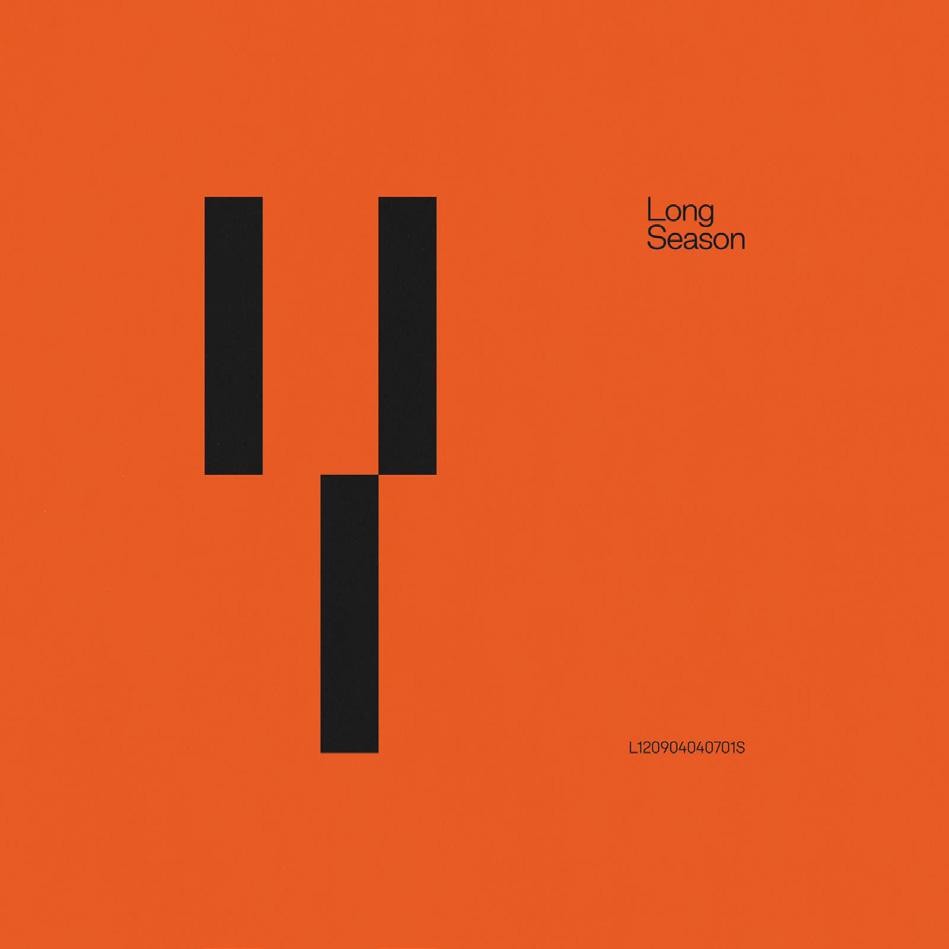

LONG SEASON LS Shorts – R650 | LS Multi Wrap – R2500 | LS T-Shirts blk/wht – R750
CREATIVITY IS A PATH TO PRACTISING NEW REALITIES.
Written by Michè Edwards
It’s seen that once you come into an open and honest relationship with a craft, you have given it permission to constantly unravel you as it mends, bends and shifts your consciousness in a way you’ll probably never shrink back to. The photographers we’ve featured all have an intimacy with their work in a similar way. They project stories that hold a narrative to pay close attention to. Some build doorways into other worlds that are an ode to escapism. Others create worlds to invite play as their inner child runs through fields of possibilities. In a very digital pollutive culture we live in, photography is an ageless medium that makes sure to lock in the fullness of moments. Moments not to be lost in time but to be kept alive
With this we are able to grab and hold onto something tangible, to reminisce, to hope and to dream. The 8 photographers do this very well, those being:
Nondumiso Shange
Assante Chiweshe
Mika Guliwe
Mishaal Gangaram
Dineo Mtetwa
Thabo Mthombeni
Henry Hansen
Katleho Mavundla
CONVERSATIONS WITH THESE ARTISTS LED TO SO MANY AWAKENINGS AND REALISATIONS. THROUGH THE AFFIRMATIVE INTERACTIONS I TOOK AWAY REMINDERS:
It’s okay to just start. Pick up that camera, paint the picture, go for that first art lesson. These creatives could not measure that they would have been so far into their journey if they did not start somewhere. It’s important to take risks and create our own intentional opportunities.
Community could potentially serve you better than solitude can. When you have a community you really have a whole village who is willing to be interested in your work, who can provide feedback and who are willing to provide you with tools that make the journey a bit less dense. So, we should build connections and nurture them.
We need to nurture ourselves and our crafts and vice versa. I say this keeping in mind that our creative outlets reflect back to us a mirror. The true effects of a practice will show up in our daily lives and more so in what we love doing so pouring time, energy and effort and being mindful of habitual ways is a game changer.
Taking these in mind, we hope that this issue is a fruitful read. We hope that you get inspired and excited for your own ventures. The stories of these creatives are here to bring light to any defeat of your own. Take it as a sign to release judgement, fear or anything holding you back from becoming you.
58 ISSUE13 IQHAWEMAGAZINE

59 IQHAWEMAGAZINE ISSUE13
 Interviews by Michè Edwards
Interviews by Michè Edwards
As we searched words to find the three most fitting words that best outline her work, we free-styled (it was pretty fun) and she positively agreed with the following three words: NONDUMISO SHANGE’S WORK IS ENCOMPASSING, YOUTHFUL AND CINEMATIC There’s subtle touches of surrealism that glances back at you through her work, the kind that emulates imaginative stories in the subconscious. Nondumiso admires films, cinematography and has a soft love for travel. This sublimely communicates her chase for seeing more and doing more.
Instagram: @nondumisoshangee
NONDUMISO SHANGE
61 IQHAWEMAGAZINE ISSUE13 INDUSTRY: PHOTOGRAPHY
WHO IS NONDUMISO AND WHERE DID YOUR PHOTOGRAPHY JOURNEY BEGIN?
My name is Nondumiso Shange. I’m a 22 year old black woman living in South Africa. With regards to how my photography started. Initially I started taking pictures as a child. I had those little Nintendos with a camera on them and I would take photos of my family when we were on vacation like in the Drakensberg for example. Little things from there is where I started being in love with the concept of photography and capturing moments.

ARE THERE ANY OTHER MEDIUMS YOU DABBLE IN?
I dabble in videography. I’m currently trying to get into cinematography, my other love is film and film making and getting into the depths of films. From a young age I’d watch a lot of movies. I think that had to do with my love for photography and getting into the whole craft eventually.

PLEASE GIVES US 3 WORDS THAT DESCRIBE YOUR WORK, AND ELABORATE ON THOSE?
Encompassing. Youthful. Cinematic. A lot of my inspiration comes from family vacations. In my creative bio I wrote that a lot of the time I like to get inspiration from different pieces whether in a new country or a new place in JHB - a club, or restaurant. I like to explore and get inspiration from my surroundings. In the past year my sister and I
went to South Korea. The way people dress there, the mannerisms, even the little detailing in the city and buses. Even with a new film or show, that could be a source of inspiration in terms of taking you to a new place. When you watch a foreign film from Brazil for example like City of God, you can’t not be inspired. So yes, new experiences, new places.
Also, growing up in South Africa and seeing your different traditions under your different subgroups of black people like your Zulu’s’, Xhosa’s, Tswana etc. - I think that’s a source of inspiration that I want to delve more into.
HOW DOES TRAVEL INFLUENCE/SHAPE YOUR WORK?
As soon as I enter a new space I immediately get mesmerised. One of my favourite places that I’ve travelled to with my family is Hong Kong and prior to travelling to Hong Kong I had been a big fan of Wong Kar-wai, a big Hong Kong director. Just neon lights, like little things about a city, gets me excited.
I SEE FROM YOUR INSTAGRAM YOU HAVE MOVIE INSPIRATION. WHAT’S SOME OF YOUR OTHER INFLUENCES AND INSPIRATIONS?
Another movie that I like a lot and source my inspiration from is ‘Moonlight’. I really love the depiction of black people. There’s not a lot of representation of black queer men that is not in a
62 ISSUE13 IQHAWEMAGAZINE
negative or traumatic light. I thought the way they portrayed black male gay love was beautiful and it’s something I’d love to portray in my own work. I’ve got a couple of projects lined up that I hope will present that. In terms of artists, another source of inspiration is Tony Gum. She’s an amazing South African artist and every time I look at her work I get mesmerised.
DO YOU SHARE YOUR LIVED EXPERIENCES THROUGH YOUR WORK?
Yes and no. Going back to the world encompassing. Because I have been exposed to many places and it’s many different aspects of what I’m seeing and not necessarily a representation of my own life. And what I said prior, that’s something I do want to delve into with my own Zulu culture, with my own South African heritage, with blackness - all of that is what I want to delve into with my future work. Also, representing black women in a specific way and black queer women in a specific way. That’s where I hope my work leads to.
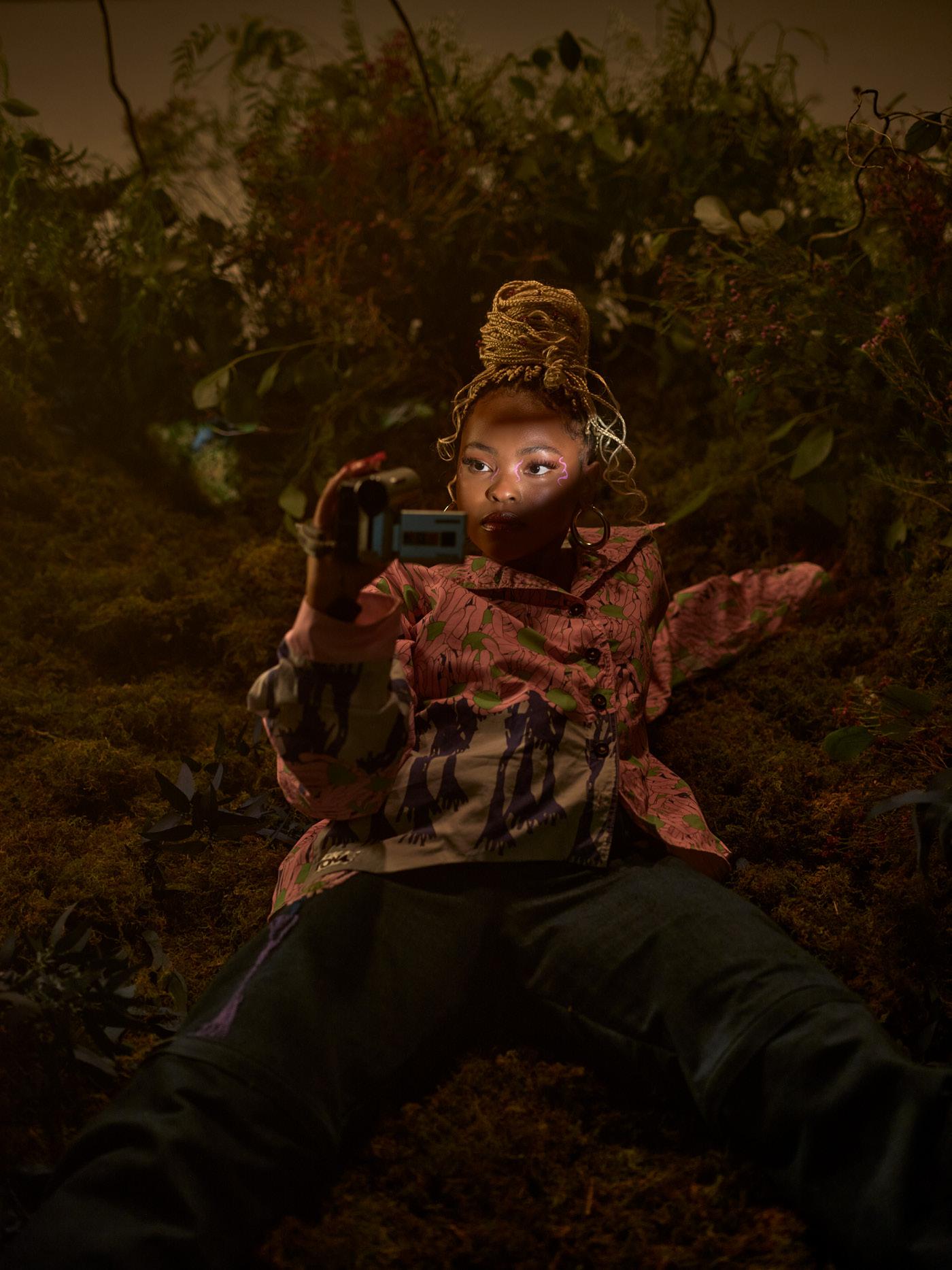
63 IQHAWEMAGAZINE ISSUE13
ASSANTE
THIS FRIDA KAHLO STAN, calls herself an underdog but we beg to differ. Assante Chiweshe known to her peers and the industry as Kahlo Greed is seamlessly trapping her youth into time as she captures the experiences surging in and around her. The ‘Assante and Film’ acquaintance has seen her move with candour on her photography journey but it’s also revealed very real lessons that come with anxiety, laughter, tears, and joy. Pellucidly showing us that artistry is an intimate choice and an honest one that will see all your parts.
Instagram: @kahlo.greed
64 ISSUE13 IQHAWEMAGAZINE

WHO IS ASSANTE AND WHERE DID YOUR PHOTOGRAPHY JOURNEY BEGIN?
My name is Assante Chiweshe and I go by Kahlo Greed as well. The name comes from me being very obsessed with Frida Kahlo and everything that she stood for, her androgyny, and her beautiful work constantly made when she was alive. The Greed part was an affirmation that as a black woman, as a queer person and as a creative I just need to go for it and take what’s mine. I’m meant to be in this space.

My photography journey started very abruptly. I started having dreams about shooting and I would wake up in the middle of the night and be confused because I don’t know where all of this sudden urge to be a photographer and creative came from. I think it was my father trying to reach out to me and let me know that it’s what he wants me to do because he could never do it when he was alive. Sounds cliché but I think it was written in the stars and I received positive affirmation.
WHY FILM PHOTOGRAPHY?
When I was younger I was wildly obsessed with tumblr and I would see these celebrities, like Drake and Lil Uzi Vert. I’d wonder how these images were taken, like the grain, the
colour etc. This one time I was at Afropunk with a friend and I took a picture of him using the camera and when it came out I fell in love. I fell in love with the dynamic range, the vibrant colours and the ‘you never know what you’re gonna get’ aspect of it.
DESCRIBE YOUR RELATIONSHIP WITH YOURSELF AND PHOTOGRAPHY.
I feel like right now I’m at a good place with my work and I have started believing that I can do what I do. Before, it started off with me being very separated from my work. I wasn’t very sure. I used to compare myself to a lot of people. It’s that imposter syndrome. It’s shifted and I’ve learnt to trust myself when I do shoot and present my work.
YOUR WORK SETS IN STONE THE FLEETING YOUTH IN THEIR PRIME. IS THIS YOUR INTEREST IN CAPTURING MOMENTS THAT SHOULD BE LOCKED?
I’d say yes. It’s coming to my attention that history repeats itself. If you go back to pictures that our parents used to take while out at raves or out with friends and their community, it looks the same to what I capture. So, I think I’m trying to capture my experiences and how I’m growing up, and how I feel toward society. I’m very lucky that all of my friends are
66 ISSUE13 IQHAWEMAGAZINE
models so it kind of helps. I think that’s how you get the most authentic picture. Capturing people around you. HOW DO YOU NURTURE YOUR CRAFT AND MAKE SURE TO HOLD SPACE FOR YOUR CREATIVITY?

I try not to put as much pressure on myself with shooting. So, if I’m not shooting I still have my camera with me. For example, on a night out I can take pictures of my friends, I can document what’s happening. I could see the images without me needing to post them. I like to keep archives for myself and do it for myself, not necessarily always post on instagram.
WHAT DO YOU FEEL YOUR CRAFT HAS SHOWN YOU ABOUT YOURSELF?
Sometimes my emotions can be very involved in what I do and I did not know that up until now. I did not know the way that my emotions affect my relationships, my work and the spaces that I go to so it’s definitely been an eye opener. A lot of tears, happiness, laughter, joy - everything you could think of. Anxiety. It’s all been a mix. Right now I’m trying to learn to separate the two and not allow my work to define the person that I am.
WHAT ARE YOU MORE MINDFUL OF NOW ON YOUR
JOURNEY THAN YOU WERE A FEW YEARS BACK?
I think making sure that my subject is true to my vision and that it’s true to their vision as well. Obviously in professional spaces you don’t always pick who you shoot but when it comes to my own work I make sure the model is comfortable, I make sure we’re both doing it for a reason and that we’re connecting. Most of the work I post on my instagram is a prime example of me connecting with the subject and having a good time while shooting. Also, asking for consent is important.
ANYONE YOU HOPE TO WORK WITH? OR IMAGINATIVE WORLDS YOU WISH TO MAKE ALIVE THIS YEAR?
I don’t necessarily have anyone I want to work with because I believe that everything happens for a reason so if they cross my path we were meant to work together. But, I definitely want to push out a personal project that is very special to me which involves me going back to Zimbabwe to visit my grandparents. To take the time to reboot and reconnect my thoughts, document that side, the story behind that diaspora and merging the two worlds. The world that I live in now and the world my parents lived in.
67 IQHAWEMAGAZINE ISSUE13
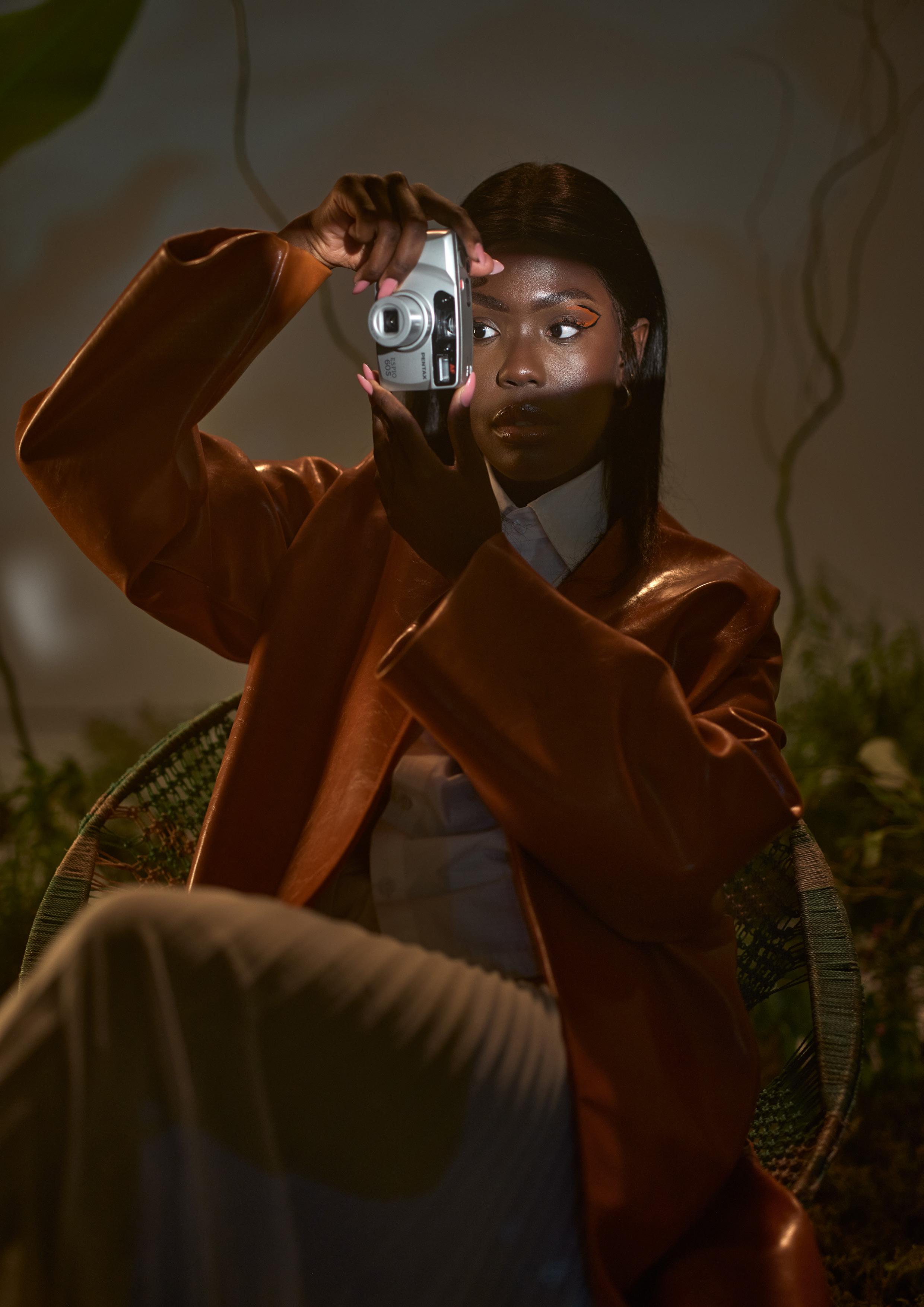
MIKA
After a call of sharing thoughts, laughing and exchanging words of affirmation, It’s a sure revelation that MIKA GULIWE WALKS WITH AN UNDOUBTED AMOUNT OF ASSURANCE FOR HERSELF AND THE BECOMING SHE IS YET TO MEET. Her work speaks for that split second where everything felt just right and that’s what she captures, a right moment. It was a random awakening Mika recalls that led her down a path that now sees euphoria burgeoning through her photos (you’ll read all about it). Mika is all for the ‘girlies’ in the industry and encourages anybody with self-doubt to break out saying “You can’t compete where you do not compare. I’m also saying that not just to other people but to myself as well. There’s literally no one else like you in the world, and that is your power.”
Instagram: @mikamercy_
69 IQHAWEMAGAZINE ISSUE13
TELL US ABOUT MIKA, YOUR PHOTOGRAPHY JOURNEY AND WHERE IT STARTED?

Mika is a very quirky and interesting human being. I love anything that’s different given the type of person that I am and my experiences up to now. They haven’t been the greatest and not in a very hectic way. Growing up in a school where I was bullied, I was always the awkward one so I kind of had to be either smart or talented at something because I wanted to belong. So, because of that I’ve always been interested in something different. People who had very weird talents, and it didn’t have to be just artistic ones. Like being good at netball, or cooking, makeup. I’ve always been drawn to people who are good at something unconventional. So, Mika is the type of person who’s interested in things that have a story to tell.
My photography journey started in the 11th grade when my uncle bought me a camera which I didn’t ask for. I think it just clocked him that maybe a camera would be good for this little human being. I’ve been taking pictures since. Since I was 17.
HOW’S THE JOURNEY BEEN SO FAR?
Creatively it’s been great. Obviously I do have situations where I experience creative blocks and I want to execute but it’ll be so tough because I don’t have the resources or the team to try and bring those ideas to life. These things require a team, money, time and effort and it can be very tough when you’re still trying to find your feet. I’m not a well known famous photographer but it can be tough when you want to execute something. But, it doesn’t stop me from still doing it and trying to use the resources that I have. I feel like one thing about being creative and whatever that means to someone, is that you always pivot. You use those struggles as a will to come out on top. If I can not be the best I can be different.
WHAT SUBJECT MATTER AND SETTING APPEALS TO YOU MOST?
It’s actually not the setting or subject matter that appeals to me. The real reason why I started taking photography so seriously is because of what my late grandmother said to me. I was raised by her my whole life and I remember one day creating and going through an existential crisis, bored and thought let me bother my grandmother. I asked her “yoh Gogo, if the house was burning down what are the three things you’d save?” She said to me “I’d save our I.D’s, my family and my photo albums”. I found that very interesting and I asked her why the photo albums and she said because that’s the last memory we have of our loved ones. You need something tangible that will remind you of them. It’s more than just a picture, a picture tells a narrative.
ON YOUR INSTAGRAM THERE’S IMAGES YOU
70 ISSUE13 IQHAWEMAGAZINE
TAKE OF PEOPLE IN THEIR MOST NATURAL ELEMENT, A LOT OF THEM JUST HAVING A GOOD TIME. IS THIS YOUR LIKING FOR A VERY ORGANIC AESTHETIC?
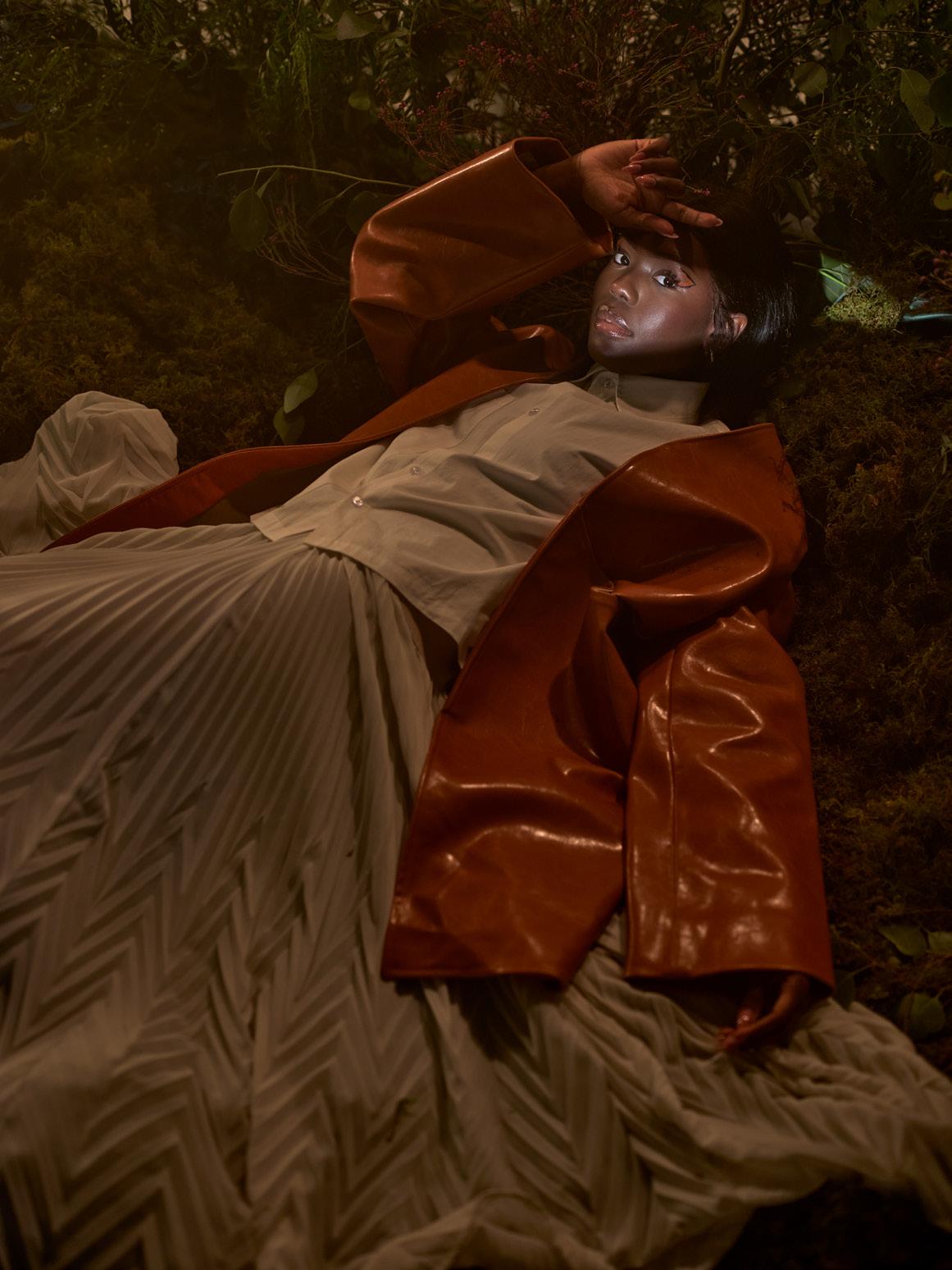
To be honest I don’t think that far. I think a lot of the time it’s about capturing the moment and what story is that picture telling. There’s times I’d go to an event and take pictures there but it’s so different from event photography. Both a photographer and myself would be at an event shooting but our pictures are very different. For me, it’s more of a “oh, this is such a cool moment, people are being themselves, let me just capture that quickly”. I always look for a story to tell.
DO YOU FEEL IT’S IMPORTANT FOR CREATIVES TO BE OPEN ABOUT THEIR EXPERIENCES?
I think it’s important to share their experiences and not just the fun part. It makes you relatable. One thing about your creative work is that it’s not shaped by how talented you are sometimes but it’s mostly shaped by your daily habits, like what are you doing to get to where you wanna be. I also think it’s important because you can create a community. I lost the pictures in Thailand and posted about it in my story and a really good reputable photographer uAndile reached out to me and said don’t give up, capture your work in real-time so that when you go back and see the amount of pictures that you’ve lost you’ll appreciate it. You’ll figure out what went wrong and what you could have done differently. So, I think by daring to be vulnerable and sharing those experiences, you will get the type of support that you need.
I READ A POST OF YOURS WHERE YOU SPOKE ABOUT YOUR PROCESS OF REVIEW AND REFLECTION WITH YOUR WORK AND NOT COMPARING YOUR WORK TO YOUR COUNTERPARTS IN THE INDUSTRY. CAN WE SPEAK ABOUT STAYING IN YOUR OWN LANE AND NOT FALLING INTO THE TRAP OF COMPARISON?
I keep preaching this to my friends, whether you’re creative or not. I keep telling them that insecurities are so pointless. The concept of it is valid but it’s also pointless because there’s no one above you and there’s no one below you. You can’t compete where you do not compare. I’m also saying that not just to other people but to myself as well. There’s literally no one else like you in the world, and that is your power. I’d be damned if someone is not yet to share their work because they fear they might not be good enough. If anything I feel like people fear that they could be great. You actually fear that you’d succeed then what? Prove yourself wrong then what? Things might work out for the better then what? If you’re in a situation where an opportunity presents itself it’s not by chance or by luck it’s for a reason. It’s a testimony to what you’re doing so don’t ever feel like you don’t belong. Simple maths.
71 IQHAWEMAGAZINE ISSUE13
Mishaal Gangaram reminds us that TAPPING INTO YOUR INNER CHILD COULD BE JUST WHERE YOUR POT OF GOLD MAY BE LYING. “A lot of my creativity stems from that inner child. Young Mishaal was a super shy kid and a nerd. I think that he never thought this life could be his. I think just remembering that and keeping that energy, playing, being silly and having lighter moments.” Paying attention to Greek mythology and constructing worlds of fey, “SON of MIDAS ‘’ pays homage to the geeker, the kid who wants to submerge in play and who deserves a stake at being represented. The collective ‘Children of Midas’ is his creative team who’s built a fort of both work and play. They assign themselves the duty of giving birth to an ethereal surprise.
Instagram: @mishaalganjaz
GANGARAM MISHAAL
72 ISSUE13 IQHAWEMAGAZINE

WHO IS MISHAAL AND WHERE DID YOUR PHOTOGRAPHY JOURNEY BEGIN?
I’m Mishaal Gangaram. My alter-ego that I go by in the art space is called the ‘SON OF MIDAS’ and predominantly work quite heavily in the music space with album covers and press shoots. That’s kind of where a lot of my success has come from and that’s helped me branch into different fields. As a profession I’m an electrical engineer. I studied at UCT and I finished at the end of 2019 and then I needed to express myself more and felt very stuck doing that. I moved to Joburg and I was like I’m gonna give myself 1 year and figure out if I really can do this art stuff. 2020 was a very shaky time. It was COVID and I lived by myself so it made me really focus on my art and made me delve into myself a lot. I kind of found an outlet for my mental health through my art and I started shooting myself in my house with super simple stuff. Then it went to people coming into my little apartment, into my lounge to start shooting and then eventually building a studio space and then getting more and more gigs.
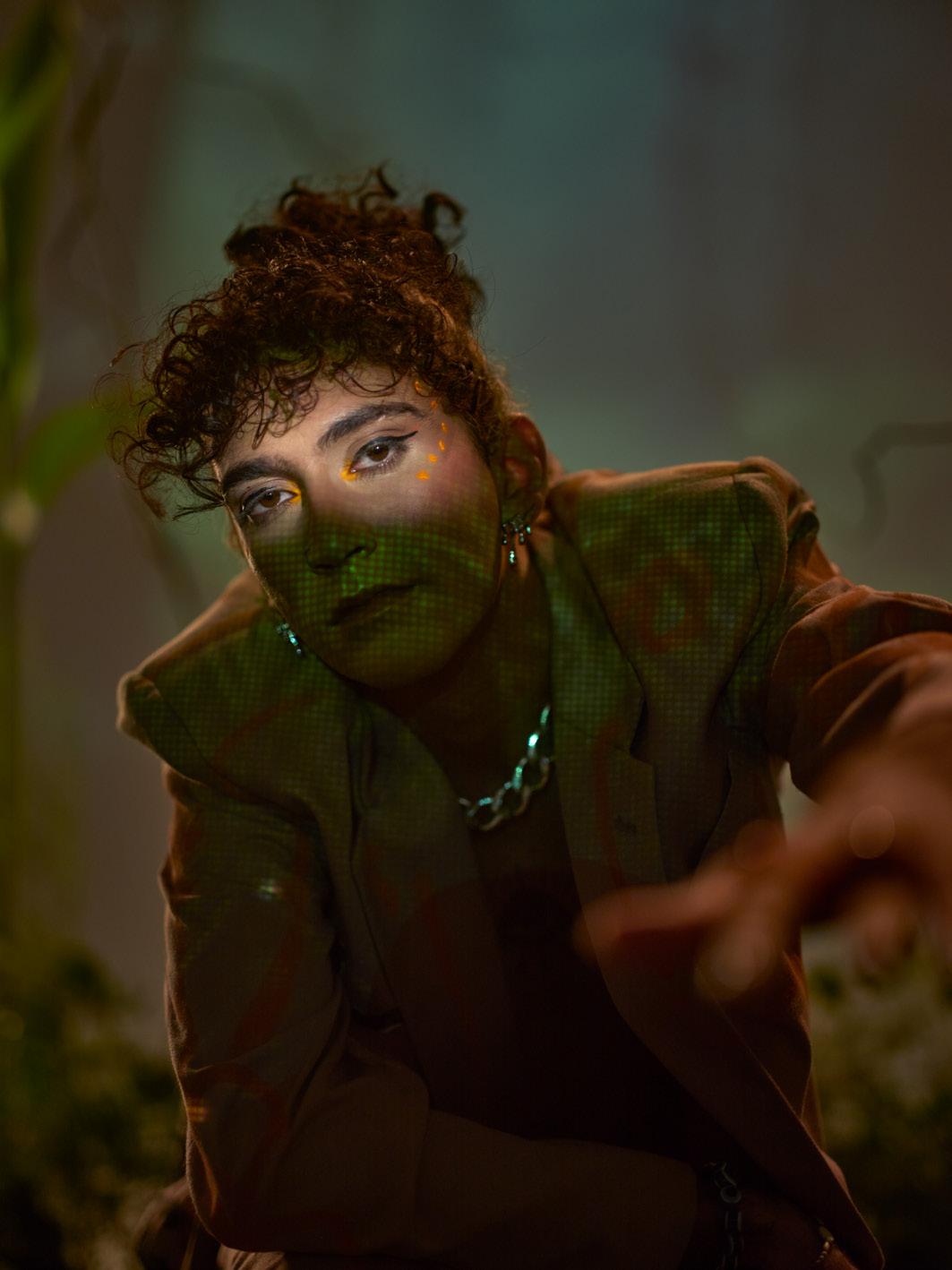
YOU SPEAK OF YOUR CREATIVITY BEING YOUR OUTLET, CAN WE TOUCH ON THAT?
I think for me it’s started in lockdown and one of the core things that I always try to keep and what we carry through in the team is try to tell real stories and just find ways to tell that creatively differently
and in ways it hasn’t been done before. For me, during lockdown I think I had to deal with a lot of my mental health and just being alone. I moved to Joburg not knowing what I’m gonna do with my life and trying to figure that out. I think using my work and using the tools that I had and the stories I wanted to tell of myself was really a big outlet. At the time I struggled to talk about my own mental health but using my work I created pieces that spoke on that and then I ended up speaking about the work and in that way started opening up about my own mental health to the people around me. Now I carry the same sentiment about how I approach work and how I approach clients. I really want to tell their story. I think consumers would be more attached to it if it has a real story. I’m also trying to move away from the title of being a photographer and I’m labelling myself more as a visual artist. I dabble in a lot of things such as the arts, directing, creative direction. I think now with building the team I can take a backseat role with photography.
YOU’RE A STORYTELLER / CREATIVE DIRECTOR. CAN WE TALK ABOUT THAT, AND HOW IT ASSISTS YOU IN BRINGING FORTH YOUR WORK THE WAY YOU ENVISION AND CONCEPTUALISE IT?
Telling stories is super important to me, it’s real stuff. The stuff I want to do on a personal level is very much story driven and it comes from a lot of my own experiences with my own mental health and my tradition, my home. One of the biggest things as my artist statement is telling the stories of those who can’t and finding ways to tell them in a disruptive narrative. A lot of my personal work stems from speaking to people and my personal experiences with them and getting their unheard stories and turning them into something visual that they can hold tangible when they look at it. That sentiment is also held through the commercial work and artist work that we do.
IT’S A THING FOR ONE’S CRAFT TO TEAR THEM OPEN WHERE THEY UNRAVEL. HOW DO YOU UNRAVEL THROUGH YOUR CREATIVE PROCESS?
I sit in my head and I sit with my team. When we get put on bigger jobs that’s when the full team is involved. Sometimes it’s smaller jobs and sections of the team where it’s people we think would be best fit for it. Brainstorming and chatting with the person we’re dealing with and getting their perspective. Also, Moodboarding, looking at books for reference, using AI. I’ve got a lot into the AI space and I’m using it to my advantage. So when we’re doing a mood board it’s generating the images we see in our heads and that way showing our clients how it’s going to look like. Also, tying back to my own emotions. Maybe if in a shoot we’re trying to evoke a certain emotion I tend to reflect what that
74 ISSUE13 IQHAWEMAGAZINE
emotion means to me and my own experience with that emotion.
LET’S TOUCH ON SUBJECT MATTER AND COMPOSITION. HOW DO YOU GO ABOUT BRINGING FORTH YOUR SUBJECT MATTER THROUGH YOUR WORK?
Being an engineer it’s made me a super technical person and I’ve always been a maths head. One of my favourite things doing engineering was my research phase when I did my honours. The process of doing that research. I carry the same notion every time we make a treatment. It’s looking into things, it’s researching things. It’s the planning stage that’s even more important than the shoot days sometimes and it’s something we hold closely. A lot of my work is studio photography and studio based because being that technical person I’ve learnt to control my lighting, control my environment, build my scenes and then take it into post.
ANY PHILOSOPHICAL VIEWS/IDEAS/BELIEFS THAT YOU LIVE BY THAT MAY OR MAY INFLUENCE YOUR WORK.
I definitely have a big love for Greek mythology
which comes in the name ‘Children of Midas’ and ‘Son of Midas’. So mythology stories. I’m also just a kid at heart. We’re just a bunch of kids and I like to draw references from my inner child and find modern interpretations of that. Taking that and relating it back. So yes, I’m a big fan of mythology and I’m also a super comical nerd. I think I also draw my love for the outworks type of aesthetic from.

CAN WE TALK ABOUT HOW SIGNIFICANT IT CAN BE TO NURTURE AN INNER CHILD?
I think my inner child is super important. I think it’s something we keep reminding ourselves, calling ourselves ‘children’ is a big part of who we are. A lot of my creativity stems from that inner child. Young Mishaal was a super shy kid and a nerd. I think that he never thought this life could be his. I think just remembering that and keeping that energy, playing, being silly and having lighter moments. I’m grateful that I found a team that is just as childish and wants to play just as much as I do and we always make time for that. We try our best to make time to be okay to be silly, be dumb and do what we want to do. That’s why as a team we’ve become very much a family.
75 IQHAWEMAGAZINE ISSUE13
DINEO MTETWA
Dineo Mtetwa IS BOLDLY RECOGNISED FOR DOCUMENTING THE TALES OF OTHERS THAT NEED TO BE TOLD AND REPRESENTED IN ITS RICHEST AND RAWEST SETTING. Her upbringing in Soweto carries sentiments in her work that speak loud to a community and the authentic stories that shape her. “Sometimes we forget about the reality happening around us. So for me it’s keeping that story. I always imagine South African townships evolving and in 50 years time it won’t look like that. Photographers like me get to capture how it looks right now. It’s about keeping the archive alive.” Dineo’s work is a celebration of holding onto the surroundings that have grown you, tested you and that make you.
Instagram: @okaydineo
76 ISSUE13 IQHAWEMAGAZINE
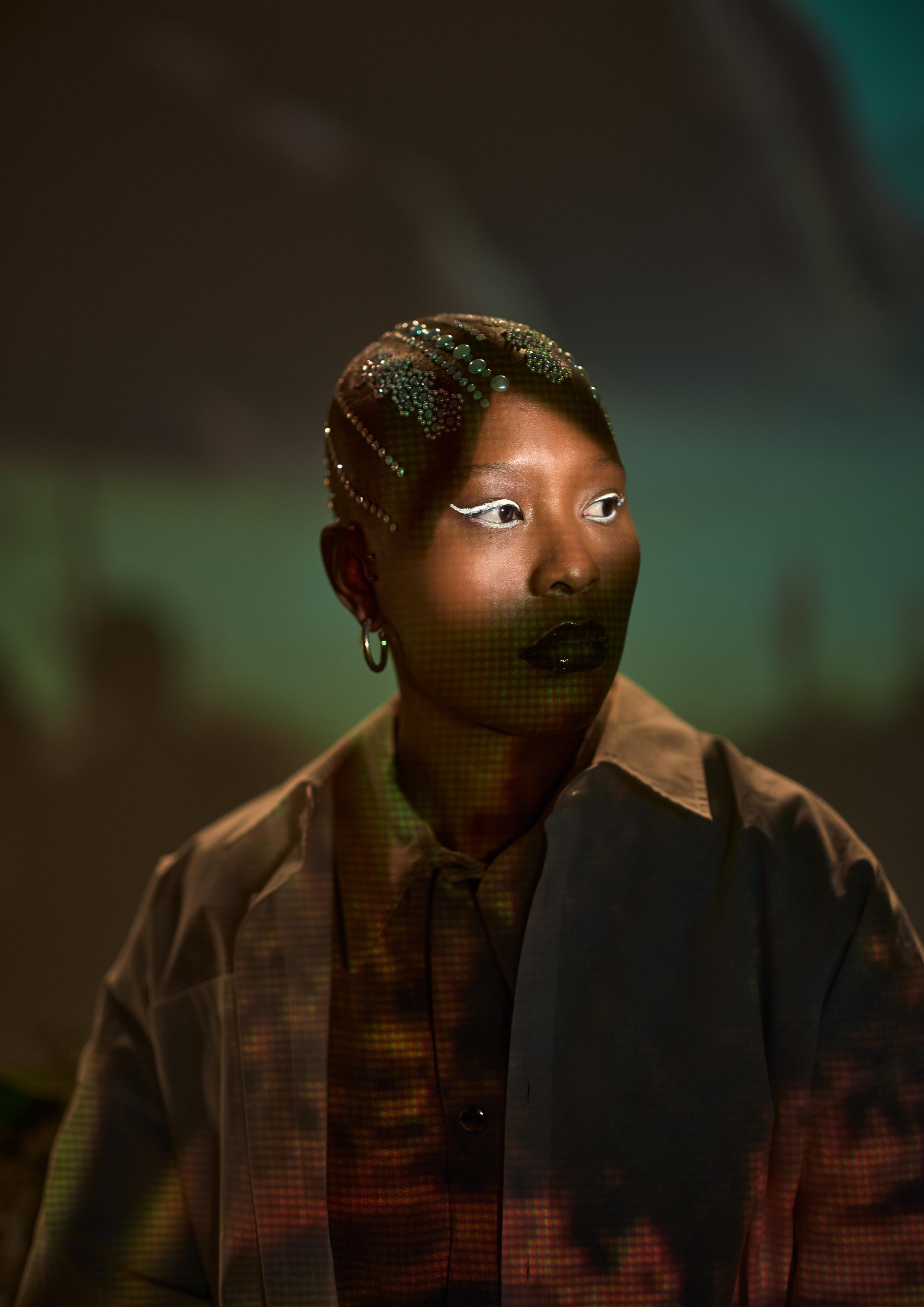
WHERE ARE YOU FROM, HOW DID PHOTOGRAPHY FALL INTO YOUR PATH?
I’m from Soweto and that has informed a lot of how I look at the world because I went to primary school, high school, crèche- everything in Soweto. When I went to varsity I had to get to know myself and a huge part of that was because I was from Soweto. Getting into Anthropology, in my first year where I had no idea what it was. They’d teach us about race, gender and all these things I wasn’t aware of. Then there was a photography lecture where we had to analyse pictures and I really enjoyed playing with archives. At the same time I wanted to be a curator more than anything. I feel like just telling a story has always been a thing for me, and capturing the narrative. I came across a photographer from Soweto and I approached him and asked him “could I curate an exhibition of yours one day?” and he told me I was an amateur. I was like okay cool if I’m an amateur I need to do my own thing and that’s when I started taking pictures with my phone. I took a picture of iKota which is something really basic but people thought it was really cool. So, I started documenting where I’m from and the people I see everyday. With everything I see is how I started photography. I just started taking photo-walks around my community and interacted with people. That’s when I saw my community also vibes with having their pictures and stories taken. I thought okay cool, I’m going to keep doing this.
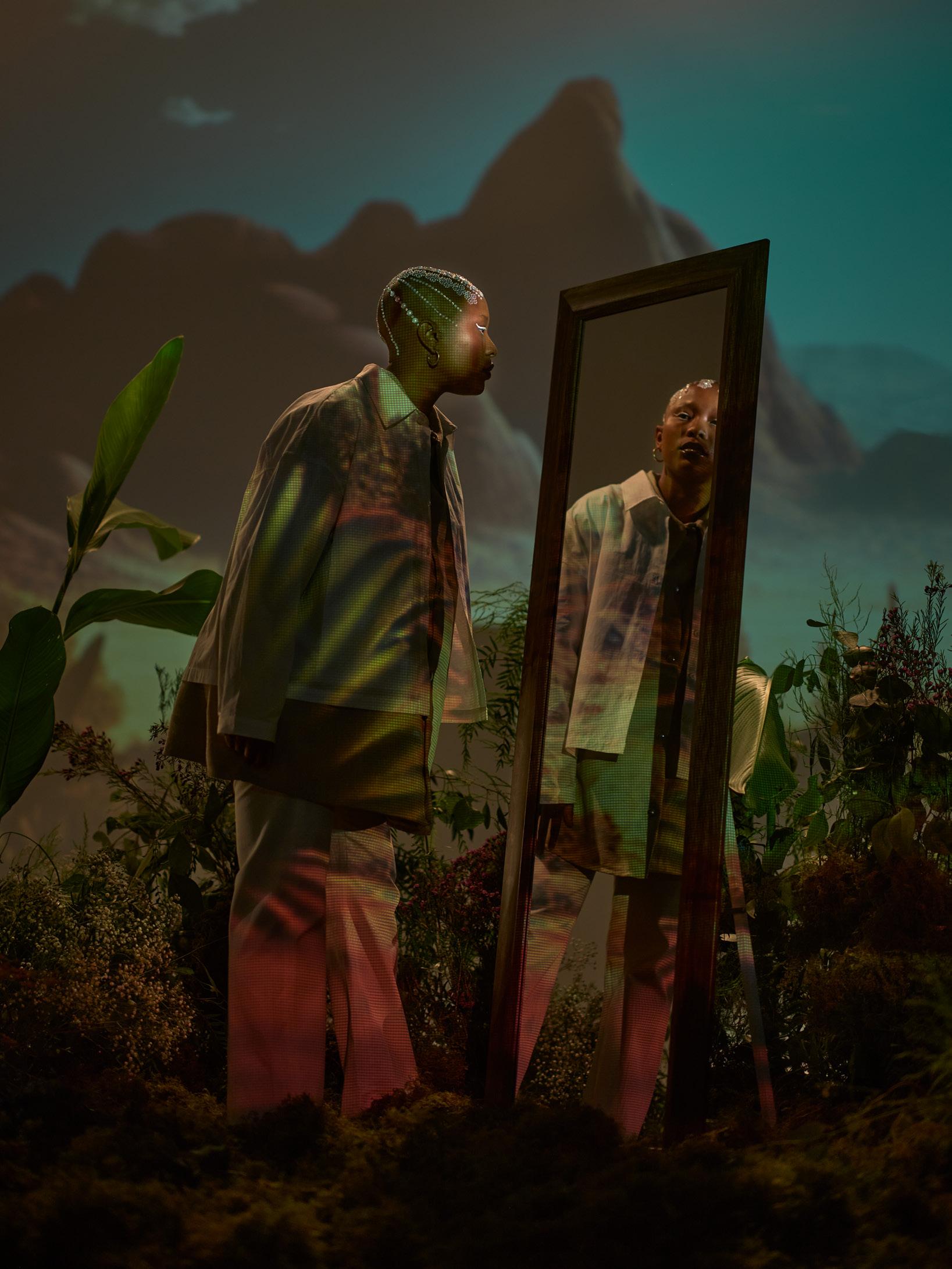
78 ISSUE13 IQHAWEMAGAZINE
GROWING UP IN SOWETO PLAYS A BIG ROLE IN WHAT YOU DO. TELL US HOW A CULTURAL BACKGROUND AND UPBRINGING HAS SHAPED YOU AND LED YOUR PATH?
More than anything, I think it’s through the people and how we grow up that you see what you want to keep. For instance the things that you’d see at your grandmother’s house, those pink and white cats or the blompot or the room dividers - those are all things that we can’t get anymore. So, I think more than anything it’s wanting to keep that. Soweto is so multicultural and you get to interact with so many people. You get to know them through their culture and you go to school with so many people being Venda, Tsonga, and Sotho. This one time on my first day in high-school, because my name is Dineo (and it being a Xhosa name) I went to this zulu class and the teacher was like “Please get out of my class! There’s absolutely no way you’re supposed to be here right now”. I had to sit in a Setswana class for a week and I got to learn some Setswana. You get to interact with so many people and you want to keep that. When you go through the internet you see these pictures of people doing it big and for me it was not a reality. I’d wanna document the real stuff, like it’s my everyday life and where I come from.
79 IQHAWEMAGAZINE ISSUE13
“Sometimes we forget about the reality happening around us. So for me it’s keeping that story. I always imagine South African townships evolving and in 50 years time it won’t look like that. Photographers like me get to capture how it looks right now. It’s about keeping the archive alive.”
HOW WOULD YOU DESCRIBE THE NARRATIVE THAT COMES THROUGH YOUR WORK?
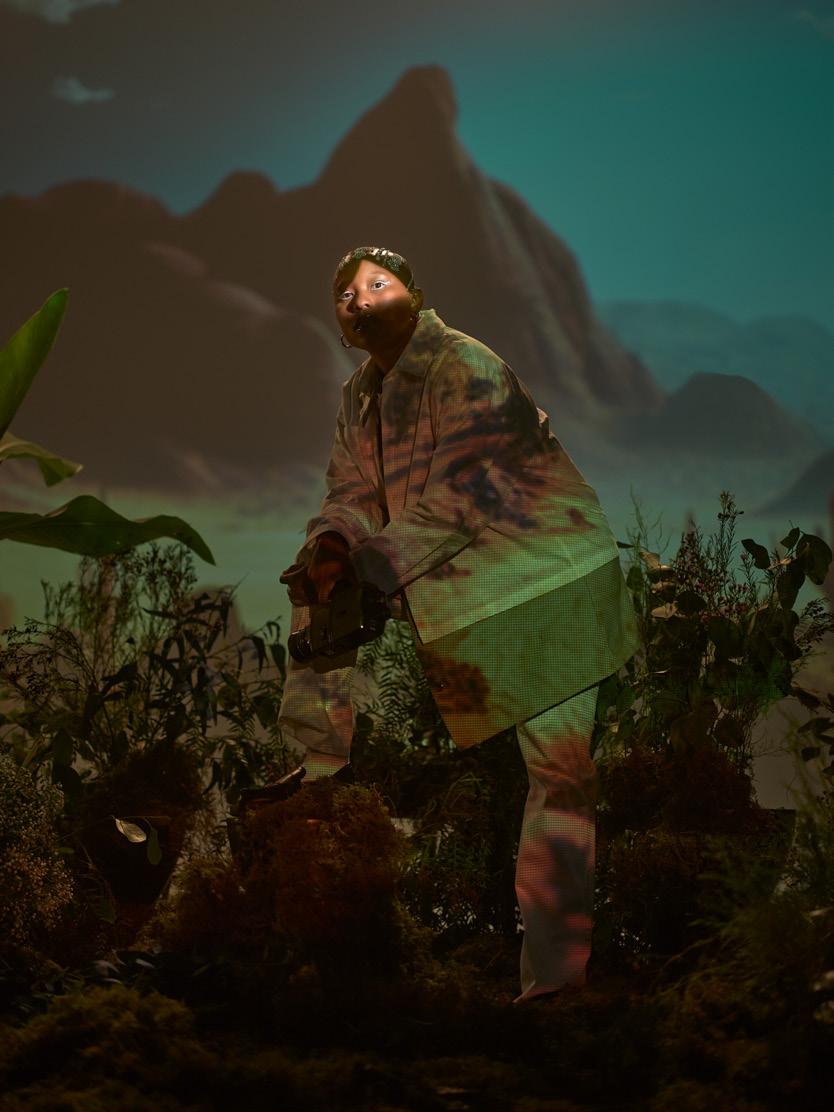
I always call my body of work a ‘Room Divider’ because when you see a room divider it’s an archive. No one uses it unless it’s the best guest who comes to visit. I want my work to be received that way. It’s not perfect because some of the glasses in there are broken but because they mean so much to gogo you still treat them with so much care. It’s an archive. I feel like I don’t see enough black stories in museums, even though we know about Santu Mofokeng and other struggle photographers but where is their work. We don’t learn about them in high school. So, I wanted to put it out there with our faces to it. Sometimes we forget about the reality happening around us. So for me it’s keeping that story. I always imagine South African townships evolving and in 50 years time it won’t look like that. Photographers like me get to capture how it looks right now. It’s about keeping the archive alive.
WOULD YOU SAY YOU SHARE YOUR LIFE EXPERIENCES THROUGH YOUR WORK?
Not entirely. I wish I was a photographer back in high school cause I feel like that’s where I got to know myself. That time has passed. Right now I get to capture the things that worry me, that make me happy and how I see my family or how I interact with them, and I get to interact with people by visiting them and going through photo albums.
YOUR MOST EXCITING PROJECT YOU’VE WORKED ON
It’s always a picture of taxis. There’s this one specific picture where I was the last passenger in the taxi. It was how I honestly saw the taxi industry. I then started doing research about taxis. Also, taking pictures during lock down. I wasn’t sure what I was doing. It was risky. It was the second day of lock down and I wanted to go buy some bread. People were socially distant and it was so intense. I’ve never seen the hood so empty so I wanted to take a walk and take pictures. So, definitely the COVID seriously that I did and the man inside the taxi.
80 ISSUE13 IQHAWEMAGAZINE
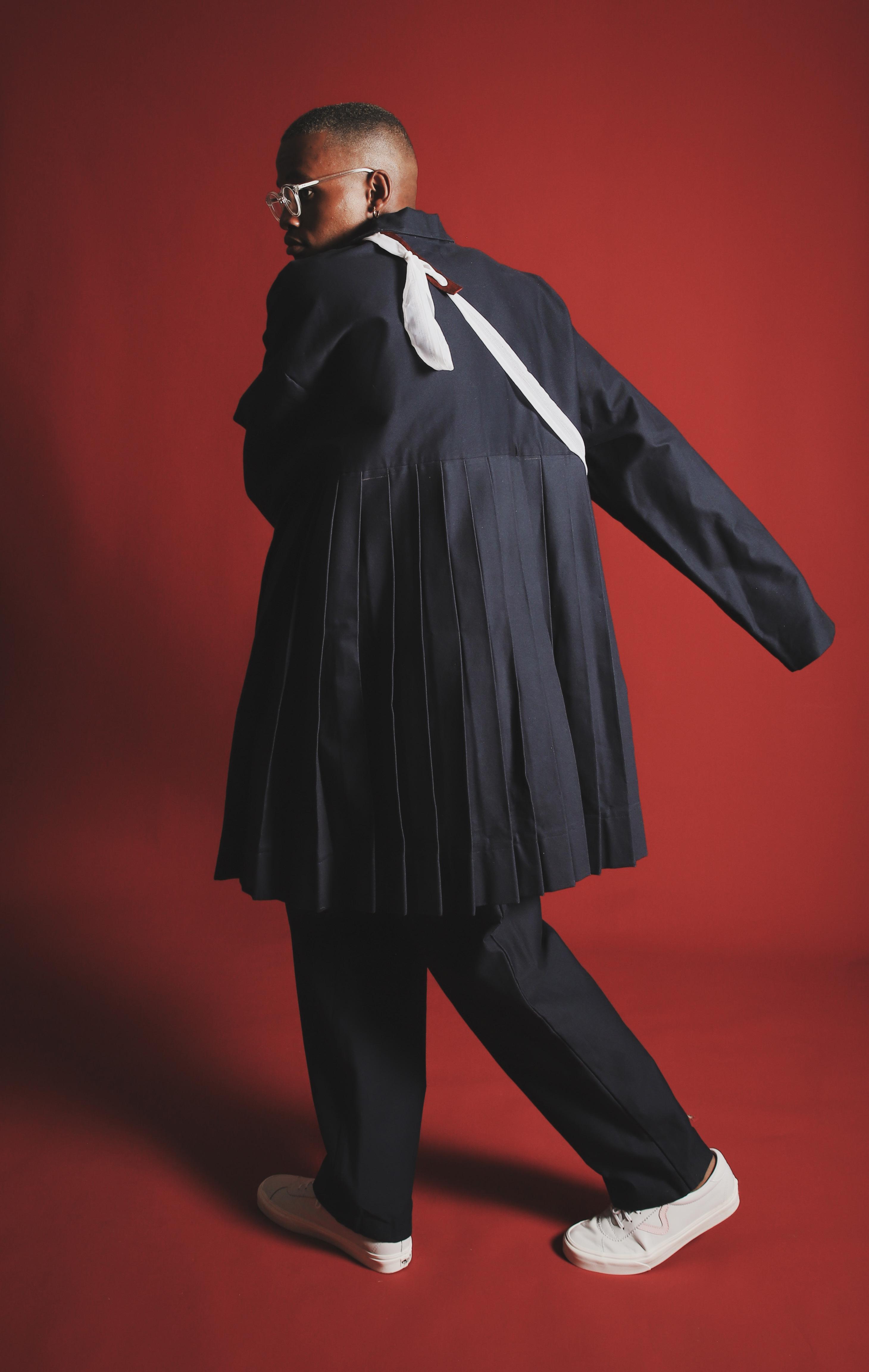

THABO KOPELE Pleat Collar
– R1000
Coat
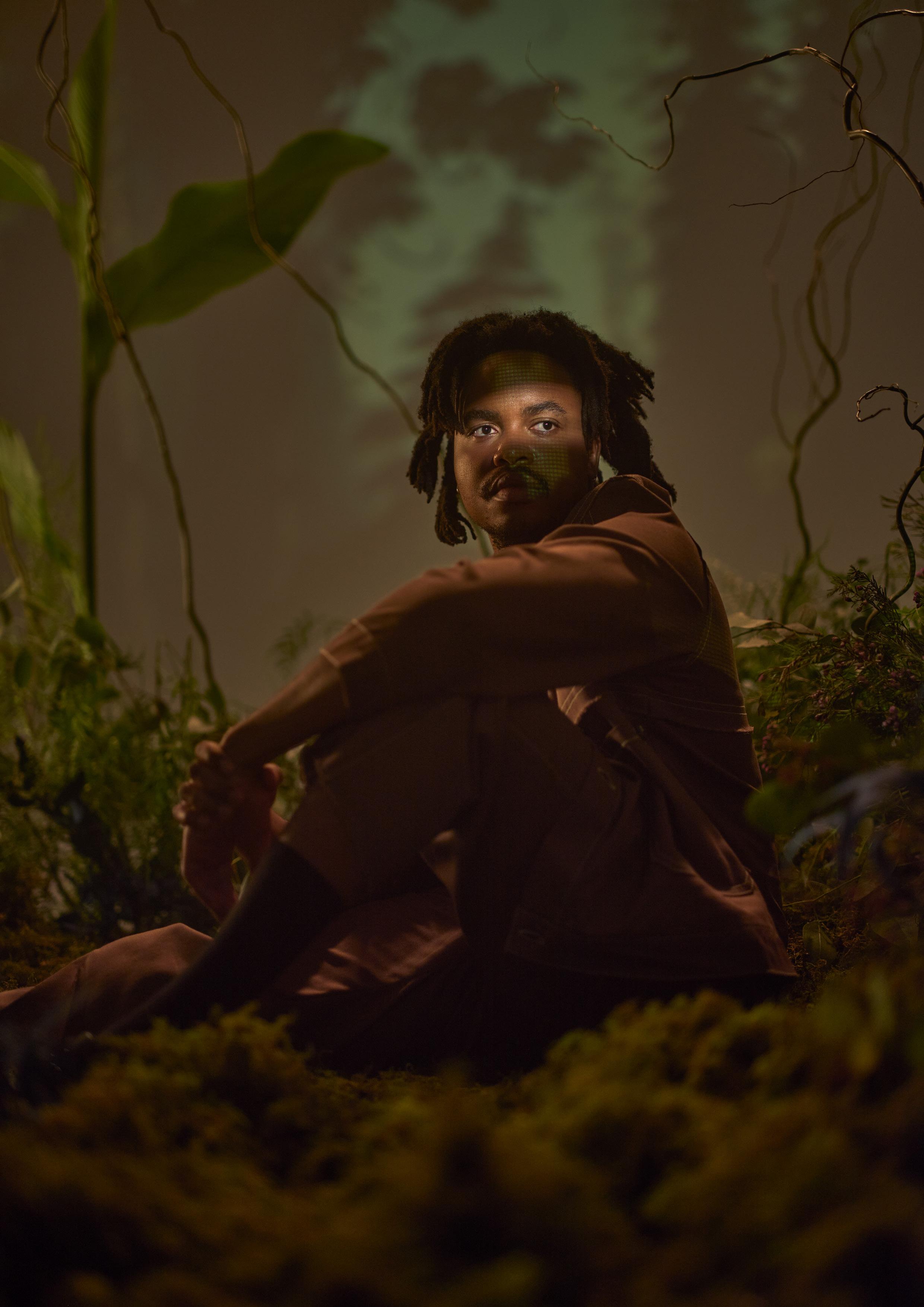
THABO MTHOMBENI
Downtown Thabz is what they call Thabo Mthombeni as HE MOVES THROUGH THE INDUSTRY WITH KNACK AND DISCERNMENT. He centres himself in the right place at the right time. He involves himself in a crowd to land images that we’ll probably be looking back at years from now with nostalgia and euphoria. Thabz locks in moments that require a wit and swift - of which he’s got. Whether it’s at Vogue Night, Boiler Room SA or Feel Good Series many were snapped having the best time. He’s managed to occupy a reputable list of event spaces, placing himself right in the middle of play and connection with subjects. It began with photography but his journey sees him spilling his creativity over into videography too. Thando noted that he’s busy cooking and conceptualising ideas that will later translate into something bigger. We’re excited to see what’s in the pipeline.
83 IQHAWEMAGAZINE ISSUE13
Instagram: @downtownthabz
WHO’S DOWNTOWN THABZ FOR THE PEOPLE WHO DON’T KNOW?
My name is Downtown Thabz, my actual name is Thabo Mthombeni. I started photography when I was in high school when I started taking pictures for the school rugby team during WAR cries. My mom bought me a camera at 16 when she saw I took an interest in photography. Literally the day she. Ought it I started messing around, playing with some of the settings on the camera. I didn’t know much about it, I was just trying it out. Fast forward a few years I start film school at Wits university and the first kind of introduction to proper photography is there. From there I just started taking my camera everywhere. A few of my friends like the images. A few event managers also liked the images and thought they could use them as promotions etc. I kind of took an interest in that. I liked being in those event spaces where people are their happiest really. Capturing moments for me isn’t difficult. It’s the first place where I learnt how to be a proper photographer. Then I started working with Kop Johannesburg and then from there I got other opportunities to work with Vogue nights. I’ve been shooting with them since 2019. Those two events really helped me get more opportunities and grow as a photographer. In terms of my own personal work it was mostly documentary styled work. Documenting where I’m at.
YOU DABBLE IN VIDEOGRAPHY AND EDITING TOO. CAN WE SPEAK ABOUT BEING UNBOXED AS A CREATIVE AND THE FLOW OF LEADING INTO OTHER MEDIUMS.
I think it’s important to always make time to create things and to evolve as a person. The whole term of being unboxed is a way of living. I DJ sometimes, I’ve played a couple DJ gigs. I’ve put mixes up on soundcloud. I’ve made a couple songs that I have to admit are not that good. But, just being in the process of creating is something beautiful and something that’s so important for any creative to have and another outlet that’s second from the outlet that you already have. A lot of artists like to dabble in photography as well because it helps you become expressive in another medium that translates into the creativity that you’re able to bring to your medium.
HOW DOES YOUR PHOTOGRAPHY WORK RELATE BACK TO YOU?
It’s a way for me to charge my growth. A lot of my stuff is also informed by my degree in Filmmaking which kind of taught us that this whole thing is a process. Everytime you make something, everytime you write something, everytime you shoot something, it should be a work in progress. It’s all just a work in progress and I think it’s the same thing with my photography. Bit by bit I’m trying to grow, I’m trying to educate myself and just trying to push myself. So I guess it relates to me in the sense that I’m always trying to grow through photography. It’s very necessary in my life in that way.
A SIGNIFICANT TIME FOR YOU AS A PHOTOGRAPHER.
Something that helped me more than anything. It was last year when Boiler Room came to SA and I got the opportunity to shoot at Boiler Room. I think the main change for me is I found a new superpower. I didn’t know that I could shoot such a huge event. It felt really impossible and far-fetched,
especially Boiler Room which is something we grew up watching as young kids like the Kaytranada videos and all of those cool sets. It was cool that I managed to be a part of that. It helped me a lot in my development and when I find myself at a feel good series or at these big events, I can handle myself and I’m comfortable in my abilities.

YOU’VE SHOT MANY EVENT SPACES, WHERE YOU LOCK IN MOMENTS FROM NIGHTLIFE EVENTS TO FEEL GOOD SERIES. IS THIS THE SIDE OF YOUR WORK THAT ALLOWS FOR SOME PLAY?
For sure. I think being able to get into this different realm and spaces is growth in itself. I’m used to a certain environment, a certain group of people, I’m used to a certain group of friends. As a photographer you’re forced to get out of your shell and make friends and make sure people are comfortable in the space before you’re even thinking of capturing the moments.
ANYTHING THAT HAS YOUR EYE RIGHT NOW THAT YOU’RE EXPERIMENTING WITH?
It doesn’t really have to do with photography. I’m trying to flex my muscles in terms of film. I feel like that’s one avenue of my creativity that I haven’t been able to exercise. Right now I’m shooting a bunch of things at home and conceptualising. Hopefully I get to execute those ideas, share them with people and get some feedback. In terms of photography I wanna explore a bit more of the editorial side of things. I feel like you get to be a bit more creative with that and get to collaborate a bit more with other creatives as well.
AS YOU JOURNEY THROUGH YOUR MANY MEDIUMS
84 ISSUE13 IQHAWEMAGAZINE
OF EXPRESSION, WHAT DO YOU WISH TO PASS DOWN TO THE PEOPLE WHO VIEW YOUR WORK?

In the work that I’m trying to do going forward I’d really like to pass down the idea of hope. A lot of times in film and sometimes in photography we glamourise an excessive lifestyle of you need to be rocking the latest Jordan 1’s or you need to be chilling with this person etc. and If it’s not that you’re glamourising (especially in film) drug taking. I’m trying to pass down a more hopeful image. I’m still trying to figure out what exactly that is or how hope is transmitted. I think about my everyday life and the ways that I find hope is through family and just the resilience of my family and the outlook that I’ve grown up with is that a lot of the times things might seem pretty dark but as long as you have something to look forward to that’s the main thing. There’s light at the end of the tunnel, it’s not all supposed to be dark and it’s not all supposed to be this weird aspirational culture that we’ve kind of created. There’s an avenue and space for everybody.
WHAT ARE YOU MORE MINDFUL OF NOW ON YOUR JOURNEY THAN YOU WERE A FEW YEARS BACK?
How difficult it is the event space is and how difficult the politics of everything is. I guess I’ve got greater capacity for empathy now because I’ve seen behind the curtain. Sometimes people have falling outs or they get upset with certain things but I think the empathy on these streets are also lacking a bit and that’s something I’ve gotten a greater understanding of now. People are going through it and they’re also working really hard to cater to you as a photographer as well. ––
85 IQHAWEMAGAZINE ISSUE13
HENRY HANSEN
“
EVERY-TIME I TOUCH THE CAMERA IT FEELS LIKE A DIFFERENT WORLD I’M ABLE TO CREATE TO MY FULL EXPECTATION. Ever since that day I’ve just been moving crazy with the holy spirit.” There’s just certain talents that are bizarrely passed down and will be a fight to ignore. The folk who decide to walk toward these desires imprinted in them could find it very hard to ever look back. This is Henry’s testimony. It’s an ode to spirituality and art becoming way more personal than ever before. Speaking to him, one could tell of a surrendering that happened on his journey of meeting photography. His humble beginning is like an enlightening to welcome a purpose when you’re called to serve.
Instagram: @king_henry_iiv
86 ISSUE13 IQHAWEMAGAZINE
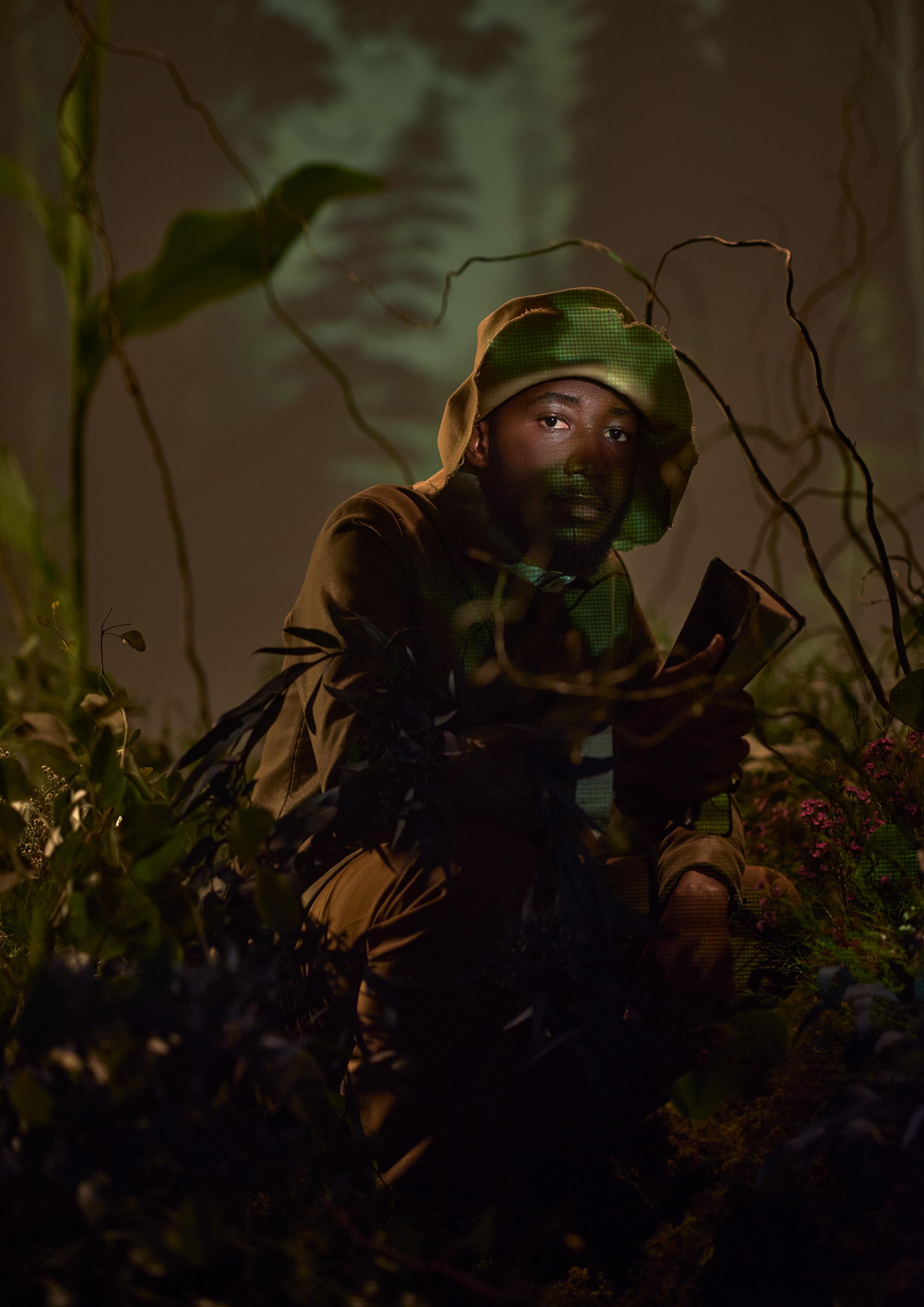
WHERE DID YOUR JOURNEY BEGIN?
It all started for me when my cousin came from Ghana to South Africa to find greener passages. So, we tried almost everything. There was a point when I worked at an internet café and it got to a point where I wasn’t seeing anything with the business and my boss was not willing to push up my salary. I was spending all my money on transportation to work. It just got to a point where it was really tough and one of the ladies at the workplace saw I was good with computers and I started assisting her with car registration, taking pictures and getting papers signed. She was also struggling to pay me. So, my cousin who studied graphic design back home in Ghana was trying to get a job in graphic design but it was tough at the time so he ended up assisting someone in carpentry. We would laugh and say like even in your own country you wouldn’t be working as a carpenter so the struggles are so tough where you have to take certain decisions that you’re not comfortable with but you have to do it to survive. My cousin suggested we buy a camera, and said that someone back home taught him a few things. So, we ended up having to lay-by it for 3 months and on the 3rd month we didn’t have money to claim the camera, we had to borrow money to pay it off and then pay the person back. So, basically we were working to pay the person. My cousin was getting tired of living that life and wanted to go home. God had a plan because as soon as he left my career started picking up and I started learning a lot and meeting a lot of people. I never thought I’d become a photographer. This was a gift given to me by God. Everytime I touch the camera it feels like a different world I’m able to create to my full expectation. Ever since that day I’ve just been moving crazy with the holy spirit. The only thing I can relate to besides the camera is the bible.
YOU CREATE THESE OTHER WORLDS THROUGH YOUR WORK. IS THIS YOUR HEALTHY DOSE OF ESCAPISM?
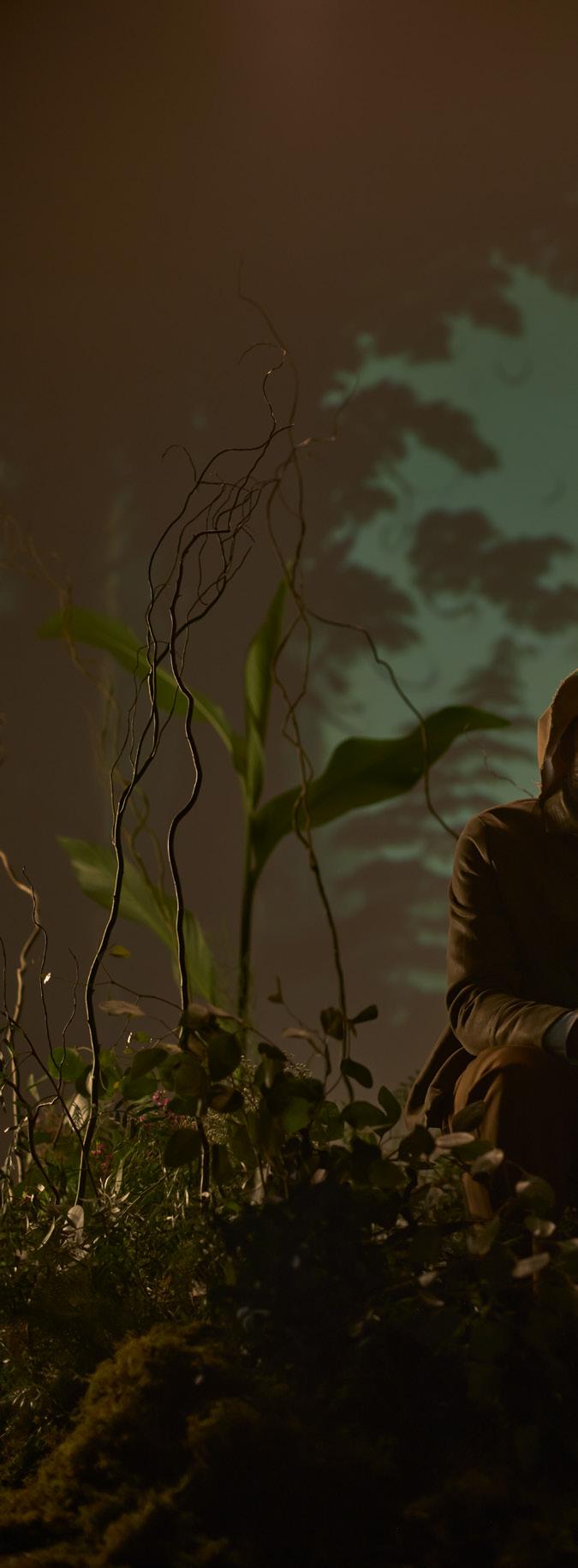
When it comes to that I work with a friend called Nathaniel who does the CGI work. I remember the first job we got together - was when there was a girl that approached me who wanted to be in a wine glass. So, I approached a friend and told him I really think he could pull it off, and this is what this girl wants. The first attempt came out crazy. CGI has helped photographers to create imaginary worlds. To be able to build a whole new world. Ever since that day my friends and I’s lives have not been the same. He’s been doing a lot of work for artists in the industry and I’m really happy. We ignite something for people to grasp.
WHAT SUBJECT MATTER, SETTING OR ELEMENTS APPEALS TO YOU MOST IN A BODY OF WORK?
I think lighting. I think lighting plays a huge role in an image in terms of placement of subjects, how you’d light the image, where you’d want it to be contrasted and where you want the light to bounce off. Also, whether you’d want to create shadows and shapes with lighting. It’s something that I really pay attention to. If you look at the CGI work we actually light it the way it should look on post production.
88 ISSUE13 IQHAWEMAGAZINE
“Every-time I touch the camera it feels like a different world I’m able to create to my full expectation. Ever since that day I’ve just been moving crazy with the holy spirit.”
A CREATIVE PROCESS IS A REFLECTION OF THE MANY THOUGHTS THAT WILL COME OUT INTO A FINAL PRODUCT. WHAT DOES YOURS LOOK LIKE AND DOES IT GIVE YOU A CHANCE TO REALLY UNPICK AND UNLOCK PARTS OF YOURSELF?
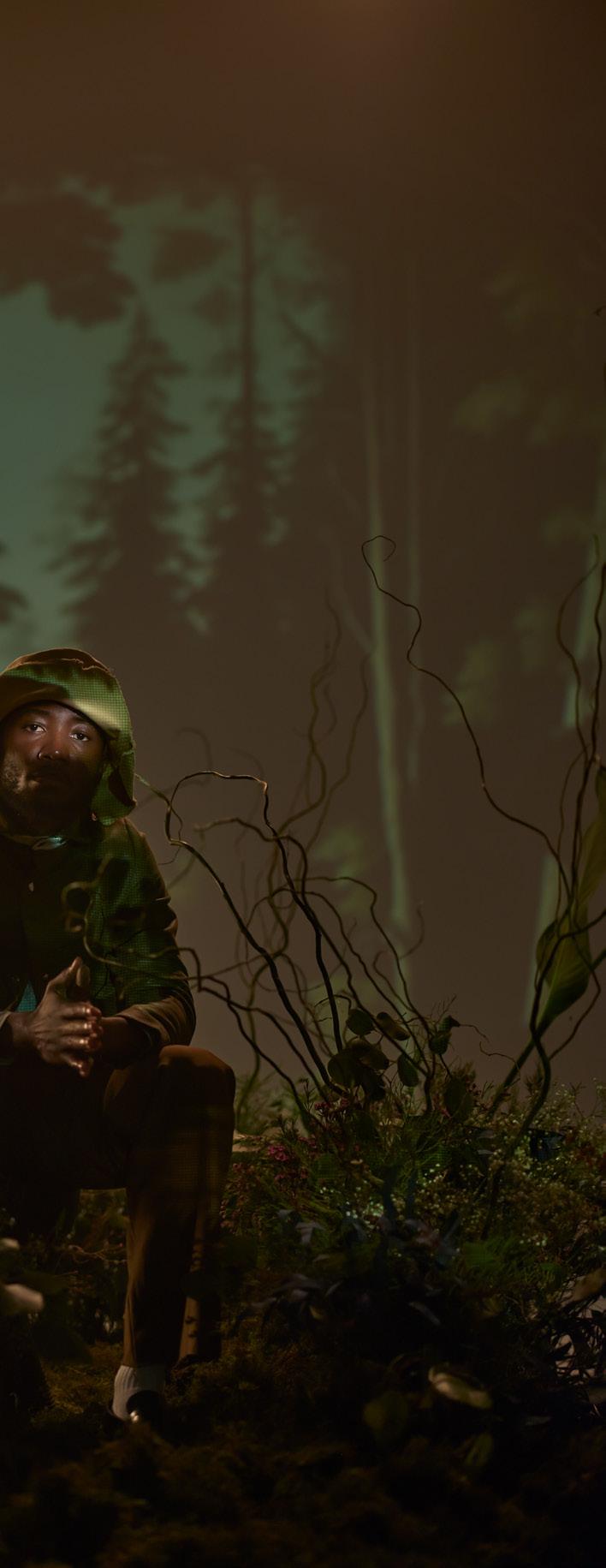
I like to have my creative process in control. I shoot my own images, I retouch my own images, I colour grade my own images. I have full control. I edit each image according to how I feel at the moment. Each image has a different colourtone and colour-feel. What happens in my creative process is that I start off by going through the images and doing selection. I think selection is a big and significant part of photography. You can take so many pictures but if you don’t know how to select you fumble. You should have an eye to pick the images you want to print. From there I colour grade and use Capture One and Photoshop, to retouch and do effects. If it happens that I want CGI done I will just call up my friend and tell him what I want to be done.
WHAT LEAVES YOU SATISFIED WITH A BODY OF WORK.
I think there’s times when I’m not satisfied. But, I would show friends and ask them “what do you think of this?” I normally hit up my friend David Black and ask him what I should change. So, it’s an on and off thing . There’s days where you’re satisfied and then there’re days where you’re not sure. As an artist it’s okay to feel that way. Sometimes your ‘not sure’ is great to people out there.
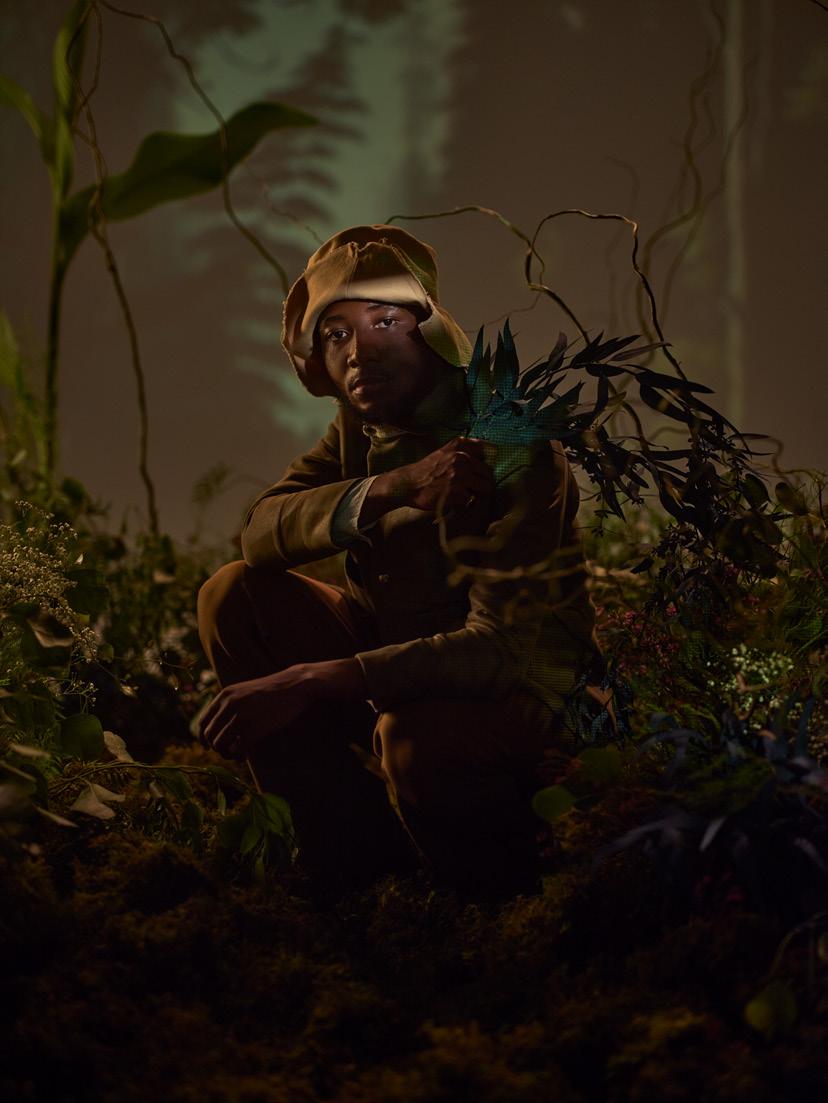
WHERE DOES SOME OF YOUR INSPIRATION LIE THESE DAYS? WHAT HAVE YOU BEEN WATCHING, READING, OBSERVING ETC
I’m not observing much. I watch YouTube channels to educate myself in certain skills on photoshop or certain skills in lighting. I remember I woke up one day with ideas of what I want to create in my head. I could just walk and see images of something I would want to shoot without finding any reference images of it on Pinterest. There’s a project I’m working on in the pipeline. I’d like to have my own exhibition this year. I had a dream of something I really want to touch the world with. I had a conversation on set with someone and they were like I should make an AI thing where people can wear goggles and actually feel like they’re in the image because the image is 3D. So, imagine an exhibition in 3D format where everyone feels like they’re in the image. It was a dope conversation.
89 IQHAWEMAGAZINE ISSUE13

KATLEHO MAVUNDLA
“You can not travel within and stand still without” these words by philosophical writer James Allen really sums up my takeaway from the conversation with Photographer Katleho Mavunda. It’s a realisation that as we unfold and grow through seasons of change, our outer reality will project these circled moments of shifts that happen within. Katleho LATCHES ONTO WHAT HIS CREATIVE EYE MAY REVEAL TO HIM AND HE WELCOMES IT. He takes one medium and translates it into another and another. This he calls is a ‘Transdisciplinary’ approach to his work. As a big communicator with an intuitive nature, Katleho is on a journey to get sharpened in his craft as he exists through a bag of his talents.
Instagram: @katleho_theguy
91 IQHAWEMAGAZINE ISSUE13
WHERE YOU’RE FROM AND WHERE IT STARTED FOR YOU?
My name is Katleho Mavundla. I’m a brother, I’m a son. I’m an imaginer, I create worlds in my head. I’m inspired by art and I think that’s one of the reasons I’m able to participate in it. It inspires a lot of my everyday life. I feel like a lot of things happen in my life and then they meet a point of completion and then other new parts of my life…… so far Facebook * I have a very strong spiritual background. That means every Sunday I’m looking good. My mom made sure I look good everyday for church and that was one of the days I capitalised on taking a lot of pictures and so started the journey of being involved with the art space. I always tell people when tumblr was a thing I never had tumblr but then I used to recreate pictures that looked like they came from tumblr. So I’d take my own picture, add a couple of layers, add tumblr and add my address (zendaya error).
I went to film school later in my life. That chapter of my life opened where I looked at photography differently. It was the first time I looked at photography technically. I went through varsity. When I did my internship *** I was exposed to a world where you have to compress time, and compress time into two minutes or a minute of a commercial. So, that technical understanding allowed me to understand what I wanna create. I wanted to hop into the space as my own director in my own language and own kind of stories. That’s led me to capturing portraits of people’s d then capturing time. It’s been a learning experience.
ANY PROJECTS YOU WORKED ON THAT WERE VERY SIGNIFICANT TO YOU AND SHOWED YOU YOUR STRENGTHS AS WELL AS YOUR WEAKNESSES?
Even I don’t think there’s a project that changes me. I’m really rooted in being a student so I think I really learn from what
One thing I appreciate is that there’s always something to learn. Sometimes I’m figuring out a logistical problem that I could solve next time. Other times I’m solving casting problems and Sometimes it’s the environment because I also shoot event photography and you have as little control as the person you’re shooting. Everything has taught me something different to an extent that photography has taught me people skills where I walk up to people and ask “could I grab a picture of you”. In a world of multi hyphenated artists I really consider myself a trans disciplinary artist
YOU MENTION THAT YOU GO INTO OTHER WORLDS WITH YOUR WORK. WHO ARE YOU IN THOSE IMAGINATIVE WORLDS THROUGH ESCAPISM?
I get bored easily. I don’t know if it’s because I’m a Gemini. Towards my work and towards the things that I wanna do I always have this childlike approach so first it has to make me excited. I need to know that when someone makes me angry I can run to this thing that makes me feel safe. For instance with my poetry, it’s what’s always made me feel better and I feel like I’m expressing myself. Even with photography, when I document people there’s this childlike anticipation of “I wonder what this picture is gonna look like” or like I wonder how people are gonna see what I see and if it translates. For my film it allows me to tap into worlds that I see everyday. Some of them are wolves that I’m not a part of anymore, some are worlds that I want to be a part of, some are worlds
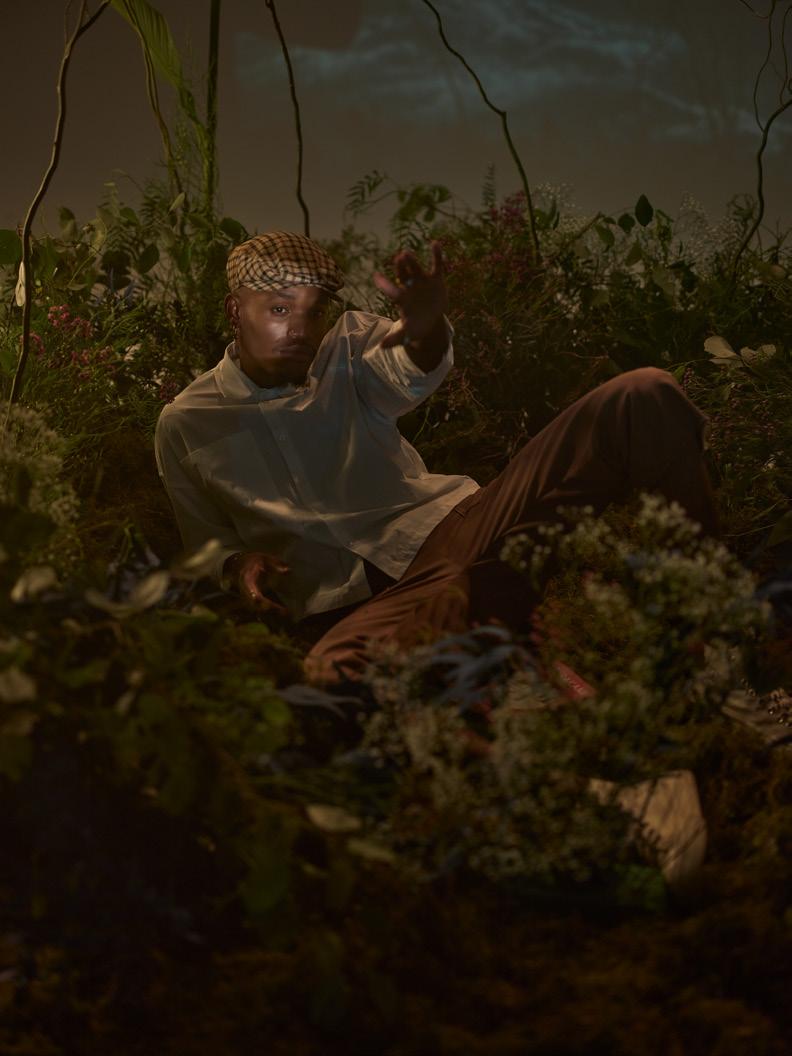
92 ISSUE13 IQHAWEMAGAZINE
that my friends are a part of. That childlike approach allows me to have fun. It feels safe. It feels risky as well because you never know who is welcoming of this child.
WHAT’S SOME OF THE TECHNIQUES YOU USE TO PRODUCE A SATISFACTORY BODY OF WORK?
I’m really driven by emotion and I really want to portray a lot of emotion in the work that I do. My writing is influenced by sad love stories and with portraits I want people to see the person’s emotion. In my film work too, someone’s eyes could show so much emotion: lust, fear. So moving to portrait photography was a more appreciated transaction from what I normally do. The technique for me is to always look for emotion and recreate the emotion. Emotion has been the core. Anything else for me is a medium of technique. But the technique right now is to show emotion in my work and allow myself to be a catalyst of emotion.
YOU EXPRESS YOURSELF THROUGH POETRY TOO. IS THERE ANYTHING ELSE YOU DABBLE IN?
A skill that I’m developing right now is Film Directing. I’m writing a script right now called ‘Portia’. So, writing and directing for short feature films is part of my goals as I grow as an artist. That’s why I say in a world of multi-hyphenated artist’s I’m transdisciplinary because everything I do informs everything. I can take a short poem and turn it into a longer script and turn that into a longer film or translate it into copywrite, which

can be a creative direction. A transdisciplinary approach to my artistry and my growth. The biggest thing about that theory is that it centres me as a student more than it makes me a master.
WHAT’S A MANTRA YOU GO BY THAT GETS YOU BY?
To service people with the God given skills that I have. I do think I am at a point where I hope to grow my community and grow people that will hear the message that I have. So, servicing those people who get to touch and view my work. If my work is going to start a revolution or if it’s going to heal a broken heart and make one less nigga feel like heartbreaks are the most terrible - to look at me and be like I also went through heartbreaks. I’ve tried to put my work into 3 pillars and that’s communication, community and connection.
LET’S TALK ABOUT COMPOSITION. IS THERE A SPECIFIC WAY YOU ARRANGE VISUAL ELEMENTS WITHIN YOUR FRAME? OR IS IT SOMETHING YOU DECIDE ON SET AND IT UNFOLDS RIGHT THERE AND THEN
A recent obsession you want to bring forth in front of the camera? Or subject matter you wish to play around with? I’m a real firm believer of love. I’m a healthy amount of simple. I love love. I love seeing people thrive in the presence of love. I have this long existing obsession which I’m currently refining. In the time of refining I think I’ll get to a point where I can present it to its utmost truth and my truth.
93 IQHAWEMAGAZINE ISSUE13



THABO KOPELE Asymmetric Collar Shirt – R950 | Zig Pleat Skirt – R2500 | Dress Trouser (Suit) – R2000 | Aysmmetric Blazer – R4300

LONG SEASON LS Button Up Shirt – R1800 | LS Silverzip Trousers – R1000 | LS Alice’s Hat – R600
DIGITAL ARCHIVING
Interviews by Renaè Mangena
Written by Renaè
Whether it is through internet memes, highly pixelated pictures dating back to the early 90s or intentional means of historical documentation. The visual documentation and preservation of our present is extremely important to our future remembrance. A couple of months ago I was scrolling through my Instagram when I came across a post from Thuthukani Myeza’s Instagram account which he has titled ‘OnlyForDisplay,’ I remember being taken by the work that was on the page. A beautiful digital documentation of black people’s history that was not reflective of their struggle, after having had the conversation with him and hearing him say
IT REMINDED ME OF A PIECE I READ A FEW YEARS AGO TITLED A PICTURE IS THE BEGINNING, A REMEMBRANCE OF SANTU MOFOKENG’S LIFE AND WORK ON AFRICA IS A COUNTRY, WHICH READ:
“there’s a certain humanity in the work of late South African photographer Santu Mofokeng in how he approached his subjects and the politics of representation. Which also remedies an image from the now viral sensation CloudFolks, which is run by Thabiso Ngobeni. The common thread in the work that both Thuthukani and Thabiso are doing is the digital documentation and archiving of black history in the present. Whether through well-constructed collage images that tell a story of our ancestors or capturing black people in mundane spaces. I think it is extremely important that young people document their present state of being as done by those before them. There is so much richness in the representation of black figures in the state of being, as they love, laugh, dance, or simply exist. These images became how we remember our present and preserve our existence on this earth, while doing away with colonial past representations of us.
97 IQHAWEMAGAZINE ISSUE13
“What I am showing you is your ancestors. I am showing you the beauty of your bloodline. I am showing you the richness of your identity, and that’s the beautiful stuff.”
Mangena
“If you don’t cement yourself in the present, you will die forever”
LEAESTHETIC Thuthukani Myeza
98 ISSUE13 IQHAWEMAGAZINE UBIZO
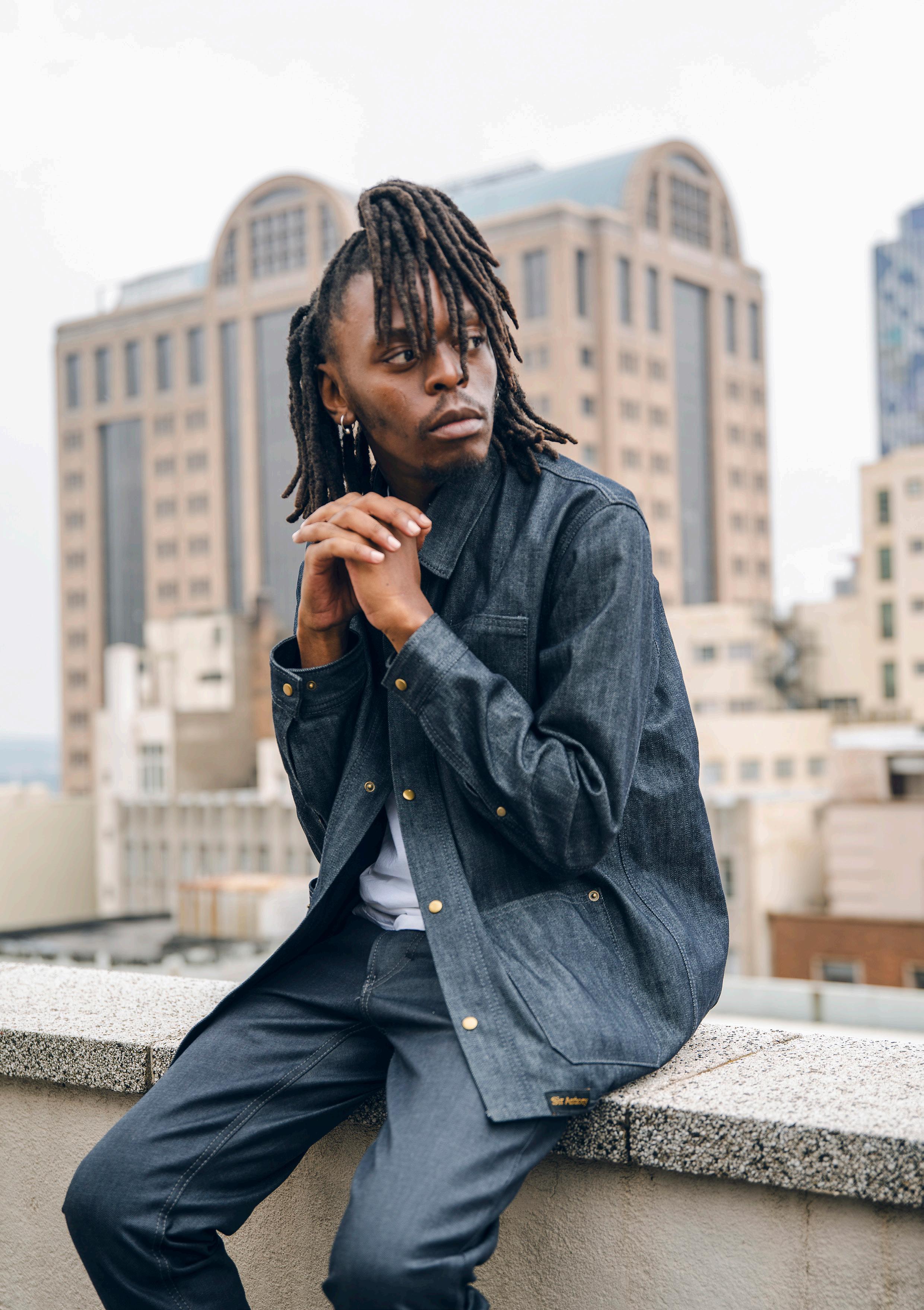
PLEASE TELL ME MORE ABOUT WHO YOU ARE AND WHAT YOU DO?
I am a multidisciplinary artist and copywriter from Johannesburg, currently based in Cape Town and the creative curator of the World of words, Africa’s freshest poetry house. I write and I create visual artwork. I curate experiences, I am also a megalomaniac and music is the epitome. It’s my love language. So that’s my calling.



HOW DID YOU GO ABOUT TURNING YOUR TALENT INTO A CAREER?
So it depends on which medium, but we’ll take the broader scope of being creative. I was in primary school and for some time I got into Greek philosophy very early. It was a weird situation at school, but I got into Greek for us, very early and as cliche as it is, I started worrying about the purpose of life and everything I’ve read about. I’m just out here, like what is the meaning of everything? What is the purpose and like, and all my readings? And suddenly it came to me. Yeah, it was like the purpose was to create it. You create the purpose and you stick to it. So I was like, I want to create, that’s my purpose. That’s my life’s purpose. At that moment in time, that little kid was like, Yeah, that’s what I want to do, and that was the moment. Ever since then, I’ve chased anything that brought me closer to creating the medium. A writer, a poet, and I never stopped writing. I kept on writing when I moved to Johannesburg. I think I got more exposed to the poetry scene there. I started building my way up. I really started building my way up and the whole time while I’m doing school, long story short and ended working as a copywriter.
WHAT IS THE IMPORTANCE OF YOUR WORK? HOW WOULD YOU DESCRIBE IT, AND WHAT IS ITS PURPOSE?
I am working with memories and portions of time and re-creating these memories into a different space, a different time for a different message. So, at any point in time, from my work, outside of my own emotional influence, but at any point in time, what you will find is culture. What I think you are seeing is your past just in a different gaze again, back to my analogy of memories
100 ISSUE13 IQHAWEMAGAZINE
“I think I am showing your memories. I am showing you the richness of your history, and it’s what the potency of your culture is.”
A big fight that I feel is in my work is the fact that, in history books and in school, we don’t go back to the more it’s like history are deprived of the stories and the imagery of our histories from so such an early age that even if you’re on the ground in the New Age, where everything is infinitives, it’s still hard to find. I am haunted by the ghosts of revolutionaries who did not make it to beyond notes or have streets named after them or be lines and textbooks for the bodies that flooded the streets and are not remembered. My work is also a big part of the racial stuff that I do. I like a lot of my work when dealing with racial tension is for that, it is to remind you of the atrocities of being black, of what it means of how we inherit our wounds, and we inherit this history. But there is no healing this wound, and it should not be forgotten. So that’s what I feel as well as decolonizing our identity and, it’s a part of my artist statement as well our history is still owned by the people who stole it. Every archive is in some university of the black child would probably never get to attend.
WHAT IS THE INTENTIONALITY BEHIND BLACK FEMALE REPRESENTATION IN YOUR WORK?

Most of my subjects are female male. I think it’s a common threat because that’s the most powerful figure in African history. It’s women, there are more archives of African women and there are men. I put some money on it. The closest thing to God or some of the closest people that exert the power and the majesty that is God or a higher deity is women. One of my pieces and African women are the custodians. And, um, what is this, uh, keepers of African culture and tradition? It’s intentional because we downplay their role, like in modern society and one South African culture being predating colonial times. But my emphasis is just on that because, like the females and themselves are godly, they are the closest thing we have to an entity way beyond us. I always feel like they made men as a prototype to test if the idea of a woman would work. That’s just a belief. We’re just a prototype to see that it’s possible, all right, let me make the real thing. And so it is intentional. I am very much intentional in having women. I wasn’t aware until someone actually pointed it out to me. It was subconscious. I only know as much as the work lets me know and as I discover it, But when going back, there is nothing as godly and as sovereign as and as majestic as a Black woman. There is nothing as magical as that. Always powerful, even like so. I know no discrimination against any other ethnic groups. But for me because I grew up around black women. I spent a good portion of my life surrounded by black women, and it comes off in my work.

101 IQHAWEMAGAZINE ISSUE13
102 ISSUE13 IQHAWEMAGAZINE
CLOUDFOLKS



104 ISSUE13 IQHAWEMAGAZINE
PLEASE TELL ME ABOUT WHO YOU ARE AND WHAT YOU DO.
My name is Thabiso Ngobeni. I am the founder of CloudFolks and a self-taught graphic designer and photographer. I work with creative writing books. Although it’s amazing, I can say it’s a hobby, and something that keeps me going.
LET’S TALK ABOUT CLOUDFOLKS. WHAT DID YOU WANT TO DO WITH THE PLATFORM AND WHY DID YOU THINK THAT THIS IS SOMETHING THAT NEEDED TO EXIST?
This guy inspired me called Ivan Khumalo in Johannesburg back in 2010. I was inspired because he was posting images of different things you saw around him. I didn’t know that was something I wanted to do, So I created an account on Instagram, but I never thought that it would reach so many people because I want to put something that’s unique. The CloudFolks account started growing last year and I think the magic happened in February last year; we went from 1000 followers to 10,000 followers in that month alone and then we went to 30,000 and now we are sitting at 40,000. It’s quite amazing because it has all been organic.
WHY THE NAME CLOUD FOLKS?
IThere are so many things I was thinking before I came up with the name. I think I just wanted something unique or an image that doesn’t exist and I love clouds, so it just made sense.
WHAT IS THE INTENTION BEHIND USING THE NGUNI, ZULU LANGUAGE FOR THE COPY OF THE IMAGES?
My intention is to preserve the language we have. But at first I thought it wasn’t much. In the beginning, I had the feeling that people were going to engage with the content because they could not relate to it. But after I started posting, people took an interest in the content and the way it was written. I really appreciate that people could understand what I wrote and engage with it in such a manner.
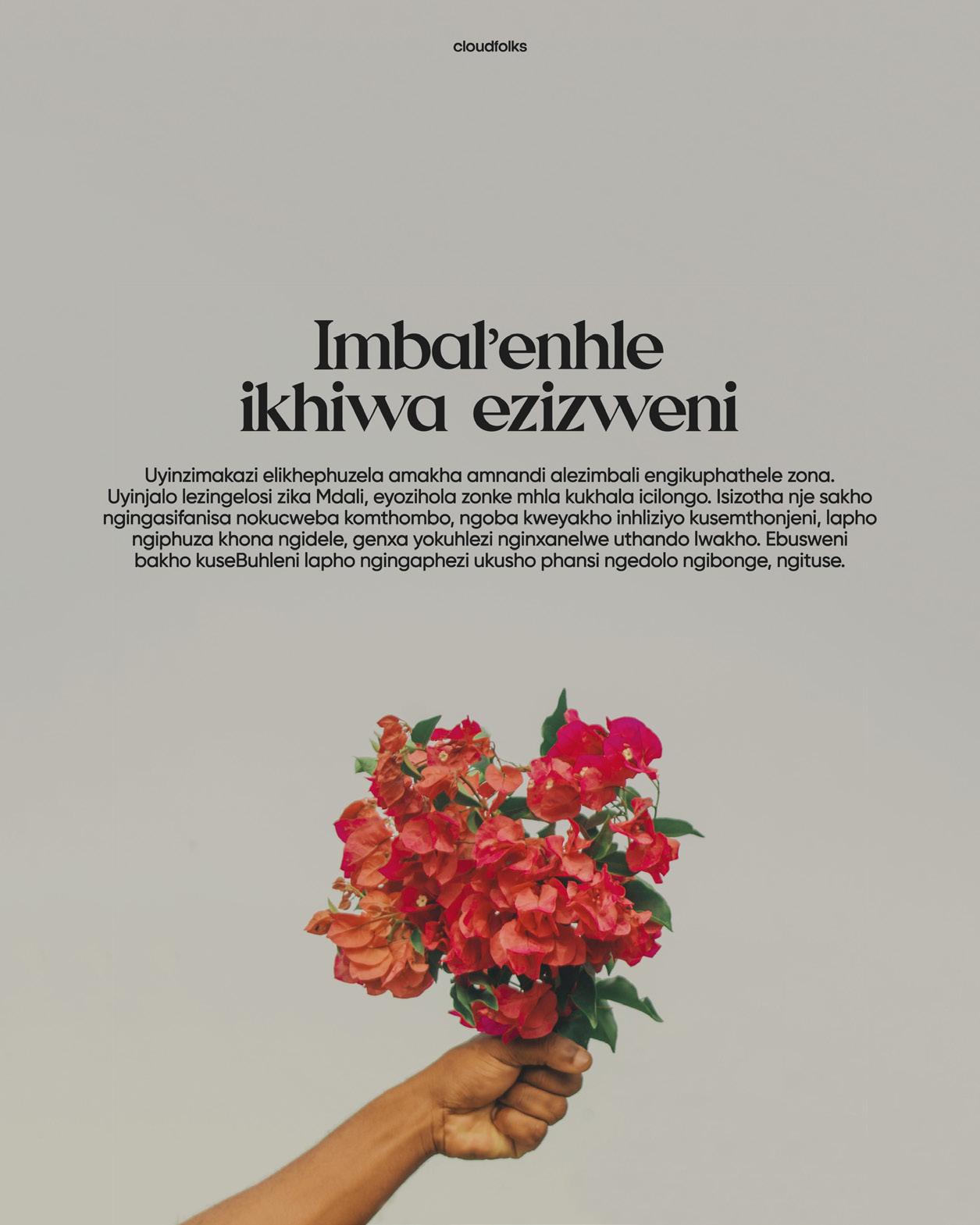
105 IQHAWEMAGAZINE ISSUE13

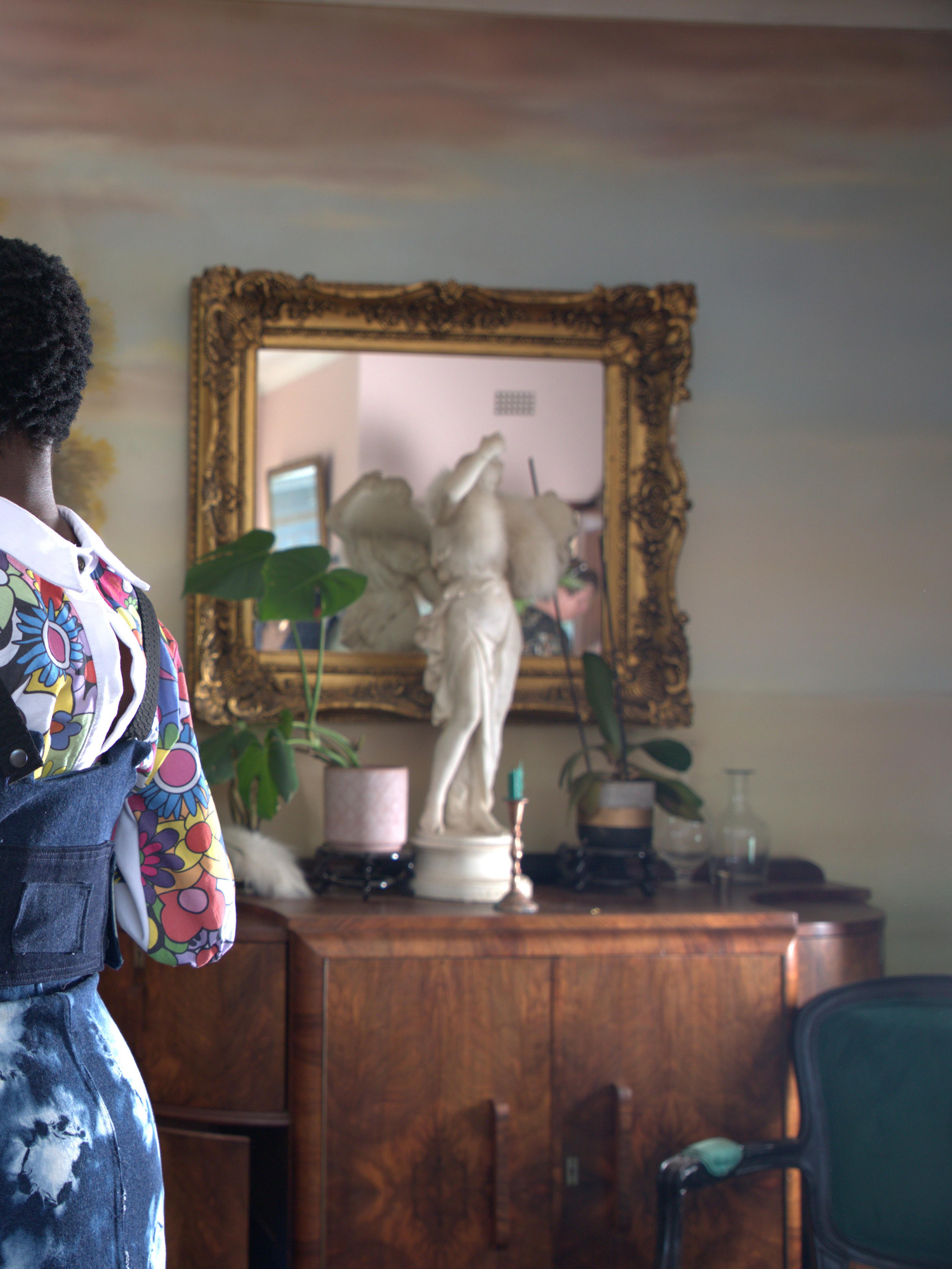


IQHAWEMAGAZINE.COM ISSUE.COM/IQHAWEMAGAZINE INSTAGRAM.COM/IQHAWEMAGAZINE TWITTER.COM/IQHAWEMAGAZINE FACEBOOK.COM/IQHAWEMAGAZINE YOUTUBE.COM/IQHAWEMAGAZINE
This issue was proudly sponsored by the Department of Sports, Ar ts & Culture Special Thanks to Creative Nestlings, 99 Juta and Glow Hire Studio












 Flowers From Above March 2021
Flowers From Above March 2021
































 Interviews by Michè Edwards
Interviews by Michè Edwards






















































